

50 Essential travel tips for first time backpackers visiting Southeast Asia
- July 27, 2023
- curious goose
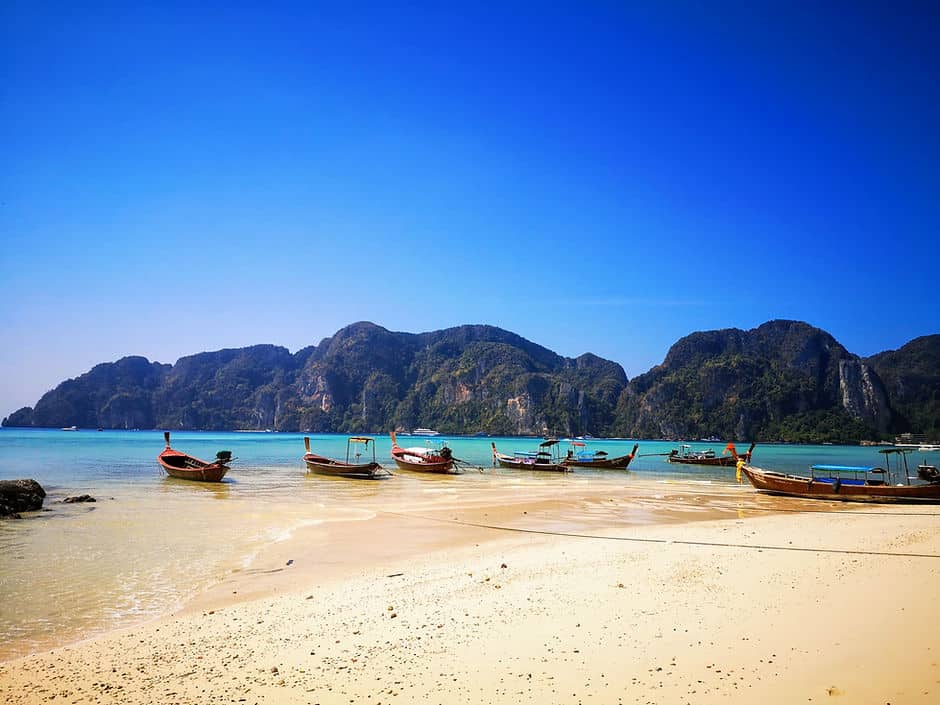
This post may contain affiliate links. I will receive a small commission if you use these links.
Make sure you read these essential tips for Southeast Asia to help plan your trip.
Southeast Asia is one of the most popular destinations for backpackers. It’s easy to see why – gorgeous sandy beaches, cultural temples, delicious food and bustling cities makes for an attractive mix. It’s also a safe and cheap place to travel, meaning that Southeast Asia is a great place for first time travellers getting to grips with backpacking and those on a budget.
Southeast Asia has been on my bucket list for years and in 2022, I spent 7 months travelling in Thailand , Vietnam , Cambodia, Malaysia and Indonesia. Based on my experience, I’ve put together 50 essential travel tips to help you plan your trip to Southeast Asia. These tips cover everything from what food and drink to avoid, to how to keep track of your budget while travelling and travel hacks to make life on the road easier.
These travel tips for Southeast Aisa will prepare you for a great trip and hopefully help to prevent you from getting into any tricky situations!
50 Essential travel tips for first-time backpackers visiting Southeast Asia
Practical information for travel in southeast asia, managing your budget and finances when travelling in southeast asia, top tips for getting around in southeast asia, food and drink in southeast asia, local cultures and traditions in southeast asia, travel health, packing tips.
- Lastly…things to remember when travelling
Travelling takes a lot of organisation and planning. Here’s a few hacks to help you have a smoother travel experience.
1. Get yourself a sim card as soon as you land
Often the best sim card deals can be found in the arrivals hall at the airport, with a ‘tourist sim’. I’d recommend getting a sim card as soon as you arrive in the country, especially if you are taking public transport from the airport / ferry / bus terminal to your accommodation. Most likely, you will be dropped off at a location in the centre of town (or at the side of the road as I experienced several times!) and having the internet to figure out where you are is very helpful.
2. Download an offline version of google maps before you arrive at a new place
Even if you have a sim card with data, you might not always have a signal to access the internet. Make sure that you download an offline version of google maps, covering the area you are travelling to. You might need to download several if the area you are travelling to is vast. Another handy tip is to ‘pin’ key locations onto your map, such as your accommodation, attractions, bus terminals and places to eat! That way, if you can’t access the internet you’ll still be able to find your way to key services and attractions.
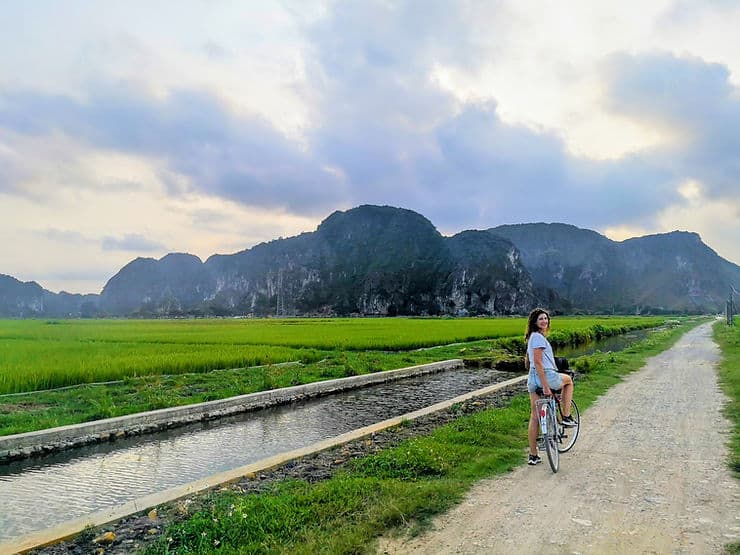
3. Screenshot or note down your accommodation booking confirmation and address
Don’t rely on being able to access the internet to retrieve the information of your accommodation. You’d be surprised how many travellers get off a bus in a new town and don’t know the address or even the name of the place they are staying at and can’t access their emails as they don’t have internet! Take a quick screenshot of your accommodation and travel bookings, or write the important information down in a notebook or in the notes folder on your phone.
4. Print any important documents you need to enter a country
For entering many of the countries in Southeast Asia, you’ll need a visa (and may need other supporting documents too). It always helps to have a printed copy of any important documents as well as the electronic version on your phone. This way, if your phone gets lost / stolen / runs out of battery, you’ll have a backup copy. If you are travelling between countries, your hostel or hotel might be able to print documents for you, or they can usually point you in the direction of a printing shop.
5. Be aware of scams
Travelling in Southeast Asia is an amazing experience and most of the local people you meet will be welcoming, friendly and helpful. However, you will also encounter locals who will try to take advantage of travellers. The most common scams usually involve taxi or tuk-tuk drivers, or money exchange kiosks. When travelling around in Southeast Asia, always negotiate the price and be clear on what the price covers. Only change money in authorised exchange kiosks – your accommodation should be able to help you with this.
How do you know if something is a scam? Usually you can tell if something doesn’t feel right. If you don’t feel comfortable and are unsure, just say no and move on. It also helps if you do your own research and plan beforehand. For example, if you research how much a specific A to B journey should cost in a tuk-tuk and the price you are being quoted is over double, you know they are trying it on.
6. Don’t put tissue paper down the toilet
As a general rule, putting tissue paper down the toilet is a no-no in Southeast Asia. There are some exceptions to this rule, for example in more modern, and usually more upscale resorts. However, in most places, the pipes cannot cope with the paper and they will block, which is not nice for anyone. Use the bin provided or embrace the water gun!
7. Read reviews
Whilst it’s not a good idea to get hung up on one negative review out of 10’s of positive ones, reading reviews is definitely worth doing. Whether this is for accommodation, attractions or transport. Filter the reviews to ‘Newest first’ and make sure you know what to expect before you part with your money.
8. Check the weather when planning your trip to Southeast Asia
Generally speaking, October – March is the best time to travel in Southeast Asia as this is the dry season and the weather is cooler and more manageable. However, research the individual countries you want to visit to plan which month would be best for you to travel.
9. Plan your route but allow for flexibility
Whether you are visiting one country or several countries in Southeast Asia, plan your itinerary beforehand. Having a rough plan of your route is a good idea so that you have an idea of what you would like to see within your time frame. However, don’t be rigid with your plans. Be flexible and embrace opportunities to visit places you hadn’t included in your original itinerary. Having unexpected experiences is one of the best things about travelling!
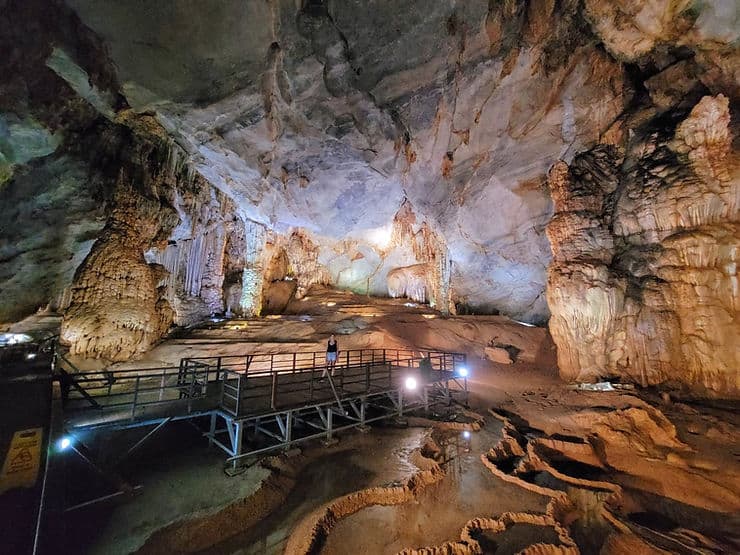
Budgeting for your trip is one of the most important things you can do, both before and during your travels. Make sure that you read these top tips to help you manage your budget and keep track of your spending when travelling.
Need help saving for your dream trip? Check out my 12 super simple tips for how to save for full time travel
10. Have a couple of good debit cards
One of the most important things you will need when travelling is a safe way to access your money. Instead of using your normal bank debit card, which may have expensive fees for use overseas, get yourself a new debit card, purely for travelling. I use a Starling Bank debit card, but I’ve also heard good things from travellers about Revolut and Monzo too. Instead of having all your money on your travelling debit card, simply ‘top it up’ when you need and keep just a small amount on the card. That way, if you lose the card, or it gets stolen, you don’t risk losing a lot of money. For this same reason, having two debit cards you can use in this way is also a great idea (just make sure you keep them in different places!).
11. Pay for large items on a credit card
When booking things like accommodation, travel (especially flights) and activities, always use a credit card. Credit cards offer a much higher protection on spending and if something goes wrong with the supplier (for example, if the service provider goes out of business), your credit card company can help you to claim your money back. I have a Halifax Clarity credit card which is great for travelling and using abroad. Shop around and find a credit card with low or zero exchange fees or charges for using it overseas.
12. Always carry some cash
When travelling in Southeast Asia, it’s a good idea to always have a bit of cash on you. If you are travelling to more remote areas, or buying something from a local shop or stall, you will need to pay for it in cash. Just be aware that many of the ATM’s in Southeast Asia charge for withdrawing money and they have a limit for how much you can withdraw, which is annoying!
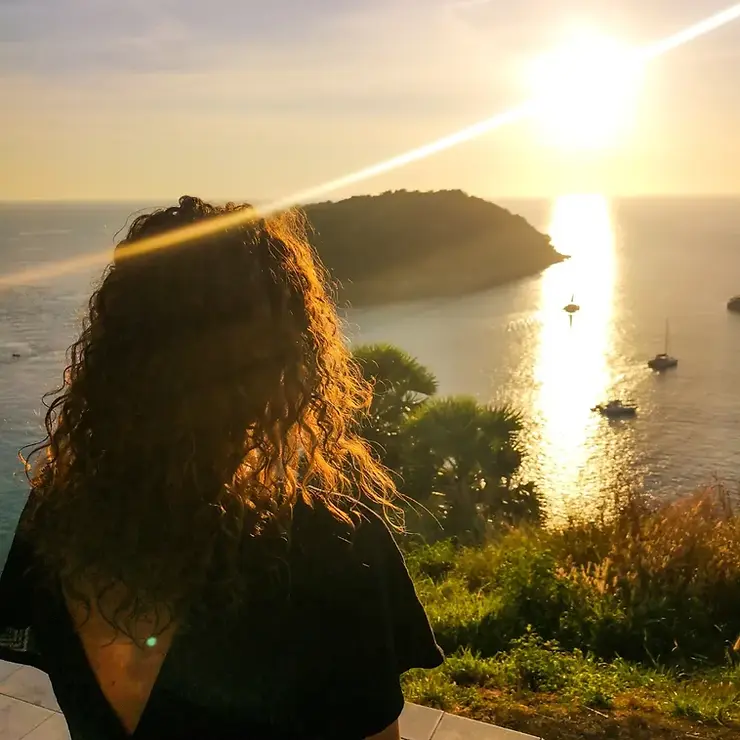
(Image: Windmill Viewpoint, Phuket, Thailand)
13. Make sure you can access your bank account if you lose your phone
Most of us manage our bank accounts via an app on our phones. However, what happens if your phone is lost or stolen? Make sure that you know how to access your bank account online or over the phone.
14. Set yourself a travel budget and track your daily spend
Possibly THE most important element of travelling is budget management! It doesn’t sound exciting (and it’s not!), but it’s vital if you don’t want your trip to end abruptly because you’ve run out of money.
When planning your trip, do your research and set a daily budget. This should be based on the prices of accommodation, food, transport and activities in your destination and also what kind of experience you want to have (on the scale of budget backpacker – luxury holiday). Read my step by step guide on How to budget for full time travel and create your own Travel Budget (you can also download my FREE Travel Budget Spreadsheet Template).
Make sure you record your daily spend to keep you on track. I use the free version of @travelspendapp . Managing your budget means that if you’re careful in some places, you can splurge on more expensive trips in others, such as an overnight luxury cruise to Halong Bay in Vietnam
15. Take advantage of travel rewards programs
There are plenty of rewards programs available to savvy travellers. One of my favourite reward programs is the Booking.com genius program. The more qualified bookings you make through your Booking.com account, the more genius points you can earn, which can get you discounts and upgrades on certain hotels, transport and experiences.
Another great rewards program, if you are from the UK, is Topcashback . Simply login to your Topcashback account and make your booking with one of the travel providers via the Topcashback site to earn cash back on your purchase.
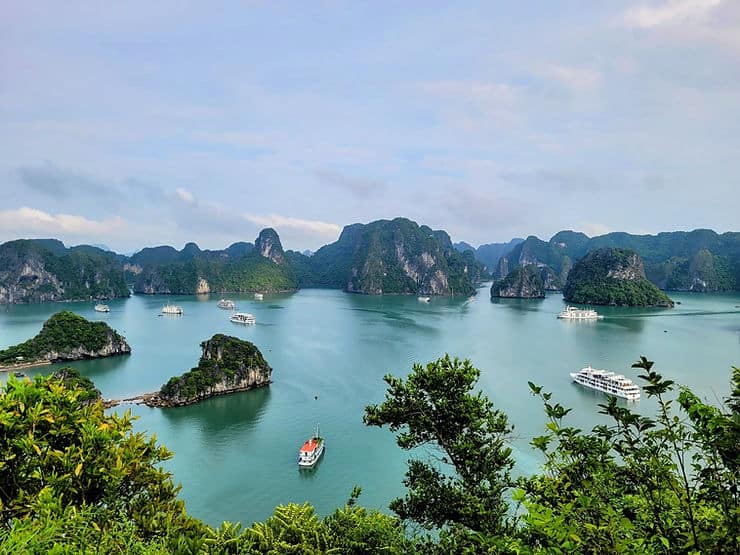
Southeast Asia is a large, diverse continent and even the individual countries within Southeast Asia are massive, so you’re going to want to travel around and explore as much of it as possible. Getting around in Southeast Asia is not always the most straightforward, so here’s some tips to help you navigate public transport.
16. Shop around for the best deal on public transport
During the 7 months I spent in Southeast Asia, I booked a lot of my bus and ferry journeys online. One of the best booking platforms for transport in Southeast Asia is 12go . Camboticket in Cambodia is also another good option. (For booking tours, Viator , Get your Guide and Klook are all great platforms). But don’t just rely on websites. Speak to your hotel or hostel and get their advice. Sometimes they can tell you about transport routes or tour companies that don’t appear on the larger comparison websites. Whatever you are booking, shop around and get a couple of prices for the best deal.
If you are travelling a longer distance, or between countries, don’t assume that travelling by plane will always be more expensive. Sometimes a flight can be cheaper, or a similar price to a long distance train, especially if you have carry-on only bags. It’s also worth taking into consideration the journey time. If a flight is only £30 more but takes 14 hours less than the bus, it may be a better option for you.
17. Travelling from A to B is not as easy as it sounds!
Travelling from A to B sounds easy (and it should be!), however travelling from A to B in Southeast Asia usually ends up being a lot more complicated than it needs to be! Don’t be surprised if you are asked to change buses several times throughout your journey as different drivers and companies take over each section of the trip. I took a journey in Thailand from Railay in Krabi to Koh Samui which took 12 hours and consisted of 1 boat, 5 buses, 1 ferry and a taxi (which was 4 more buses than expected!) Try to stay patient and go with it, it won’t make you feel any better getting stressed about it.
18. Give yourself plenty of time for transfers
As I’ve mentioned, travel in Southeast Asia is usually not a simple process. Often journeys depart later than scheduled and will take a lot longer as the drivers make random stops along the way. If you are planning a journey that has transfers with different companies (for example, a bus journey followed by a ferry), make sure that you leave plenty of time between each leg of the journey, as you are most likely going to be late!
19. Prepare for delays or things to go wrong
You can see a theme emerging here! Most journeys in Southeast Asia are late, or delayed, or there’s been a miscommunication with your booking. Try to be patient and polite with the locals. Most local people I encountered in Southeast Asia were incredibly warm and friendly and willing to help. So, be respectful and don’t be rude if things don’t go to plan, it’s all part of the travelling experience!
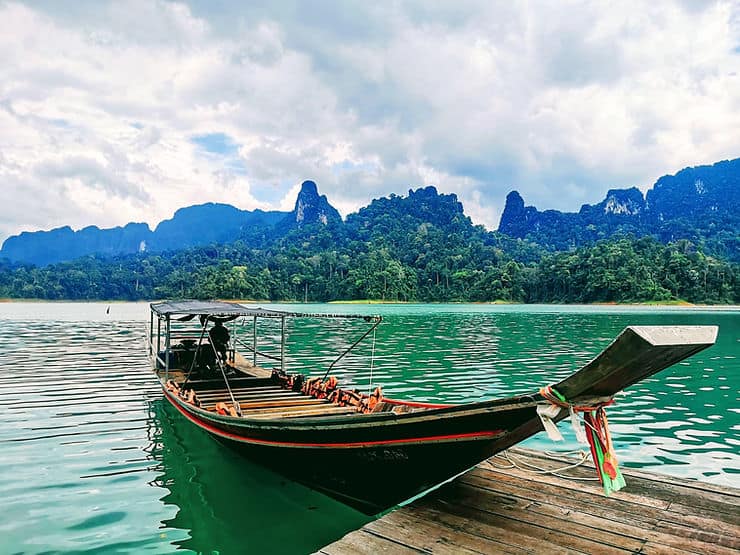
20. Don’t expect formal booking confirmations for public transport
If you’re the kind of person who likes to have written confirmation of everything, then prepare to get out of your comfort zone! As someone who is super organised and over-prepared, I had to learn to accept that formal booking confirmations don’t always exist in Southeast Asia when booking transport. Instead, you’ll be given a flimsy paper slip as confirmation, which at some point will be taken off you and replaced with a coloured sticker (which may later be replaced with another sticker!) They do love a sticker, especially in Thailand! Just take photos of your paper slip or sticker in case you lose it and you’ll be fine.
21. ALWAYS negotiate when ordering a tuk-tuk or taxi!
Rule no.1 when travelling in Southeast Asia – always negotiate! In some of the larger cities you can use Grab, Uber or Gojek which is great as it gives you an idea of what the cost should be. Even if you are getting a ride with a local driver, use the price on Grab/Uber/Gojek to help you negotiate. If that is not available, ask your hostel or hotel how much the prices should be so you have an idea of what is a good price and what is a bad price.
22. Get an international driving licence
If you are considering hiring a car or scooter in Southeast Asia, get yourself an International driving licence. If you are from the UK, you can pick these up in the Post Office for £5. Make sure you keep your licence and your international licence with you at all times when driving. Occasionally local police may stop you and ask to see your licence and if you don’t have it (or the correct one), they may fine you.
23. Don’t feel pressured into riding a scooter
Travelling in Southeast Asia and riding a scooter seem to go hand in hand (if you believe everything you see on Instagram, or read in some blogs). However, don’t feel pressured to ride a scooter if you don’t feel comfortable. The roads in Southeast Asia are uneven and windy and the traffic can be crazy, with people cutting you up and zig-zagging down the road. It is absolutely possible to travel in Southeast Asia without riding a scooter if you don’t want to. If you do want to ride a scooter, make sure your travel insurance covers you and always wear a helmet.
24. Have motion sickness tablets with you on travel days
Even if you don’t normally feel travel sick, you may find yourself feeling queasy. Many of the roads in Southeast Asia are quite hilly and windy and the drivers can be fast and erratic. Also, if you are on a small minibus, it is usually hot and cramped, making you feel even worse. (If you are in the north of Thailand, the Chiang Mai – Pai bus is notorious for making people feel ill). Buses aside, you will likely be taking several boats and ferries during your time travelling in Southeast Asia and some of the boat crossings can be bumpy. Make sure that you have some motion sickness tablets with you for your journey. These can be picked up cheaply from 7/11 in Thailand and also most pharmacies or shops.
25. Pack warm clothing in your day bag on travel days
If you are travelling long distances on a coach or sleeper bus, make sure you keep a warm top or hoodie with you. The buses in Southeast Asia are renowned for having the coldest air conditioning!
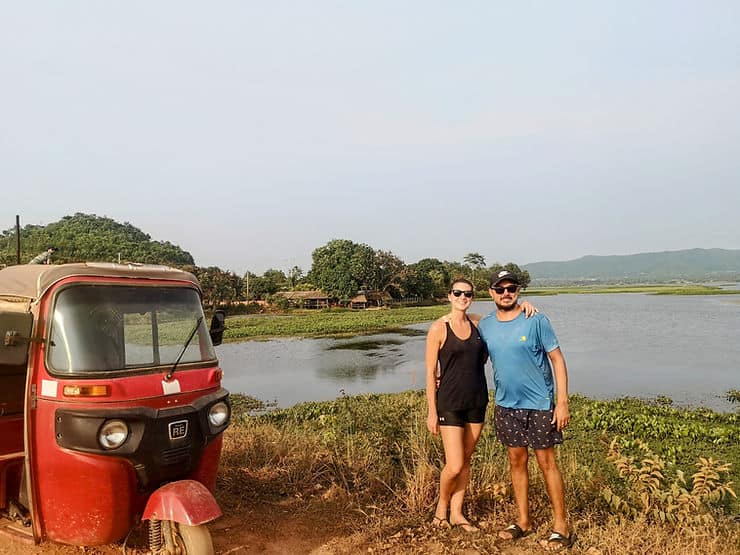
Sampling the food and drink in a new country is all part of the travelling experience and one of the best parts of visiting Southeast Asia is to eat the local food. Here’s a few tips to keep you safe and avoid the dreaded traveller’s belly!
26. Don’t drink the tap water
Unless you want to spend a couple of days being ill, don’t drink the tap water! Bottled water is very cheap to buy, Unfortunately, this does often mean that you will be using a lot of single-use plastic, which is a big problem in Southeast Asia. Some larger cities such as Bangkok, Phuket and Chiang Mai in Thailand have filtered water machines where you can top up your refillable water bottle for a fraction of the cost.
27. Be careful of the fruit!
It can be hard to stay healthy when travelling and the fruit in Southeast Asia is delicious, however, just be careful where you buy it from. There’s plenty of street stalls selling pre-cut fruit. Most of it will be fine, however you don’t know how long it has been sitting there getting warm and also whether it has been washed in clean drinking water. Eating dodgy fruit can make you really sick and wipe you out for several days – believe me! Try to pick places where they cut the fruit fresh in front of you, or buy whole fruit which you can peel/cut yourself.
28. Eat the street food!
The street food scene in Southeast Asia is brilliant (plus its great for your budget too!) The street markets are a lively buzz of noise and smells, creating a great atmosphere. Make sure you go to as many street food markets as you can, it’s all part of the Southeast Asia experience! If you buy meat from a street vendor, make sure that they fry it / cook it in front of you. Eating meat that has been left out for a while is another thing that could leave you chained to the bathroom for a day or two.
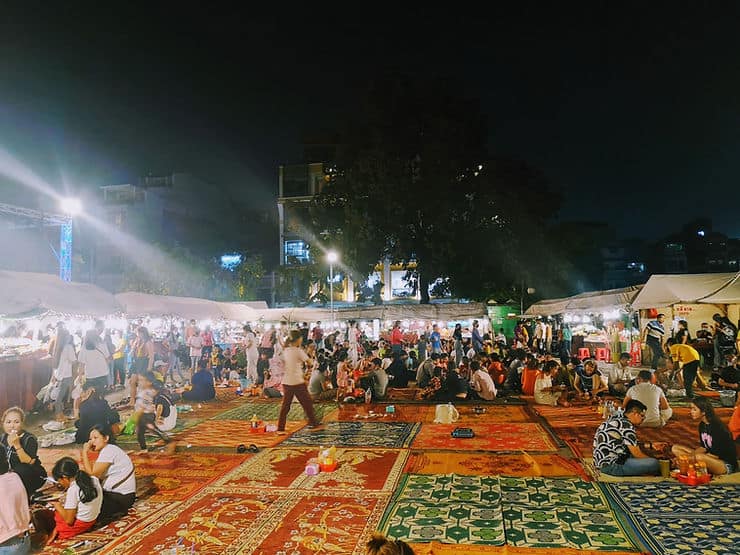
29. Try local dishes
When you visit somewhere new, make sure you know what the local dishes are and try them. Ask the locals you meet what food you should eat whilst you are there. There’s often regional variations of national dishes too.
30. Don’t be put off by the interior (or lack of!) a place
Some of the best food I’ve eaten in Southeast Asia has been whilst sitting outside on a tiny plastic stool at a metal table! In my experience, the small, family-run local restaurants have the best food and even better, they are the most budget-friendly too!
31. Bring a reusable water bottle and bag
As I’ve mentioned, some of the larger cities and towns in Southeast Asia do have places where you can top up your reusable water bottle. There are also some cafes which will allow you to top up for a small charge. Reusable water bottles are also vital for taking on some of the amazing hikes Thailand has to offer. Tip – buy an insulated bottle to keep your water cool!
Take a reusable cotton tote bag too for your shopping, rather than asking for a plastic bag each time you go to the shop. This foldable tote bag is perfect as it has a zip to keep your valuables secure too.
32. Check the spice level!
Spicy food in Southeast Asia is on a different level! A ‘mild’ dish is comparable to a medium in the UK. Don’t be afraid to ask for no chilli or for a dish to not be spicy.
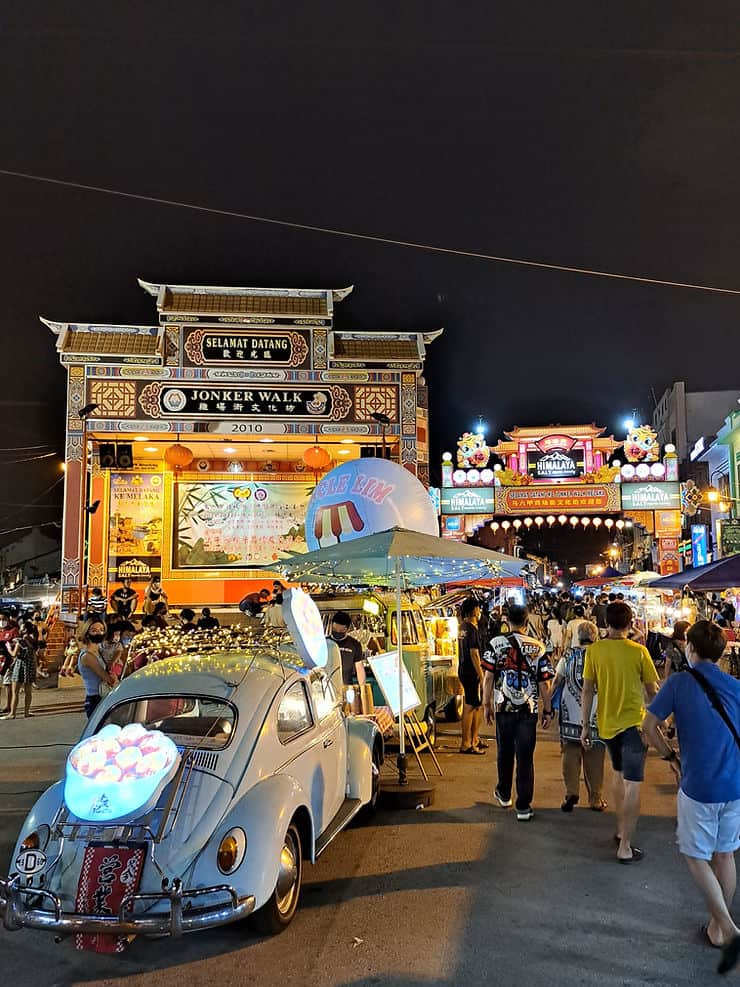
Experiencing a different culture and learning about the history and traditions of a place is one of the best bits about travelling. Read these four things you must do to make sure that you are respectful and get off to a great start with the locals when travelling in Southeast Asia.
33. Learn basic phrases
If you are travelling in another country, even just for a couple of weeks, it’s a great courtesy to know a couple of key phrases, such as Hello and Thank You. Even though English is widely spoken across Southeast Asia, locals love it when you try to speak a little of their own language and will be happy to teach you some new phrases.
34. Be respectful
Southeast Asian culture is very different to western culture and each country in Southeast Asia has their own traditions and cultural differences. Make sure that you know how to behave in certain situations and be respectful. For example, women should not approach, converse with or touch Monks. Women also cannot enter certain shrines or temples whilst menstruating.
Travelling to Bangkok? Make sure you visit these three temples
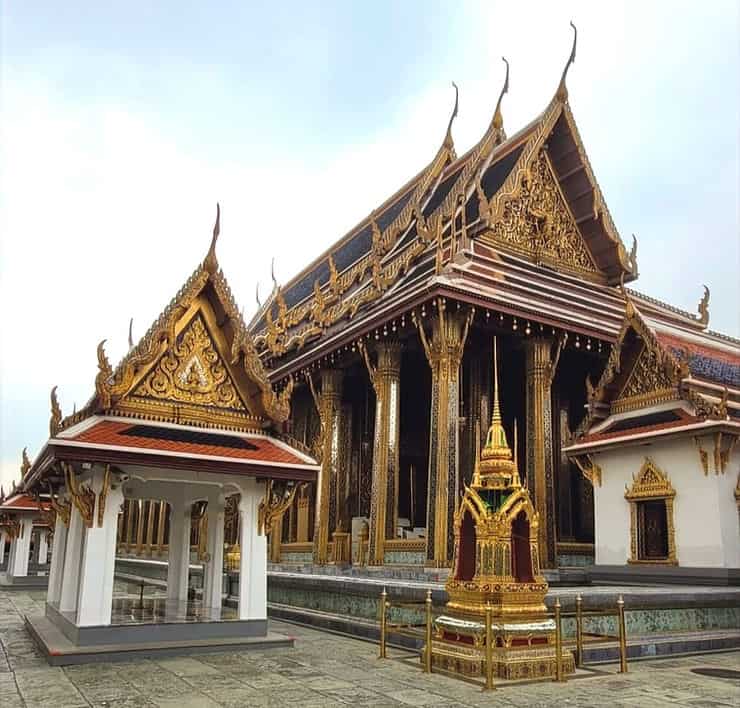
35. Dress appropriately
Whilst both men and women should make sure that they are respectfully dressed when entering a temple or government building, this mostly applies to women. Whether you’re exploring Ankor Wat , in Cambodia or the Grand Palace in Bangkok, women must always cover their knees and shoulders when visiting a temple.
When bathing in certain spots, it is respectful to cover up. Wearing a bikini is acceptable at most public beaches and in your hotel or hostel pool, however, if you are visiting a local bathing spot, you will notice that Southeast Asian women wear shorts and a t-shirt to bathe in. It is polite to do the same.
36. Take off your shoes
This is common practice in many places throughout Southeast Asia, but it is mostly associated with Thailand. Shoes should always be removed before entering a temple, but you will also need to remove shoes before entering other places too. If you are staying in a small guesthouse, or homestay, it is polite to leave your shoes outside. This is the same if you enter a small, local shop and even when you travel on certain boats and buses (especially the sleeper buses in Vietnam).
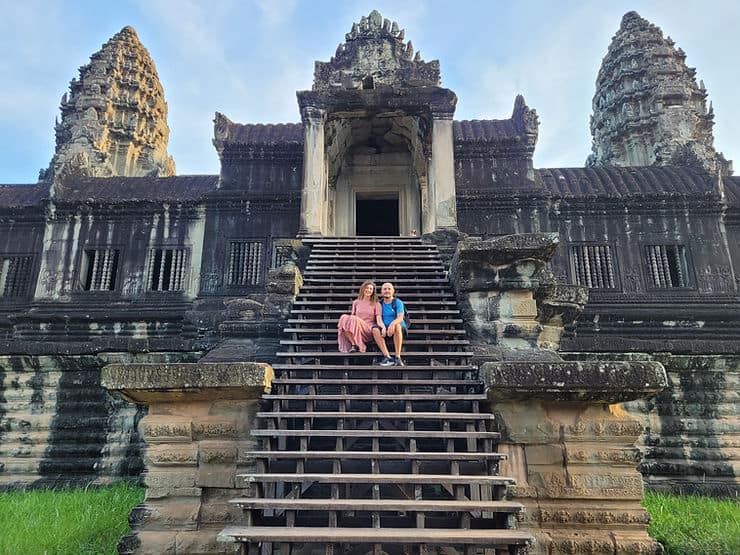
Prepare for your trip to Southeast Asia by making sure that your health requirements and needs are taken care of before you travel…
37. Check what vaccinations you need before you go
When planning a trip to any new country, it is important to make sure you have received all the relevant vaccinations beforehand. If you are in the UK, you can check the NHS website to see which vaccinations are recommended for the country you are visiting and which vaccinations you can get for free on the NHS.
38. Stock up on sunscreen
Suncream is not widely available in Southeast Asia, especially if you are travelling away from the main tourist holiday destinations. It is also very expensive. You will find lots of ‘sun serums’ or ‘daily lotions with spf’ – be careful with these, whilst they do offer some level of protection, they are not full sun creams and are not recommended for using while sunbathing. If you are only travelling for a short amount of time, take several bottles with you from home, if you have room.
39. Take any medication / feminine products with you
If you are travelling to some of the smaller islands, or more remote places in Southeast Asia, there is not always a large pharmacy available. So, if you need medication, make sure that you bring it with you and restock it before you run out. Feminine products can be expensive too, so if you can, bring these with you.
40. Always carry medication for ‘travellers belly’
It’s not nice to talk about but almost every traveller will experience an upset stomach at some point during their travels in Southeast Asia (no matter how careful you are). Although the best advice is to rest and let the bug ‘pass through’, that is not always possible, especially if you have a bus journey to get through. With that in mind, carrying some tablets for diarrhoea will be a lifesaver!
41. Always have a toilet roll with you on travel days!
This goes hand in hand with the above – most toilets in Southeast Asia don’t have toilet paper and there’s usually a small fee for using them, so carry some small change too.
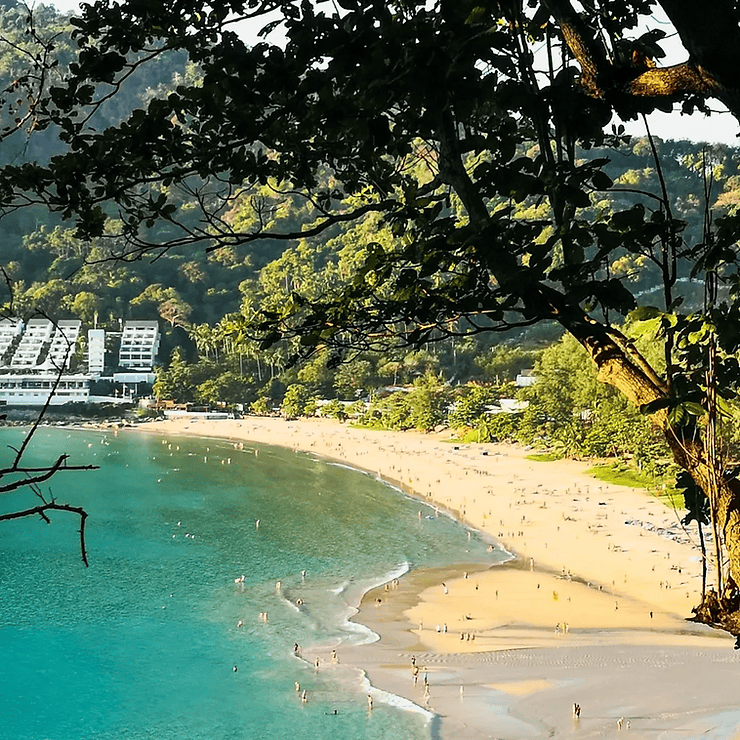
When deciding what to pack, you first need to decide whether you prefer a backpack or a suitcase. Most travellers will opt for a backpack as it is easier to carry across sandy beaches and when you are climbing in and out of boats etc. But it really is down to personal preference.
You will also want to make sure you have a decent day bag to keep all your valuables and travel essentials with you, and one which fits under your seat on the plane to avoid extra charges. Picking the right underseat personal item backpack is important – it will get a lot of use, so if you can, invest in a good one.
Depending on how long you are travelling in Southeast Asia for, your packing list will vary. This is also true if you are planning a long trip and are visiting other places outside of Southeast Asia too. So, rather than include a full packing list in this post, here’s a couple of top tips to help you pack better.
42. Take a Scarf or sarong
A scarf or sarong is one of the most versatile items you can pack in your bag. It is great for covering your shoulders in a temple, laying on at the beach, throwing on over a bikini, using it as a pillow on travel days or keeping you warm on the buses! Plus it takes up virtually no space in your bag!
43. Pack layers
You definitely don’t need as many clothes as you think you do, and you will end up wearing the same things over and over! Pack light things that you can layer and roll up small in your bag. In terms of shoes, one pair of trainers, one pair of flip flops and one pair of Birkenstock or chunky walking sandals will be suitable for pretty much everything in Southeast Asia. I lived in my Birkenstocks for pretty much the whole year!
44. Leave room for new clothes!
Don’t go shopping for everything before you leave home. The clothes in Southeast Asia are so cheap and let’s face it, most of the clothes you will buy at home will most likely come from Southeast Asia anyway! If there’s anything you’ve forgotten or wished you had packed, you will more than likely be able to buy it in Southeast Asia.
45. Be savvy with your chargers
There’s nothing worse than having a bag full of cables and charging wires! A lot of devices will accept the same charger cable and this is a great way to reduce the number of wires you take. For example, my laptop wire will fit my phone and my Go pro, meaning I only need one wire for three devices. (I do also have a single USB cable that will plug into an adaptor so I can charge two things at one, but this takes up hardly any room). I’d also recommend putting your wires into a small organiser case , so they are easy to locate in your bag.
46. Embrace the packing cube!
Packing cubes are a lifesaver when it comes to packing for travelling. Even if you are sceptical about it at first, you will soon realise how handy they are. It’s a great way to separate (and easily locate!) your clothes in your bag. They also help to condense things down in your bag!
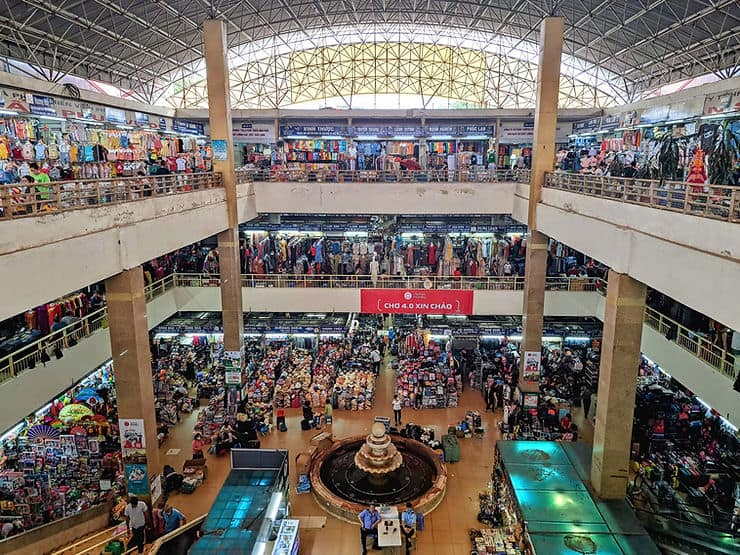
Making the decision to go travelling can be scary but it is also super exciting! Have the best time and remember that comparison is the devil!
47. Chat to others
One of the best parts of travelling is meeting other like-minded travellers. There’s a reason that Southeast Asia is one of the best places to travel solo. There’s so many great hostels and Facebook groups, where you can meet up with other people.
48. Everyone has bad days when travelling
You will have THE BEST time travelling, but there will also be some days that don’t quite go to plan and other days where you are tired or may feel homesick. The best advice I can give you is not to dwell on those days, it is completely normal and usually after a good night’s sleep and a comfy bed, you will feel much better.
49. Don’t compare your journey to others
Everyone’s travel experience is different and your trip will be unique to you. Don’t get caught up in comparing your journey to everyone else’s, just enjoy and embrace your own travel experience.
50. Have fun!
Travel is one of the best things you can do (in my totally biased opinion!). Whether you’re travelling in Southeast Asia for a few weeks or a few months, relax, go with the flow and HAVE FUN!
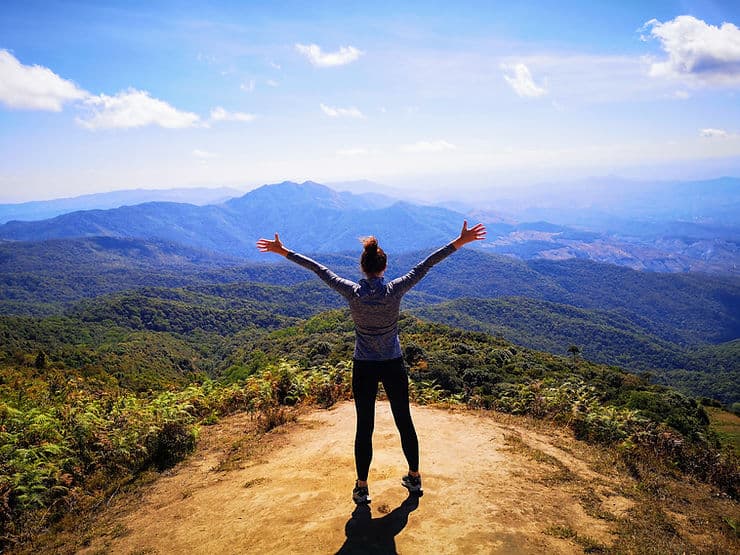
Related Posts
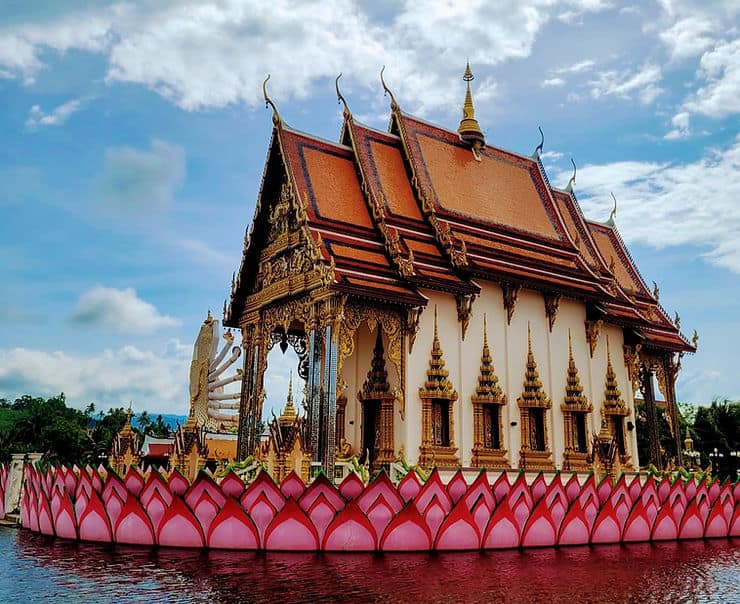
Top 15 things to do on Koh Samui, Thailand
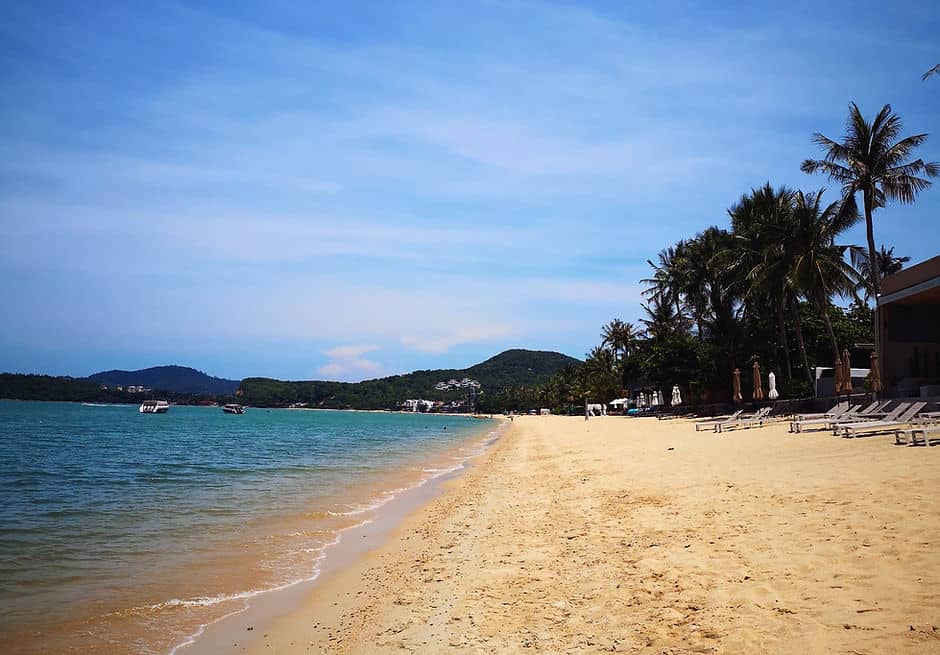
A guide to visiting Koh Samui, Thailand
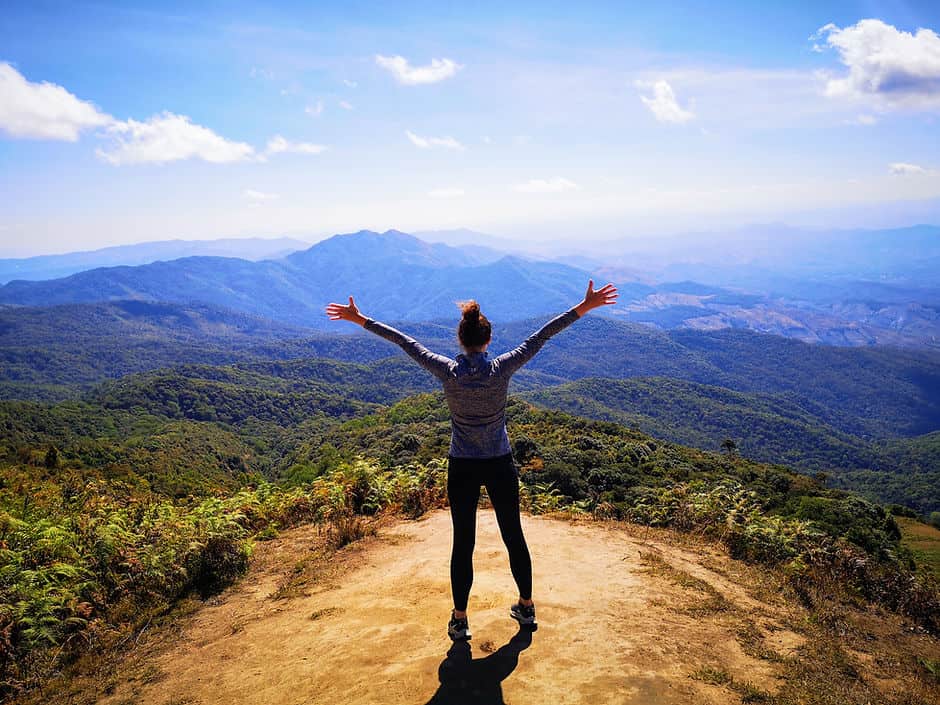
10 Unmissable hikes in Thailand

Change location
- Call us today from 10am
- 01993 838 925 01993 838 100 or
- REQUEST A QUOTE
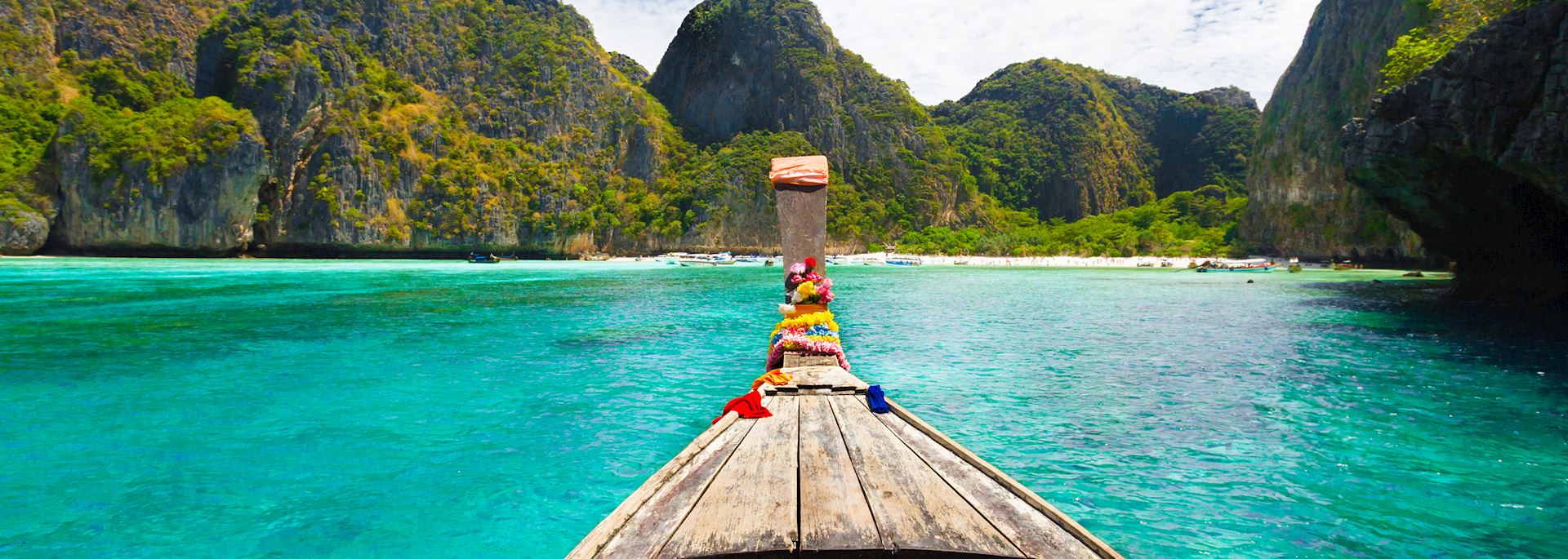
When is the best time to visit Southeast Asia?
- Month-by-month
The best time to visit Southeast Asia depends on where you want to go and what you want to do. There are some significant climate variations across the region, but rather than limiting possibilities, this makes Southeast Asia a year-round destination with good conditions for exploring throughout the year.
In general, the cool, dry season lasts from November to April across mainland Southeast Asia and the Philippines making this a good time to visit Thailand, Vietnam or Indochina, while Indonesia and Borneo are drier from April to October, and Malaysia offers year-round sun on one coast or the other.
- Make an enquiry
- Request a brochure
Month-by-month guide for travelling in Southeast Asia

Visiting Southeast Asia in January
January is a great time to visit Southeast Asia and is one of the driest months across the northern part of the region, with comfortable temperatures for beach going or more intrepid exploration. Thailand and Malaysia’s west coast beaches are bathed in sunshine, river travel in Vietnam is at its peak, and there are a host of festivals in Myanmar and the Philippines.
Events & Festivals
- Ati-Atihan is the Philippines’ largest festival. It takes place in Kalibo, with street dancing and wild costumes to celebrate an ancient land pact between settlers and indigenous Atis.
- Chinese New Year, Lunar New Year and Naga New Year are celebrated across the region with traditional festivals, drumming and dancing.
- Sinulog is Philippine city Cebu City's biggest annual event, featuring a huge street parade, live music and plenty of food and drink.
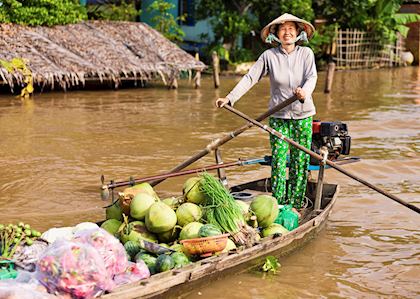
Visiting Southeast Asia in February
Pleasant weather across Myanmar makes February a good time to explore the plains, foothills and beaches. High water levels in Tonle Sap and the Mekong make it a good time for river travel in Cambodia, while it’s not too hot for exploring the temples of Angkor. For good-value beach breaks, the west coast of Thailand and Malaysia are good bets.
- Chin National Day (20th February) is a day of celebrating the culture, traditions, history and language of the Chin people in Myanmar. Festivities include traditional bamboo pole dances.
- Tet is the biggest festival of the year in Vietnam, celebrations for the lunar new year can last a week or more and travel may be busier.
- Wat Phou Festival sees Laos’ Buddhists attend a three-day festival in Champasak, taking part in processions, recitals, boat races and dances.

Visiting Southeast Asia in March
It’s shoulder season in Borneo with mostly dry weather, low visitor numbers and promotional rates making it a great time to visit. Thailand and Malaysia are hot and sunny offering the pick of beaches on both coasts, and it’s a great time to visit Halong Bay in Vietnam or Cambodia, but you’ll need to book well in advance.
- Easter brings holy week celebrations in the Philippines, include large-scale religious processions with floats, costumes, masks, food and music.

Visiting Southeast Asia in April
It’s reaching the end of the dry season in Thailand, Malaysia, Vietnam, Cambodia and the Philippines, temperatures are rising and visitor number are high. Book well in advance. It’s a good time to go trekking in Borneo and see orangutans, and Indonesia is beginning to dry out with promotional deals making it a good-value destination at this time of year.
- Songkran in Thailand, Thingyan in Myanmar and Lao New Year are celebrated with scented water thrown in the streets and onto passers-by as a cleansing ritual and a sign of goodwill.
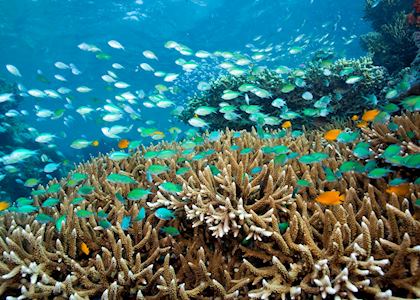
Visiting Southeast Asia in May
May is a great time to visit Borneo, Bali, Lombok or the east coast beaches of Thailand and Malaysia. With long hours of sunshine, clear seas for snorkelling and diving, good orangutan viewing and shoulder-season prices, it’s one of our preferred times of year to travel here. Heat and humidity are building in Vietnam, Cambodia and Laos in advance of the rains.
- Boun Bang Fai, normally held in May or June, is a festival that marks the sixth month of the lunar calendar in Laos with homemade fireworks and rocket competitions.
- Flores de Mayo is a month-long, countrywide religious festival in the Philippines celebrating the coming of the rains. Processions are sometimes held after dark and lit by candles, creating a wonderful ambience.
- Gawai Dayak is an annual harvest festival celebrated by the Dayak people in Sarawak, where it's a public holiday. It's marked by the sharing of food, decorated longhouses and traditional dress.
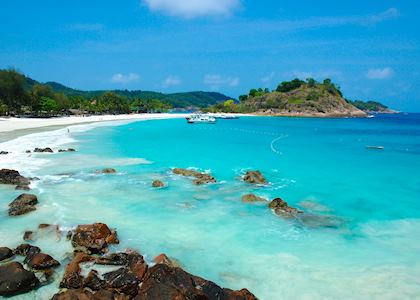
Visiting Southeast Asia in June
Diving season is at its peak in Tioman, Redang and the Perhentians off Malaysia’s east coast, while Indonesia and Borneo are hot and dry with ripe fruit drawing orangutans to lower branches making forest treks particularly rewarding. June is shoulder season in Thailand and Central Vietnam and a good time to find a hotel deal before the European school holidays begin.
- Chinlone Festival lasts for almost a month. This Mandalay festival sees hundreds of chinlone (cane ball) teams compete in the traditional sport of Myanmar to live music.
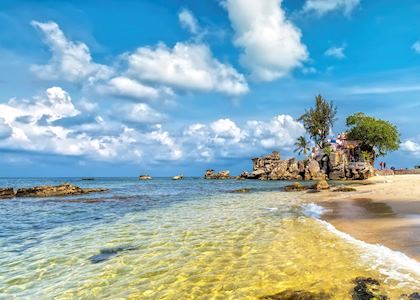
Visiting Southeast Asia in July
It’s peak season on Malaysia’s east coast and in Indonesia with great visibility for diving but higher prices and busier resorts. Good orangutan sightings and turtles on the beaches makes Borneo a popular destination. Central Vietnam is hot and sunny and cruising along the Chindwin River in Myanmar is at its peak but the rains make road travel difficult.
- Borneo Cultural Festival is a ten-day annual festival held in Sibu with music performances, contests and plenty of good food.
- Rainforest Music Festival brings renowned world musicians and indigenous musicians of Borneo gather in Kuching to perform, with lectures and workshops for visitors.

Visiting Southeast Asia in August
A great time for wildlife enthusiasts to visit Borneo, the weather is hot and dry in August with turtle hatchlings on the beaches and great trekking but busy hotels. It’s peak season in Indonesia with great weather for temple visits, jungle hikes or relaxing on the beach, and the Malaysian east coast beaches are hot and sunny. Book well in advance.
- Taungbyone Nat Festival is a major gathering place for spiritual mediums in Mandalay. This festival attracts pilgrims and visitors in their thousands to make offerings and enjoy dances and other celebrations in honour of two famous nats (spirits).
- Yadana Gu Nat Festival is an eight-day festival in Amarapura in Myanmar, led by spirit mediums said to be possessed by nats (spirits) during the ceremony. Ritual dances and songs are performed and visitors make offerings of food, flowers and money to the nats.

Visiting Southeast Asia in September
Borneo is fine and dry throughout, so it's still a very appealing time to visit for relaxing on the beach, snorkelling and wildlife watching on Kinabatangan River. The weather in Indonesia also continues to be hot and dry but the summer crowds have eased and prices have dropped making it a great time to visit.
- Borneo International Kite Festival sees hundreds gather at Old Bintulu Airport to fly brightly decorated and complex kites.
- Pchum Ben is an important Buddhist festival marked throughout Cambodia over 15 days, with the main celebrations taking place on the final day as locals pay their respects to deceased relatives.
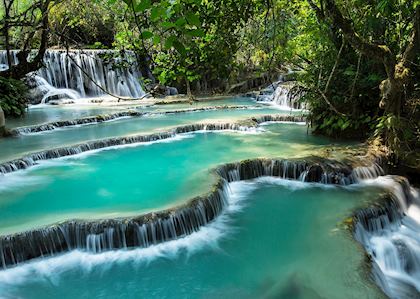
Visiting Southeast Asia in October
Dry weather begins to return to Laos and Cambodia with the landscape looking particularly lush after the rains. There are few visitors and early season offers make it a good value time to visit. Northern Vietnam is dry and sunny making it a good time to trek in Sapa, and it’s prime season for diving in Sipadan off Borneo.
- Boun Ok Phansa is a boat racing festival celebrated at the end of the rainy season in Laos. Elaborate boats are raced along the Mekong River and various festivities take place on the riverbank in honour of the Naga king.
- Deepavali/Diwali, the Hindu festival of lights, is celebrated throughout Borneo as families gather to pray and give gifts.

Visiting Southeast Asia in November
Temperatures rise and the weather is dry across Vietnam, Laos, Cambodia and Myanmar marking the start of the high season with rising prices and greater numbers of visitors. It’s a particularly good time to get out on Tonle Sap lake in Cambodia or go river cruising in Laos, but book well in advance.
- Bon Om Touk, the Cambodian water festival and one of the nation's most popular events, is celebrated over three days with concerts and boat races in Phnom Penh.
- That Luang Festival is a three-day religious festival in Vientiane where tens of thousands of monks and pilgrims gather at the That Luang or Grand Stupa bearing wax candles.

Visiting Southeast Asia in December
Vietnam, Laos and Myanmar are hot and dry and at the start of their peak season, book early to avoid disappointment and visit earlier in the month to avoid the most popular times around Christmas when prices rise considerably. It’s also the start of the peak season in the Philippines, though there is still a small risk of cyclones.
Our recommendations for when to visit Southeast Asia
- Not recommended
- Winter season
Southeast Asia trip ideas and travel guides

Essential Vietnam tour
13 days from £3,730pp
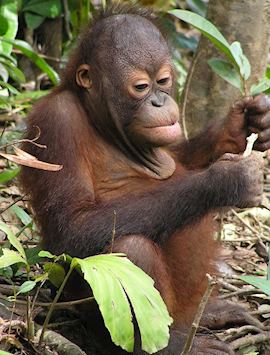
Orangutans & islands of Borneo
15 days from £3,440pp
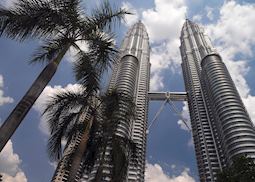
Asia's best city & beach combinations
10 min read

Crossing the border: multi-country trips through Southeast Asia
Best Time To Visit Asia
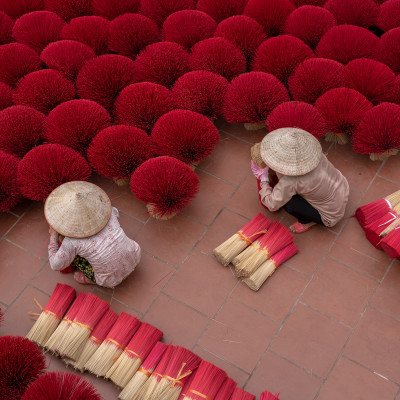
Asia through the seasons
The best time to visit Southeast Asia depends on which country you are planning to visit. You may wish to explore UNESCO-listed heritage sites such as Angkor Wat or Borobudur Temple, or meander down the Mekong in Vietnam aboard a luxury cruise ship. Relaxing on the golden beaches of Thailand or Bali are undoubtedly some of the best things to do in Asia , as are visits to Japan’s ancient shrines and temples, or China’s Great Wall. To help you make the most of your time in Asia and plan the perfect trip that matches all your interests, our experts provide an overview below on the best time for your Southeast Asia tours.
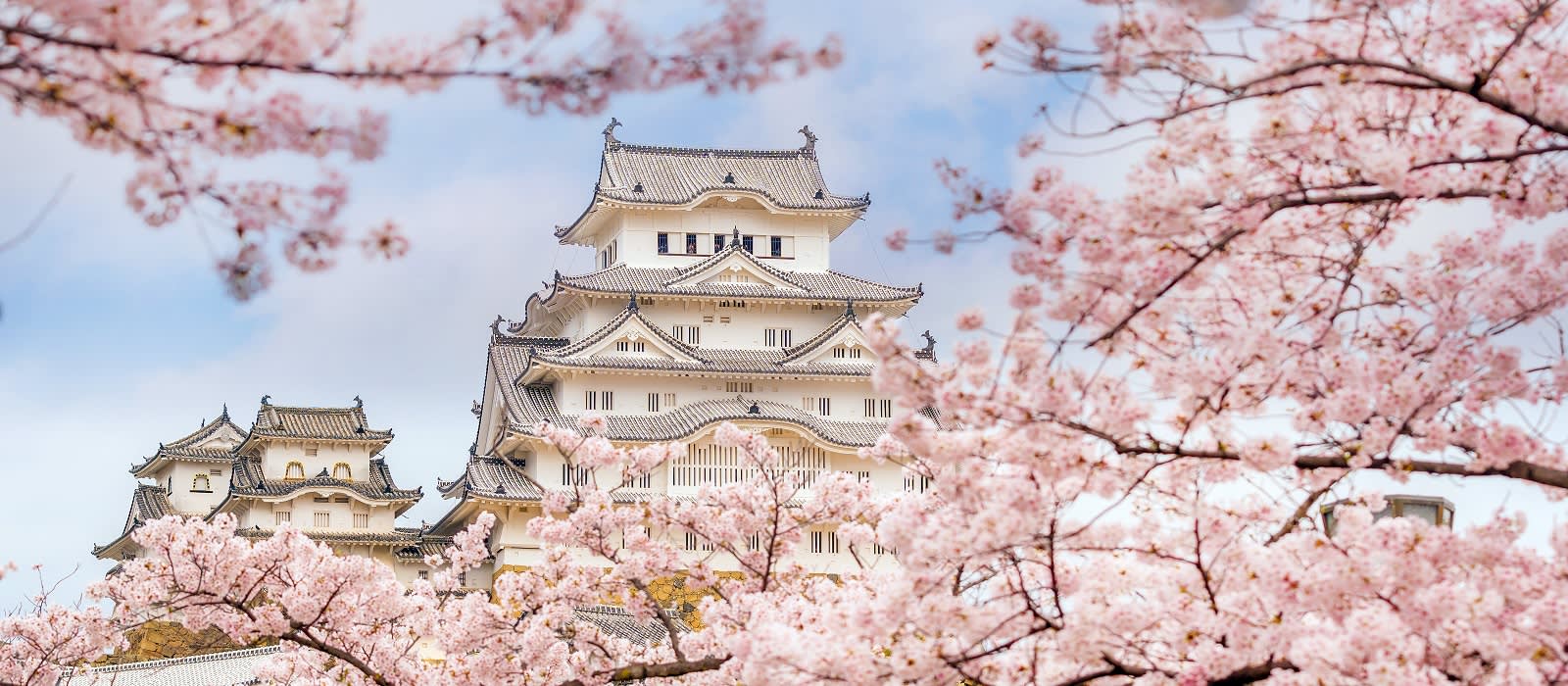
Travel to Bhutan during springtime, between March to May, when the rhododendrons and jacarandas in full bloom and many festivals are celebrated. Winter is an excellent season for birding enthusiasts and you can also indulge in rafting adventures in Southern Bhutan. With pleasant temperatures and excellent visibility, the autumn months between late September to the end of November, are ideal for traveling to Bhutan.
BEST TIME TO VISIT BHUTAN
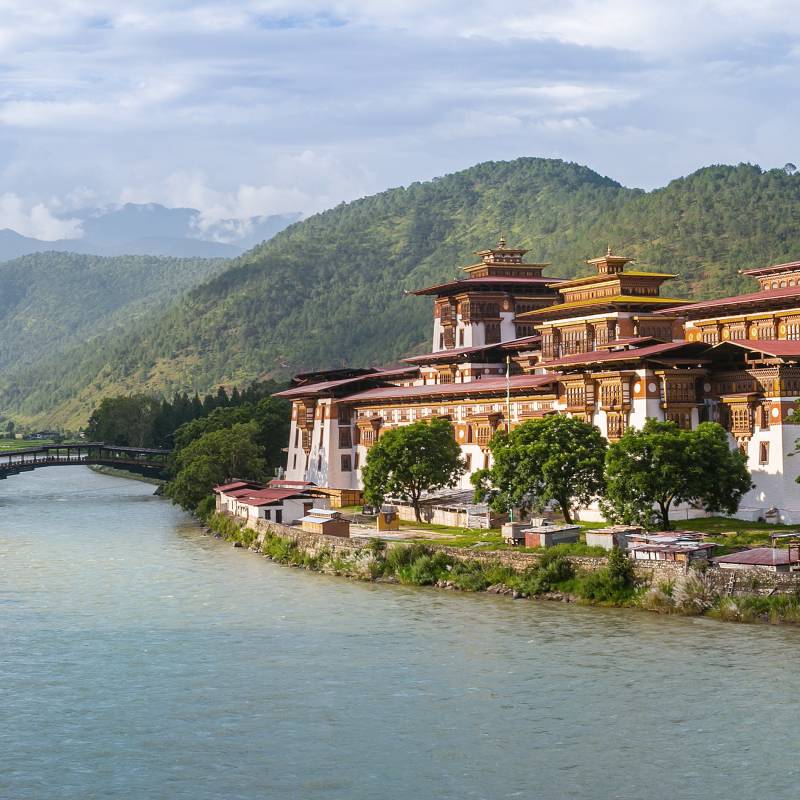
Cambodia experiences similar temperatures throughout the year, although rainfall can very greatly depending on which region you choose to visit. The dry months, between November and April, are the best time for Cambodia tours, when the humidity is low and daytime temperatures are below 30 ° C on an average.
BEST TIME TO VISIT CAMBODIA
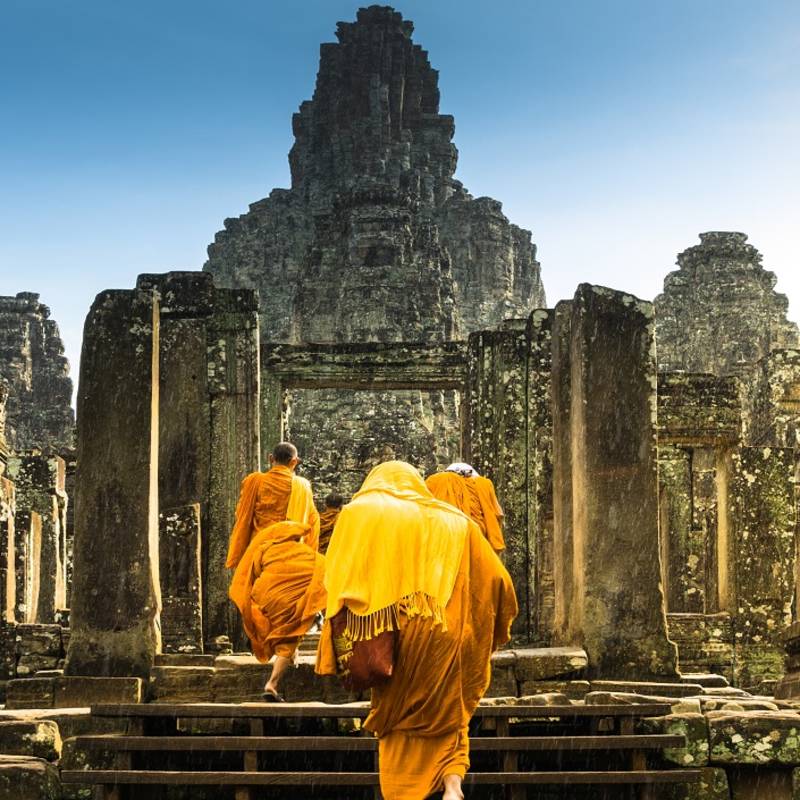
Spread over a vast expanse, the 17,000 islands of Indonesia naturally experience varied climates between regions. Indonesia experiences rain throughout the year, although in the dry season between April to October, rainfall occurs in short bursts. The monsoon season lasts from November to March. Therefore, it is best to travel to Indonesia between mid-April and the end of October, especially if you wish to visit Bali, Java, Lombok and Sulawesi .
BEST TIME TO VISIT INDONESIA
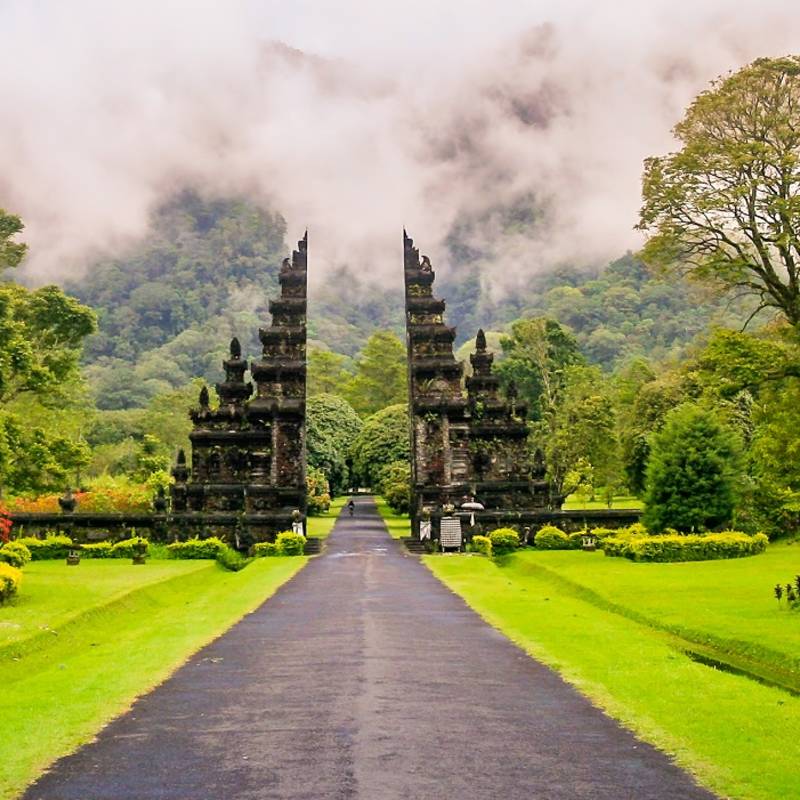
Traveling to Japan is especially recommended during the springtime months of March to May, when the cherry trees are in full bloom, especially towards the end of April. In autumn, between September and November, the weather is mild and pleasant as well.
BEST TIME TO VISIT JAPAN
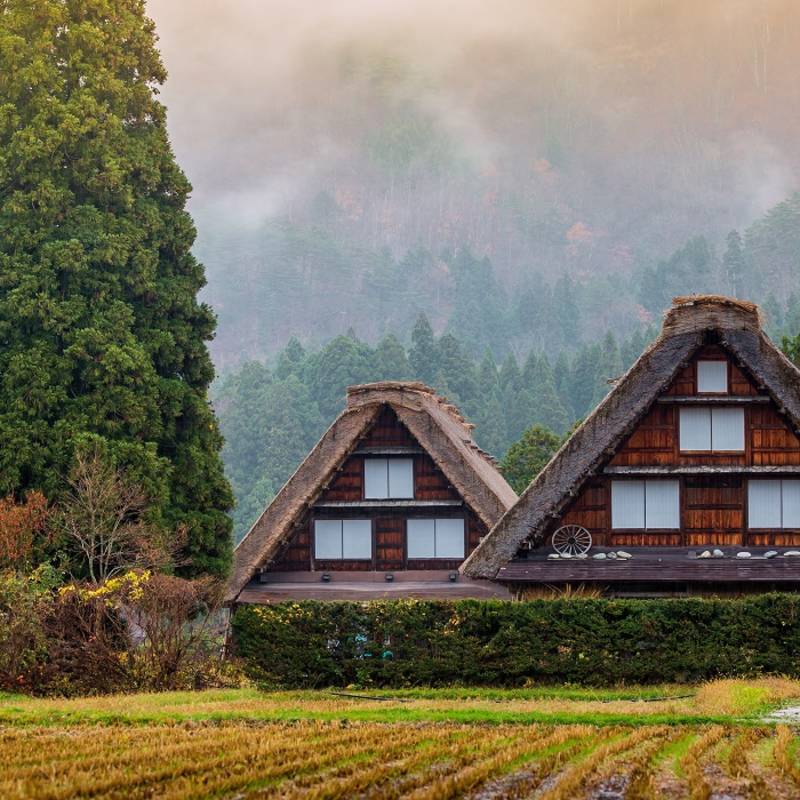
The best time to travel to Laos is during the dry season between October and April. In the summer months of March and April, temperatures can rise as high as 40 ° C. As the Mekong river dries up considerably in summer, river cruises are not possible.
BEST TIME TO VISIT LAOS
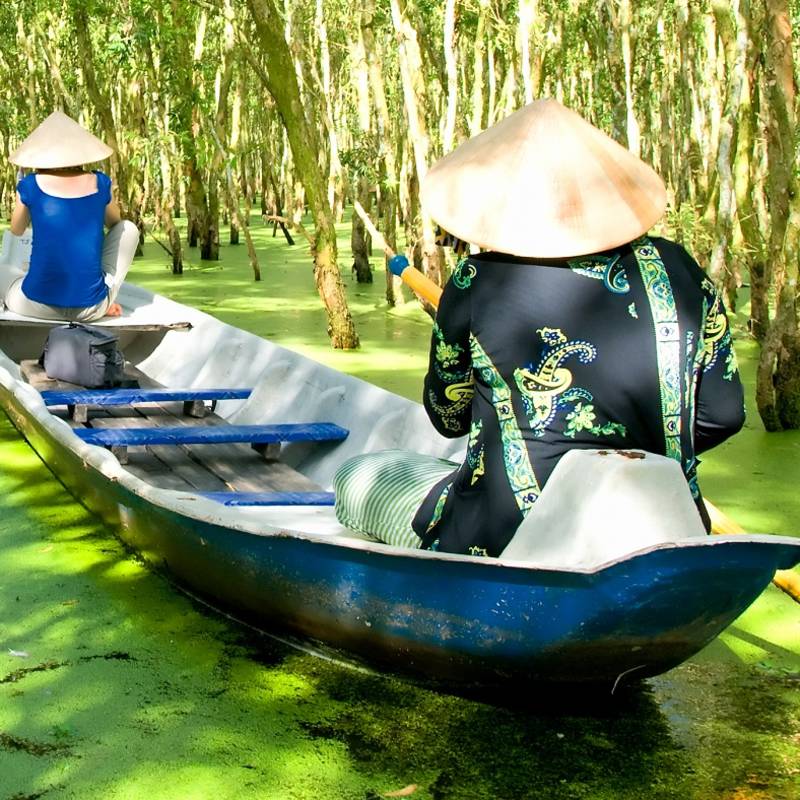
This paradise islands are blessed with amazing tropical weather throughout the year, and usually experience moderate climatic changes owing to their location on the Equator. Monsoon comes to the Maldives twice a year although there are no major cyclones as such. Rainfall and humidity levels are relatively low between December and April, making this the ideal time to visit The Maldives.
BEST TIME TO VISIT THE MALDIVES
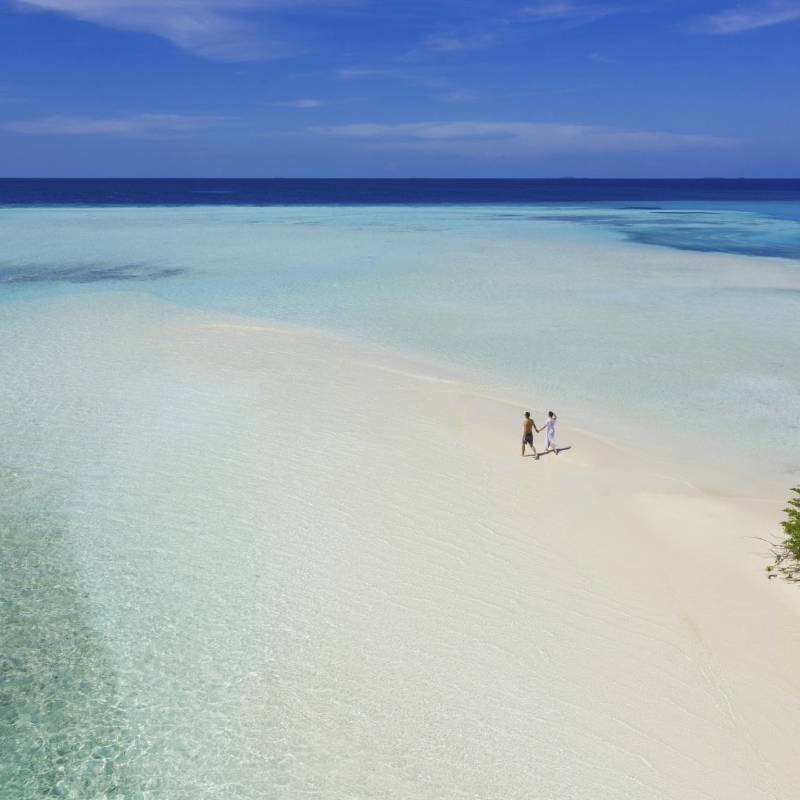
The dry months from November to March are ideal for your trip to Myanmar . Although the dry season lasts until May, it can get quite warm and humid from April onward. Although traveling to Myanmar is possible in the rainy months of June to October, this time is not suitable for beach holidays or hiking.
BEST TIME TO VISIT MYANMAR
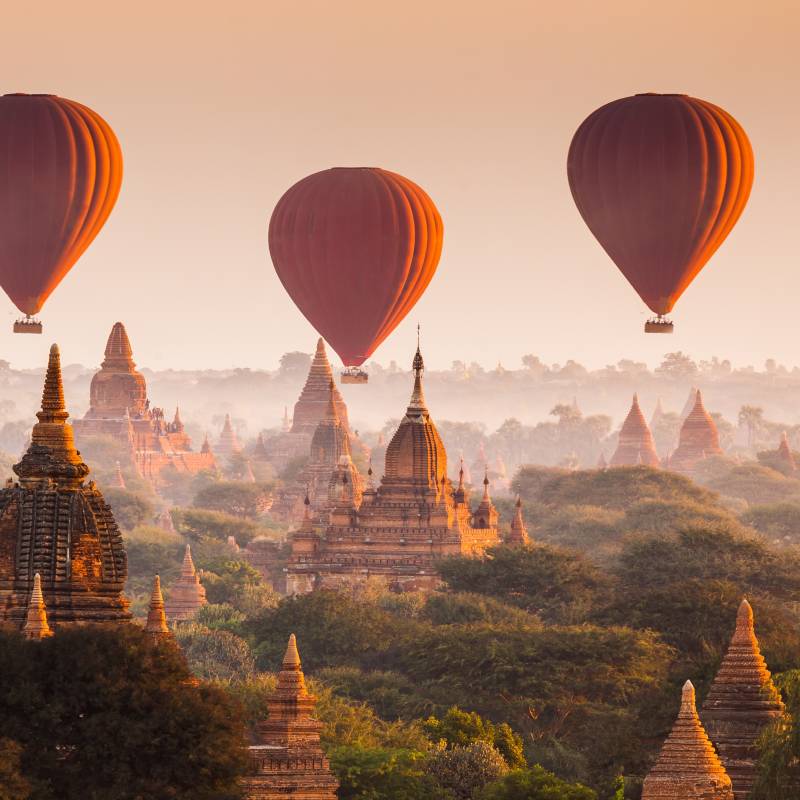
The monsoon lasts from late June to mid-September in Nepal , although the rest of the year is rather dry. Traveling to Nepal in the rainy season is not recommended. The country is beautiful between October and November after the rains, with lush green landscapes, refreshing mountain breeze and mild temperatures.
BEST TIME TO VISIT NEPAL
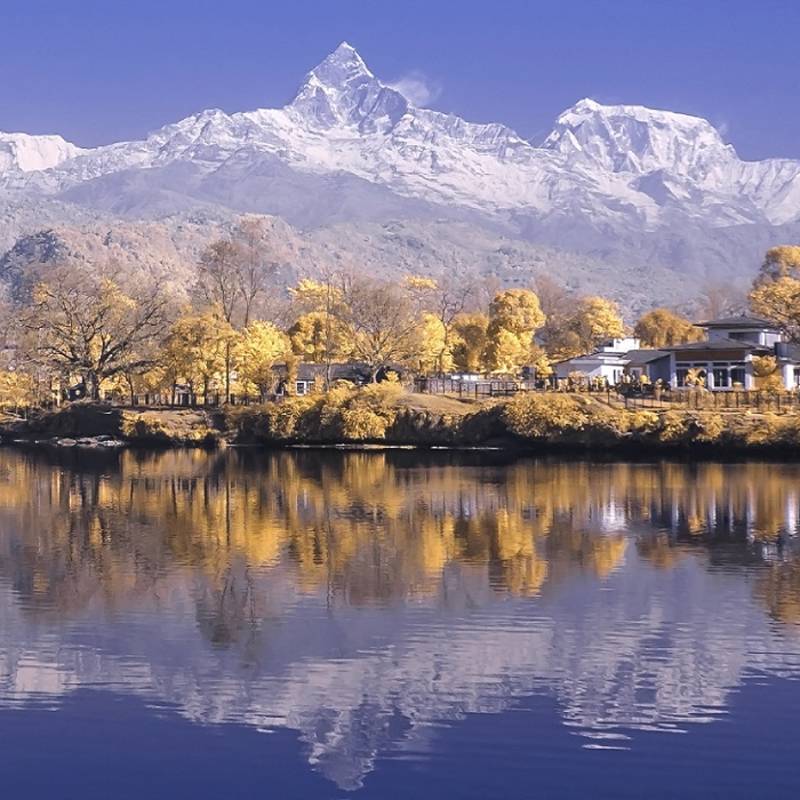
This teardrop shaped island experiences varied climatic conditions, with at least one region in the country dominated by rainfall at any given time of the year. In the west and south of the country, dry season begins in November and lasts until the end of March. Traveling to Sri Lanka is not recommended during the monsoon months of April to October.
BEST TIME TO VISIT SRI LANKA
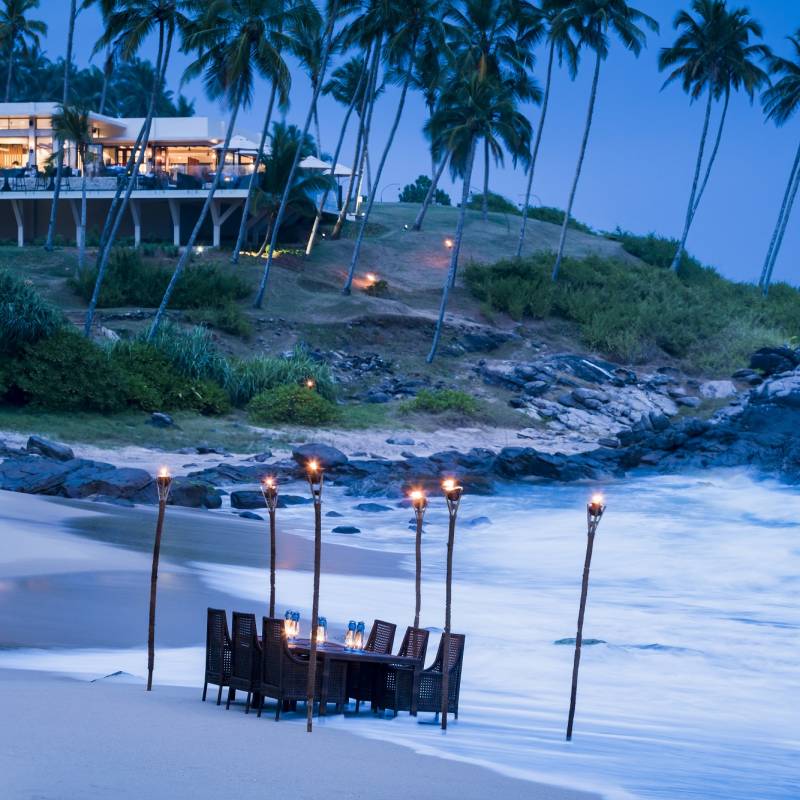
Thailand tours are best between November and February, when the temperature ranges between 30 to 35 ° C and humidity levels are at their lowest. From March to May, temperatures can rise up to 40 ° C, however, the climate also depends on which region you choose to visit. The months of April to June, September and October are not recommended for traveling in Thailand .
BEST TIME TO VISIT THAILAND
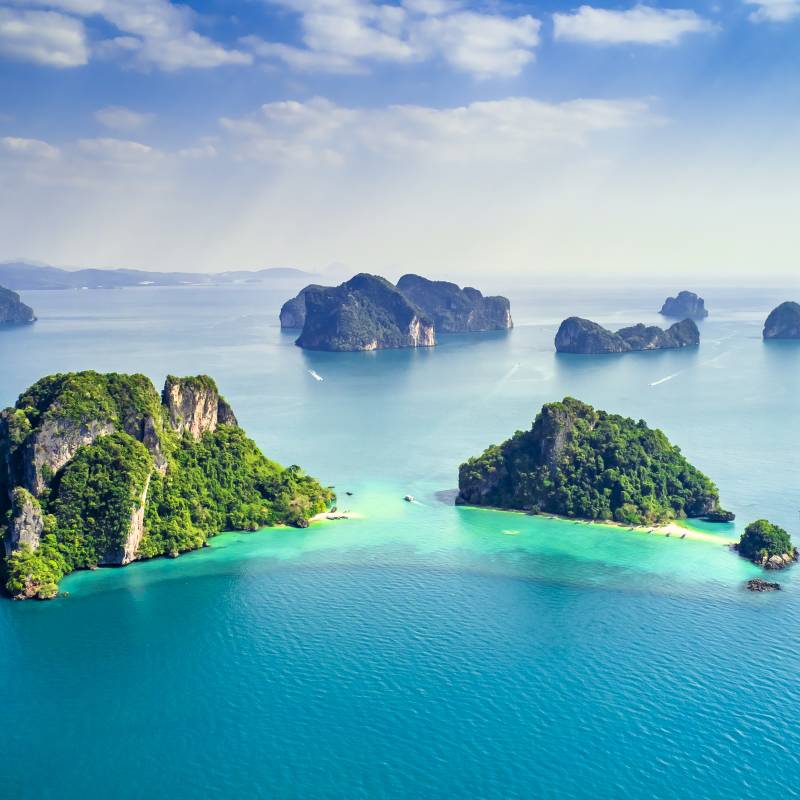
Travel to Tibet between the months of April to October. Once the snow begins to melt in April, the country experiences pleasant weather, gentle breezes and the occasional spell of rain. Many parts of Tibet that are inaccessible during the winter due to frozen roads, can be visited at this time. The winter months of October to March are not recommended for travel as it is freezing cold and many roads are blocked.
BEST TIME TO VISIT TIBET
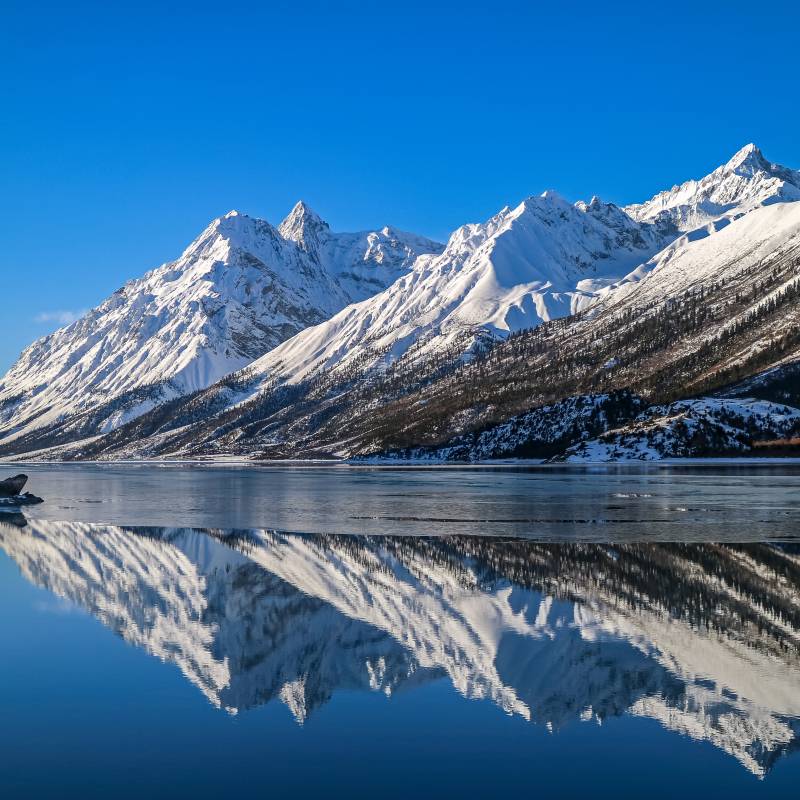
You can travel to Vietnam all year round, although the best time for travel depends on the region you visit. Travel to Northern Vietnam between October and April. Central Vietnam is most pleasant between February and April while Southern Vietnam is ideal for traveling in the months of December to February.
BEST TIME TO VISIT VIETNAM
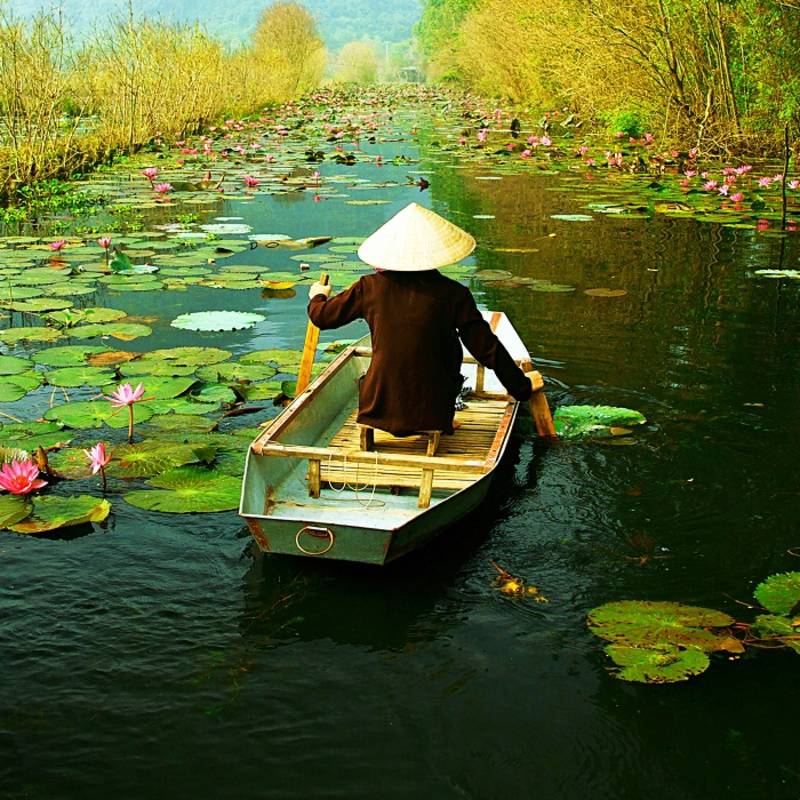
Best time to visit Asia
There are often drastic differences in climatic conditions between individual regions of Southeast Asia. Deciding on the best time to visit Asia can be challenging, especially if you wish to combine a visit to several countries in your itinerary.
Having traveled extensively in the continent, our Travel Consultants use their vast destination knowledge to advise you on the best time to travel to Asia according to your schedule and preferences. Customize one of our sample Asia vacation packages to match your preferences or contact us today for a tailor-made, obligation-free itinerary.
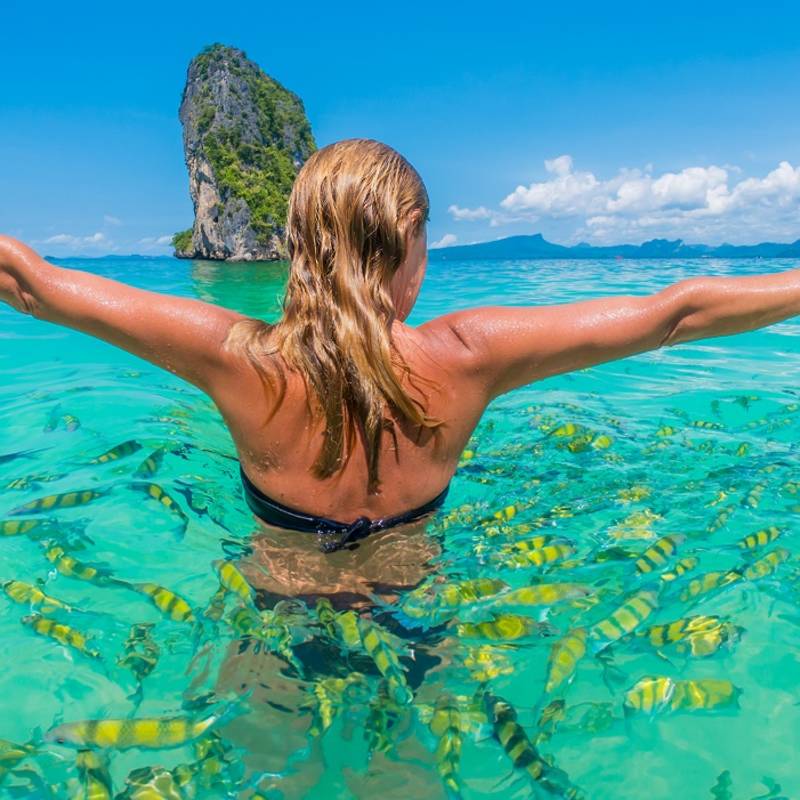
Recommended Vacations

Classic Japan and Seoul
Discover the unique cultures and highlights of Japan and South Korea at their top destinations.

Indonesia: Classic Sumatra
Discover the essence of Sumatra as you explore its history, culture and food. Marvel at landmarks such as the Tjong A Fie Mansion, Maimoon Palace and the Grand Mosque at Medan before heading into the Bukit Lawang region. Savor the local cuisine on a guided tour and keep an eye out for wild orangutans in…

Culinary Treasures of Thailand
Dig into the culinary delights of Thailand on this immersive tour across the country’s top three destinations – the capital city of Bangkok, vibrant Chiang Mai in the north and the gorgeous beaches of Phuket in the south.
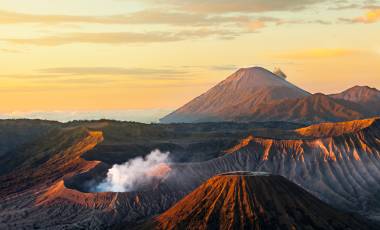
Java, Indonesian Borneo & Bali Islands: Culture, Wildlife & Nature
Embark on an enthralling journey through Java, Indonesian Borneo, and Bali, where culture, wildlife, and nature unite harmoniously. Discover Yogyakarta’s historic temples, Borobudur and Prambanan, and experience the vibrant nightlife with a personalized tour. Venture to Tanjung Puting National Park to spot wild orangutans on a traditional riverboat. Witness the dramatic landscapes of Mount Bromo,…
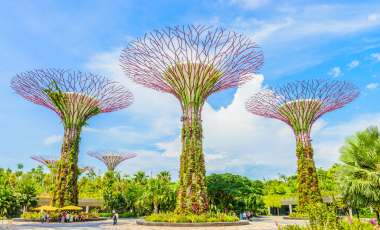
The Best Of Singapore
Discover the multicultural heritage of Singapore on this 4-day tour. An ideal stopover destination, whether you’re flying to Bali or Australia, this city state has much to offer, and is a vacation in itself. Visit the Botanical Gardens, a UNESCO World Heritage Site, go on an exciting night safari at the Singapore Zoo, stroll through…
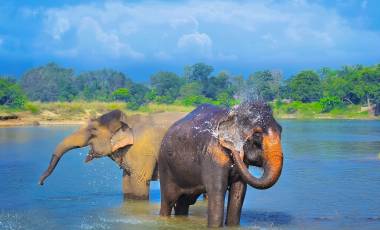
Nepal & Bhutan: Highlights
Discover the Himalayan kingdoms of Bhutan and Nepal on this 16-day tour. Start your journey in Kathmandu, the capital of Nepal, and take in its magnificent UNESCO World Heritage sites. Go on an exciting safari at the Royal Chitwan National Park and bask in panoramic mountain views in the scenic town of Dhulikhel. Continue your…

From the Blog
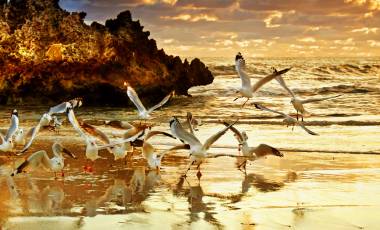
Best trips to take in 2020 – Dream destinations from around the world!
With the 2020s knocking on our doors, how about starting off the new decade with a big bang? What’s on your wishlist? Or are you still wondering where to go? Your friends at Enchanting Travels are here to help.
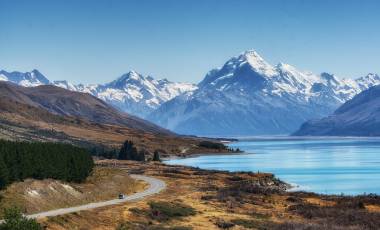
Here is Your Guide to the Best Road Trips Around the World
From fairy-tale castles to sparkling lochs, amazing wildlife and stunning natural scenery, embark on a truly immersive experience!

Top Picks: The Perfect Destinations for a Luxury Spa Vacation
We have handpicked a fascinating selection of luxury spa vacation destinations that combine the best in wellness treatments with luxuriant touches – a stay here will leave you refreshed, mind, body and soul.
What Our Guests Say

The Enchanting Difference
Authentic & unique.
Our award-winning, licensed local guides provide incredible insights and exclusive experiences for you.
Personalized & Private
Our experts completely customize your private tour to match your interests and preferences.
High-Quality Experiences
All our accommodations and services are personally tested by our team.
Fully Supported Travel
You’ll have a personal and dedicated trip coordinator, backed by 24/7 support in case of emergencies while you’re traveling.
Financial Protection & Flexibility
Your booking is flexible and completely secure with us.
Safe & Secure
Your safety and well-being are our top priorities.
Do you have a vacation in mind? Personalize your itinerary with our Trip Builder.
12 tips for your first trip to Southeast Asia

Editor's note: The team at The Points Guy loves to travel, but now is not the time for unnecessary trips. Health officials note that the fastest way to return to normalcy is to stop coming in contact with others. That includes ceasing travel. We are publishing travel deals and destination content because we should all use this time to think about and plan our next adventures. TPG doesn't advise booking trips for travel until summer or fall — and even then be mindful of cancellation policies. This story has been updated with new information.
Southeast Asia is one of the most magical regions on earth. Filled with stunning beaches , historic temples, verdant jungles and bustling cities, there's something for every traveler there. But staying healthy and safe is something to consider when visiting a region so different from your own, especially for the first time. Things like visa requirements , best times to visit, currency exchange and what to bring may be at the top of your mind, as well as the most obvious question -- which country should you visit?
After a number of long-term visits over the years to varying countries in Southeast Asia, I've learned a thing or two. Beginner travelers should check out these travel tips and follow this Southeast Asia travel advice when considering a visit to the region for the first time.
1. Pick your countries wisely
While it's tempting to visit many countries and cities on a single trip to Southeast Asia, it's worth taking it slow and digging into the culture of a single country and/or just a handful of places, rather than exhausting yourself with a travel itinerary that has you hopping all over what amounts to an enormous territory.
For example, Bali , Indonesia and Hanoi, Vietnam , are both set within Southeast Asia, but beware -- they're a seven-hour flight away from each other. Before you commit to flights and accommodation , pull out the map and choose countries/cities that are relatively close together or are easily accessible by nonstop flights or direct trains.

When deciding on the best country to visit in Southeast Asia, you should also take into account whether you want to explore cities, relax on beaches, see the outdoors or embrace culture, cuisine and history.
The best country to visit for beginner travelers could be Thailand. First-time visitors to the region may also enjoy Bali, Indonesia. Both of these spots are used to an influx of tourists and have plenty of amenities. They're both relatively easy to navigate and have friendly locals that speak English.
More experienced travelers or those wanting an adventure may prefer spots like Myanmar, Malaysia or Laos. While almost all Southeast Asia destinations welcome backpackers with open arms, Cambodia is very backpacker-friendly -- and is extremely affordable, especially outside of tourist destination Angkor Wat. Those wanting to lap a country from top to bottom should head to Vietnam. For unexplored beaches, visit more off-the-beaten-path islands in Indonesia (that aren't Bali) or the Philippines .
Related: 9 of the best sustainable backpacks for travelers
2. Check visa requirements
Several Southeast Asian countries require your passport to have at least six months' worth of validity left or a specific number of empty pages -- and visa requirements seem to be constantly changing. For example, a few years ago, e-visas weren't available online for several entrance points in Myanmar, but now they are. Meanwhile, Vietnam has changed its visa requirements in past years and now citizens from several European countries no longer need a visa to enter.
Check visa requirements ahead of time and apply online if possible. For example, U.K. nationals will find that applying for a visa to enter Laos online is relatively straightforward and can ease hassle upon arrival, especially when you're jet-lagged in a new and unfamiliar country.

If you do end up needing a visa upon arrival at your chosen destination(s), be prepared with the proper currency and passport-size photos of yourself. Many airport visa offices have ATMs/exchange services (albeit with terrible rates) and photo booths, but if you arrive with these items in hand, as well as any forms you might need printed and filled out ahead of time, the visa experience will be quicker and easier.
Also, be sure to grab a couple of extra entrance and exit forms each time you enter a country -- if you end up leaving and reentering that country by bus, boat or train, having the correct forms handy will enable you to save time you'd otherwise spend in a line.
3. Pack light and right
Deciding what to bring to Southeast Asia is a common conundrum. Try to pack as light as possible and do laundry wherever you go rather than trekking around with an overweight backpack or heavy trolley bag. In most Southeast Asian countries, you can get your clothes washed, dried and ironed in under 24 hours for the equivalent of a couple of dollars, and at street markets, you can shop inexpensively for any extra clothes and toiletries you may need.

These are the things you should make sure to pack:
- raincoat/umbrella (especially during rainy season)
- modest clothing covering knees/shoulders for temple visits
- first aid kit (including all kinds of stomach medicines)
- small flashlight
- earplugs/ sleepmask
- hand sanitizer
- travel packs of tissues (note that squat toilets usually aren't equipped with toilet paper)
- adaptor/multi-port plug that allows you to charge a few of your electronics at once
Related reading: 14 packing hacks for traveling with just a carry-on
4. Best times to visit Southeast Asia: rainy or dry season?
You can organize your trip in one of two ways: picking a destination(s) first and then selecting the best time to go, or picking your destination(s) based on what will have the best weather during the time you're able to visit. Most countries in Southeast Asia have two main seasons: wet and dry.
Even certain regions within countries can have separate rainy seasons . For example, if you want to have a beach holiday in Thailand over Christmas, it's better to choose islands in the Andaman Sea, which are sunny, like Koh Lanta or Koh Yao Yai and skip the Gulf of Thailand islands, such as Koh Samui or Koh Tao, where it's rainy season.

If you're visiting larger cities, rainy season may not be so bad. You'll experience a downpour or two for sure, but you may get cheaper hotel deals or better value on airfare. But, it may be best to avoid smaller towns or villages during the wet season where lack of infrastructure during floods may complicate your stay.
It's also important to consider additional seasonal situations -- like burning season, where many Southeast Asian regions burn brush and old crops to prepare for planting. Air quality is bad during this time and may affect tourists, especially those with respiratory problems.
5. Safeguard your health
Before you travel to individual countries, check their vaccine requirements and recommendations -- and then actually get those vaccinations. If you're worried about the expense, be aware that you can opt to get your vaccinations upon arrival in Bangkok , where they're often affordable at local health centers. When traveling to any Southeast Asian country, getting tetanus shots and typhoid vaccines are generally a good idea. In addition to any necessary vaccines, seek out strong mosquito repellent, as this can help protect you from dengue fever and malaria.

6. Get travel insurance
Plan to get travel insurance when visiting the region, because health risks in Southeast Asia don't entirely diminish even if you've had your vaccines. As Southeast Asia trips often include adventures like indulging in street food, zip-lining, scuba diving , jungle treks and motorcycle rentals, it's wise to have a policy in place.

During a previous trip to Thailand, I developed an ear infection from snorkeling . Thanks to my travel insurance, I was in and out of a doctor's office within an hour, complete with medicine and a special souvenir bag (see above) -- all covered by my policy. Years ago in Malaysia, my husband cut his foot on coral while diving and required antibiotics. Having travel insurance made the situation an easy (and free) fix. Insurance policies can also cover non-health-related problems such as lost luggage or issues with flights and hotels, so look into getting the best travel insurance policy for you.
7. Consider alternate travel methods
While we love a good points and miles deal, using trains, low-cost airlines and ferries is a great way to save money while moving from place to place. Buses are generally the cheapest method of transport in Southeast Asian countries, but be aware of travel scams and know that you might be in for dirt, dust, unpleasant (or simply strange) smells, crowds, bumpy roads and more.

Ferries can sometimes be crowded, but are a quick, cheap and a direct form of travel between islands, and though often slow, trains are a fun way to explore and see the lay of the land(s). Low-cost carriers such as AirAsia, Bangkok Airways , Nok Air, Tiger Air and more offer cheap flights to a variety of destinations -- and some even have frequent flyer programs . Though often a splurge in comparison to bare-bones taxi-boat journeys, river cruises are luxurious, scenic adventures and a great mode of transportation.
8. Rent a scooter at your own risk
If I had a dollar for every 20-something I saw with a bandaged knee, chin or foot in Thailand, I would easily be rich. Renting scooters can be a great way to get around, but in some Southeast Asian countries you'll need to drive on a different side of the road you're accustomed to and you may have to battle intense traffic, hills, curves, stray dogs, dirt or sand roads, crazy taxi drivers -- and worst of all, other foreigners driving scooters who are unfamiliar with these conditions. Even though many locals and tourists don't wear helmets, you still should.

Before you head off with a rental scooter, be sure that your rental agent sees you taking detailed photos and/or videos of the bike, and actively point out any scratches or concerns to them. Though scooter rentals are often just a few dollars per day upfront, scooter scams are common, where a rental agent will insist that you've scratched or otherwise damaged their motorbike, charging you hundreds (or even thousands) of dollars in damages before they'll return your passport to you.
9. Be smart about currency exchange
Airports and banks often charge excessive fees to exchange money, but you'll usually get a decent exchange rate if you wait to change money once you're in Southeast Asia. However, know that Southeast Asian hotels generally offer terrible exchange rates, so stick to banks or other spots that advertise "Money Exchange." Make sure to change plenty of cash, as street market vendors, taxi drivers and smaller restaurants may not take credit/debit cards.

Many hotels and larger restaurants will take credit/debit cards though, so make sure to use ones that hold no foreign transaction fees.
10. Avoid "temple burnout"
"Temple burnout" happens when you see so many ornate and beautiful temples that they all begin to look the same -- and you lose interest in seeing any more, ever. To avoid this malady, arrange some non-temple-oriented activities on your Southeast Asia travel itinerary, or simply take a day (or two) off to relax and rest your eyes. After a bit of visual reboot, you'll have a whole new appreciation for a region of the globe that has more amazing temples than you could possibly imagine.


11. Don't be afraid to bargain
You should absolutely bargain with local street vendors or at markets -- it's a cultural norm to do so. I've had some great times bargaining and laughing with street vendors and even made friends with a few locals along the way, coming home with memorable souvenirs for my efforts. Just make sure to barter reasonably and always with a smile on your face. The point of bargaining is to engage with locals and agree on a fair price, not to cheat them or get scammed yourself.

12. Be a responsible tourist
It's best to avoid orphanage tourism, hill tribe visits or any activity that exploits children, ethnic groups or animals. When participating in elephant tourism, make sure to carefully vet your organization and make sure they're protecting the animals in lieu of harming them.
While begging children may tug at your heartstrings, the more money they earn from tourists, the more their parents see them as a source of monetary gain and the less inclined they are to send them to school -- where they'd have a shot at a better future.

When diving/snorkeling or out in nature, make sure to adhere to the no trace policy , not littering or taking anything from delicate natural environments.
If you want to lend real support to locals in Southeast Asia, dine at Tree Alliance restaurants . Located in Myanmar, Cambodia and Laos, these eateries train disadvantaged young adults as chefs and waiters and also donate money to programs that assist low-income locals to get jobs. Offering traditional cuisine, these restaurants provide a delicious way to help.
Related: 5 tourism-supported charities that need your help now more than ever
Or, visit an organization like Big Brother Mouse in Luang Prabang, where tourists can read books, play games or chat with kids and teens eager to practice their English.
Related: How to be a better traveler
Bottom line
Armed with these useful travel tips for Southeast Asia, you'll have a safe, smooth and successful first trip to this beautiful region. Happy travels!

- Amazon River
- Galápagos Islands
- Indonesian Archipelago
- Mekong River
- Irrawaddy River
- India Cruises
- Pacific Coast
- Patagonia Cruises
- Machu Picchu
- Iguazu Falls
- Southeast Asia
- Southeast Asia Travel Guide
When Is The Best Time To Visit Southeast Asia?

The best time to visit Southeast Asia is an important consideration in vacation planning for such a vast region, with its diverse countries, colorful festivals, weather patterns and micro-climates, especially with activities like diving, trekking, swimming, cruising and volcano scaling to partake in. So when should you go? Here we take a brief look at the main things you should consider when thinking about when to travel to Southeast Asia .

Broadly speaking, with the exception of regional high altitudes, most of Southeast Asia is toasty warm, with temperatures ranging between 77 to 95 degrees Fahrenheit (25 to 35 degrees Celsius) while humidity is high all year round, with a few exceptions.
Many consider the cooler and drier weather between November and February the best time to visit mainland Southeast Asia . The hottest time of the year falls between March and May and can be a little too hot for some. There are exceptions though as large parts of Indonesia experience their dry season from April to October.
Travelers should remember that Southeast Asia ‘suffers’ from a monsoon climate, so during the wet (monsoon) season – which typically falls between June and October in most countries – there are invariably rain downpours in short bursts, rather than all-day drizzles, and this can make sunbathing, diving, surfing and hiking a little less enjoyable, if not treacherous in some instances.
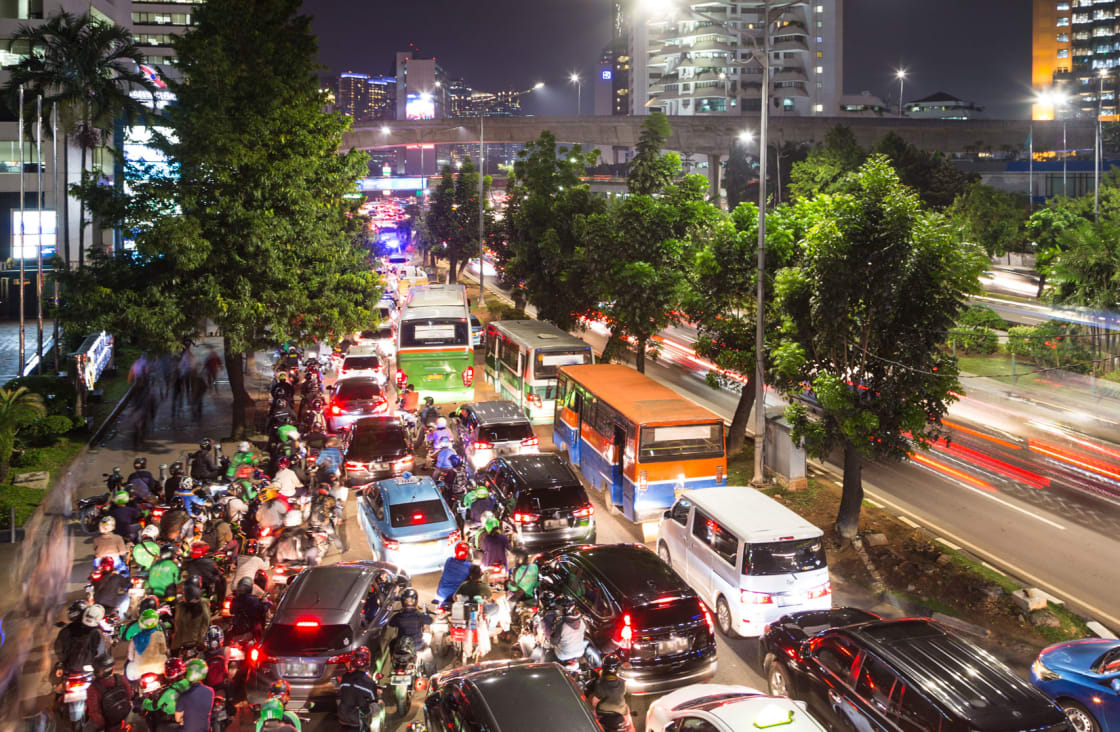
As you might expect, November to February is the most popular time for American and European vacationers, with some 55 million travelers descending on the region eager to escape their respective winters and take advantage of the optimal weather conditions. If you wish to avoid the crowds of tourists, it is better to steer clear of these months.
If you can stand the heat, why not wait a little longer until the crowds subside during the hotter months between March and May. Crowds of a different kind take to the streets in early April, as Buddhist locals let their hair down across Myanmar, Thailand and Laos with their New Year celebrations. Depending on your travel aspirations this may be a reason to aim for this month rather than avoid it.

Public holidays can mean unexpected disruptions to services, transportation, and attraction opening times, but if you are prepared, Southeast Asia’s vivid festivals can prove to be one of the highlights of your trip.
Between January and mid-February, Vietnam’s seven-day Tet (Tet Nguyen Dan) festival marks the advent of spring and the start of the Lunar New Year and gives you the chance to experience traditional and colorful customs across the country, from lantern and flower festivals to Buddhist pagoda rituals. The Buddhist New Year celebrations that take place across many parts of Southeast Asia during April are deeply rooted in tradition and revolve around the cleansing of sins, but Thailand’s Songkran festival has taken this to a new level, evolving into a world-famous water fight, with no one out of bounds for soaking during three days of watery mayhem.
Head to Sanur’s sandy beaches in Bali during July for a spectacular kite festival, where stunning kites of all different shapes, colors, and sizes take to the skies in the hope of persuading the Balinese Hindu Gods to grant a plentiful harvest for the coming year.
During September and November respectively, little Laos is home to larger than life festivals, firstly with the colorful costumes and aquatic parades of its dragon boat races along the riverbanks of the Mekong, and secondly with the glittering Boun That Luang Festival in Vientiane, the country’s most important Buddhist festival and a spectacular sight to behold.

Southeast Asia is renowned to be easy on a traveler’s pocket (backpackers can get by on about $35/day), the countries of Myanmar, Laos, Cambodia, and Indonesia, especially. Despite the relative affordability of the region, there are certain times of year to travel that may stretch your dollar even further. If you can bear the heat of the hottest summer months between March and May, you will find flight and hotel costs tend to fall, especially to Vietnam and Thailand. The cheapest flights are likely found for travel between the less sought-after months between September and October, before the start of the dry (and most busy) travel season.
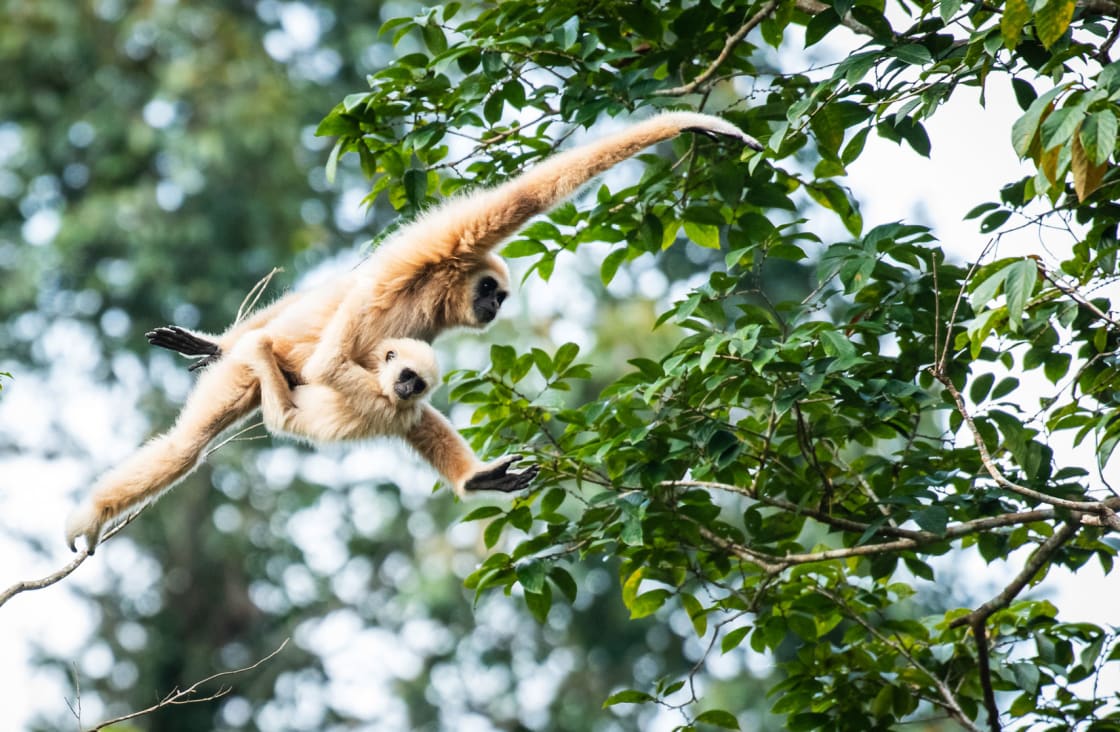
If you are heading to West Papua in search of birds of paradise performing their elaborate courting rituals, go in the dry season between September and October, when the lowlands are more accessible and birds most active. March through October is the ideal time to see Borneo’s endangered orangutans. Southern Thailand’s Khao Sok National Park is a great place to see leopards, sun bear, gibbons, tigers and elephants, with recommended tours taking place in October, November and May.
If you are a keen diver and want to spot Whale Sharks, it is important to know that these animals are migratory. For your best chances of spotting them, head to Myanmar’s Mergui Archipelago between late January through April, Thailand’s Koh Tao between March and May or September and October, or West Papua’s Cenderawasih Bay where they can be seen year-round but best observed between August and October.
River Water Levels and Sea Conditions
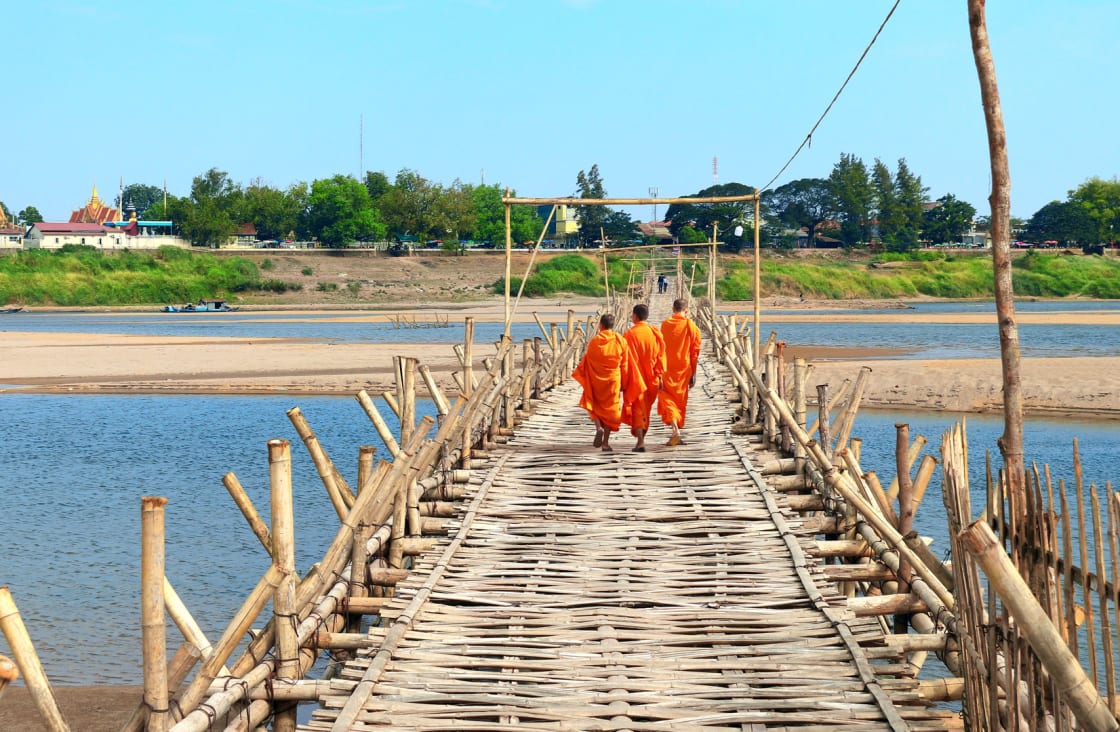
Weather-wise, the best time to cruise the Mekong in Vietnam and Cambodia falls anywhere between November and March, November being quite cool with not too much rain and temperatures rising to reach their peak around April-May. The rains will start in late May or June, and most ships will suspend operation for yearly maintenance around June and July.
When planning the Lower Mekong cruise , it isn’t only the weather that you should think of. If you hope to cruise across Tonle Sap lake, choose the months right after the rainy season (high water season) between August and mid-November, when the waters are high and ships can enter Tonle River and Tonle Sap lake. In the low water season, the river is too shallow and the boats take a different route – to Kampong Chhnang and Kampong Cham.
Traveling on the Upper Mekong in L aos is best between November and January when the weather is good and the water levels high after the rainy season, which starts around May and subsides around October.

Generally, Indonesia has great weather year-round, but it does experience heavier rains from October through April. The monsoon is not even throughout the archipelago, therefore cruises are operated accordingly to the best conditions in the region.
Bali and Komodo areas are great to visit from May to September, with dry and warm weather (and Bali festivals in place). Borneo is always hot and humid but will see less rainfall in the same months as Bali.
Raja Ampat is great for divers in September to April, due to the high number of manta rays, but the calmest waters and best visibility is in November-March, and this is when many cruise lines decide to reposition to that area.
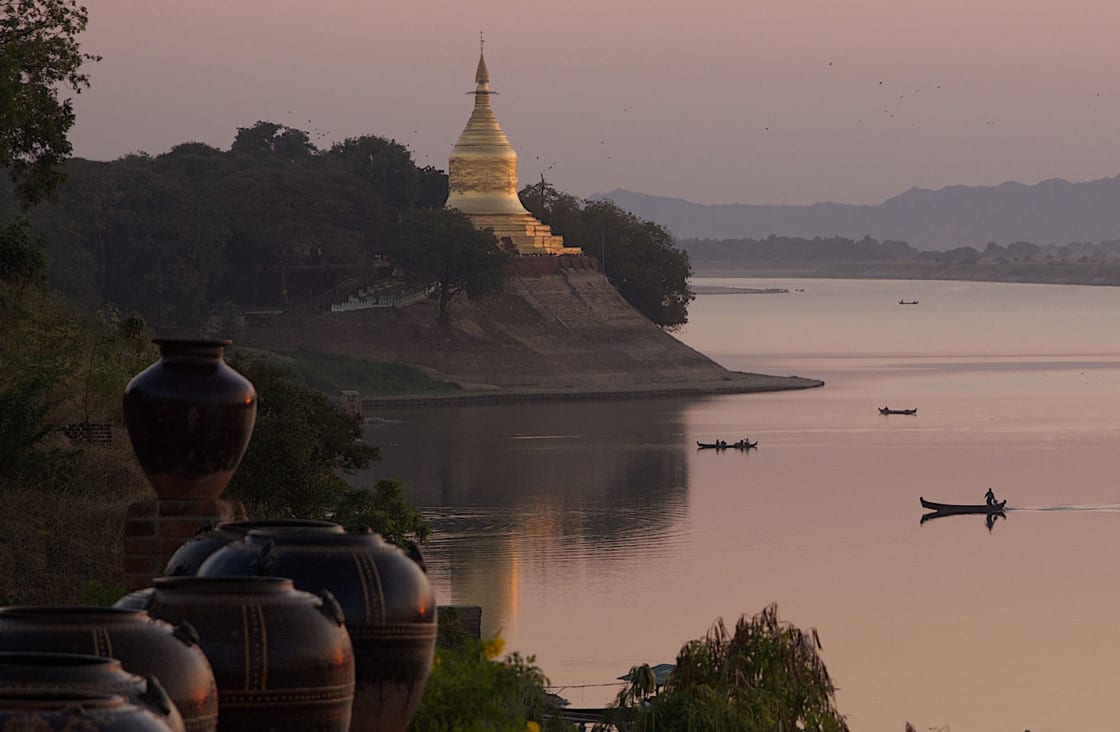
Myanmar, being a tropical country, is either hot or super hot, with dry and rainy seasons, but the weather across the country is not consistent and varies between regions (Inle Lake or Yangon might have different weather than Mandalay at the same time).
When it comes to cruising on the Irrawaddy , the best time for it is between November and April. In May the rains start in Yangon, but Bagan is still dry and extremely hot. Starting in June the rains will increase across the country and August-September will be the wettest.
Lower Mekong
Weather-wise, the best time to cruise the Mekong in Vietnam and Cambodia falls anywhere between November and March, November being quite cool with not too much rain and temperatures rising to reach the peak around April-May. The rains will start in late May or June, and most ships will suspend operation for yearly maintenance around June and July.
When planning the Lower Mekong cruise, it isn’t only the weather that you should think of. If you hope to cruise across the Tonle Sap Lake, choose the months right after the rainy season, when the waters are high and ships can enter Tonle River and Tonle Sap lake. In the low water season, the river is too shallow and the boats take a different route – to Kampong Chnang and Kampong Cham. High water season starts in August and lasts approximately until mid-November.
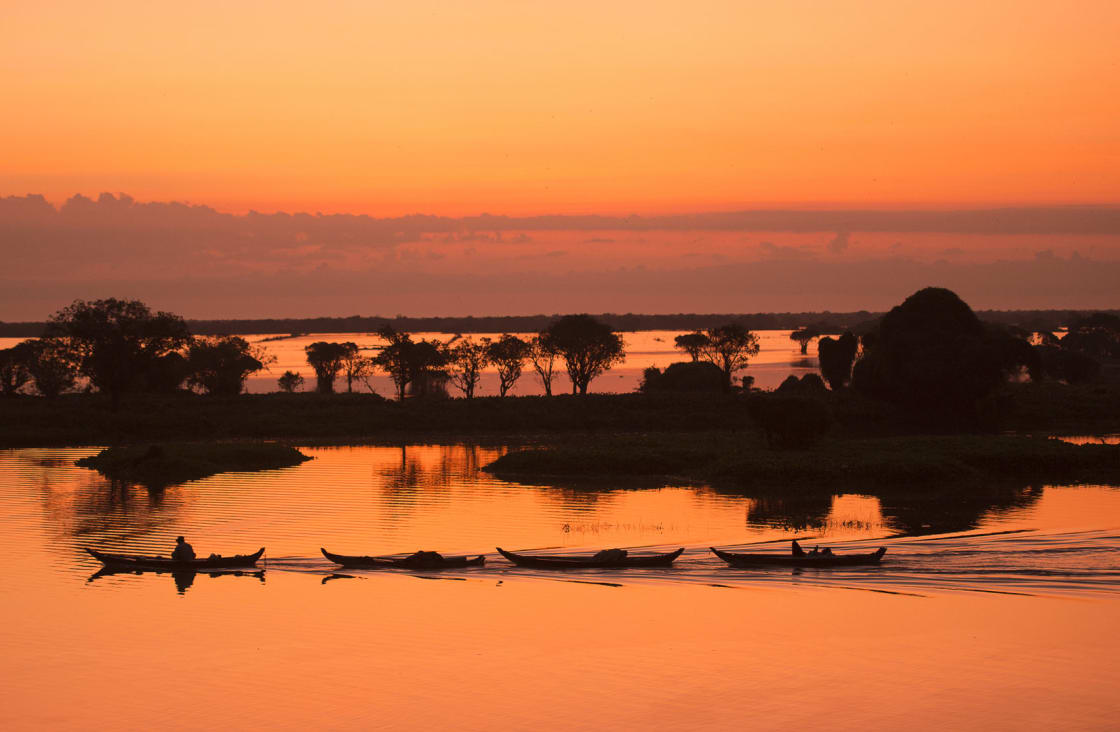
Upper Mekong
Traveling on the Upper Mekong is the best between November and January when the weather is good and the waters are high. The rains start around May and subside around October. The temperatures will be at the lowest in August-November and will spike in May-June.
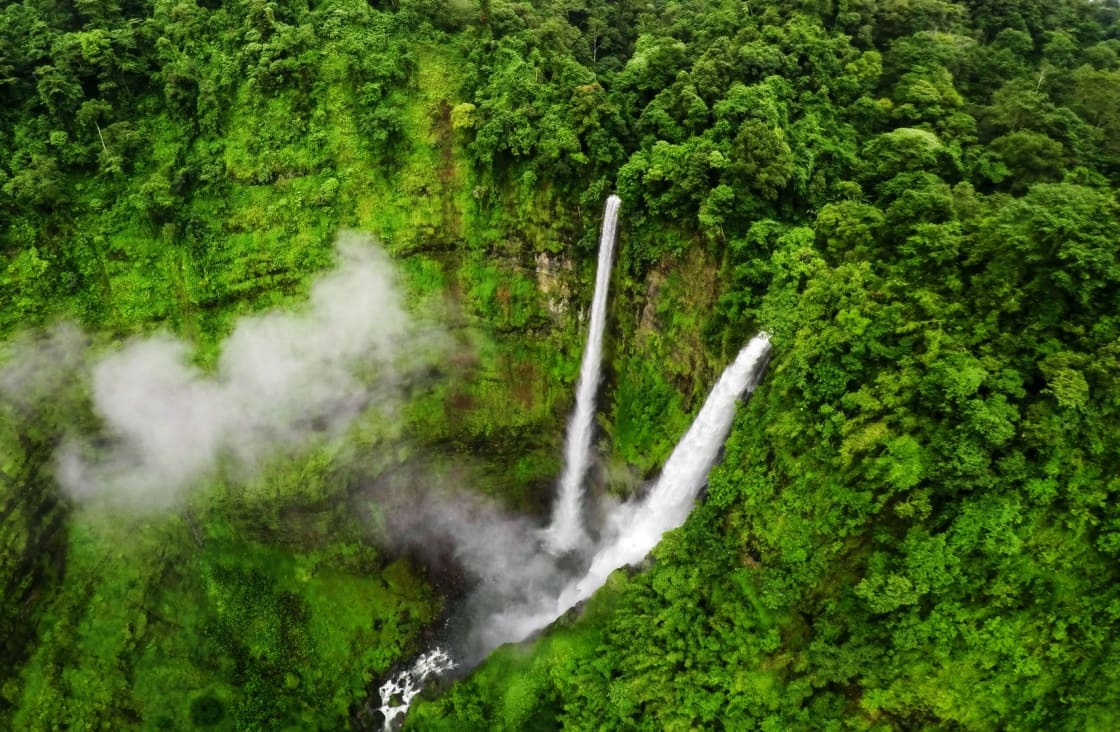
Landlocked Laos is rarely affected by coastal storms. The dry season has two sub-sections: a cool dry season from November to February and a hot dry season, March to late April. The wet (monsoon) season runs from around May to October, with August and September generally the wettest months. March and April can be blisteringly hot, while November to February are the cooler months.
Best to visit: Laos’ cool dry season – and peak season – has relatively low temperatures, cleaner air, and ideal river travel conditions. However, during the wet season, rivers are high and rapids submerged, meaning slow boats can make better paces and there are also lower temperatures but fewer crowds. Choosing the best time to visit Laos , consider the activities you plan.
To consider: during the hot dry season, inevitable smoke haze covers most of Laos, caused by farmer’s slash and burn traditional agricultural practices.

Cambodia’s dry season runs from late October to April, with November to January bringing cooler, more comfortable temperatures. March to June is Cambodia’s hottest time of the year, peaking in April and May. The wet season runs from May to October, around three-quarters of Cambodia’s annual rainfall, with rains generally heaviest from July to September.
Best time to visit: the dry season, especially November to January, is Cambodia’s peak travel time , due to the relative lack of rain and cool temperatures and southern islands brilliant sunshine with clear, calm waters – ideal for snorkeling and diving.
To consider: some might find the hottest months, April and May, uncomfortable for sightseeing. During the peak wet months, July to September, it can rain every day, with flooding and rough seas. On the upside, there are fewer crowds, less dust and lush greenery abound – sights like Angkor Wat look magnificent post-tropical downpour.
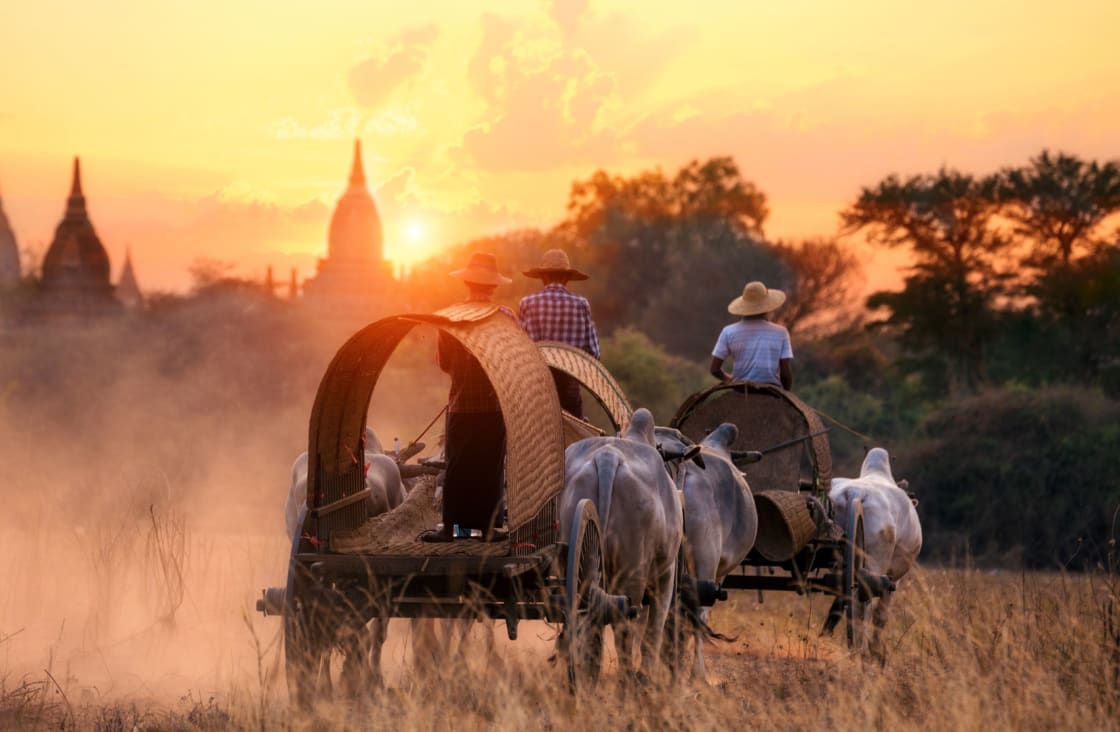
Myanmar’s dry season runs from October to late April and the wet (monsoon) season, from May to early October, with the hottest months, late February to June
Best time to visit: late November to February are probably the most comfortable months to travel in Myanmar , with the least rainfall, clearer skies and lower temperatures, and post-monsoon, the country is at its most lush green – why this is peak tourist time.
To consider: From June to September, southern islands are in the throes of monsoons and many shut down their services and transportation.
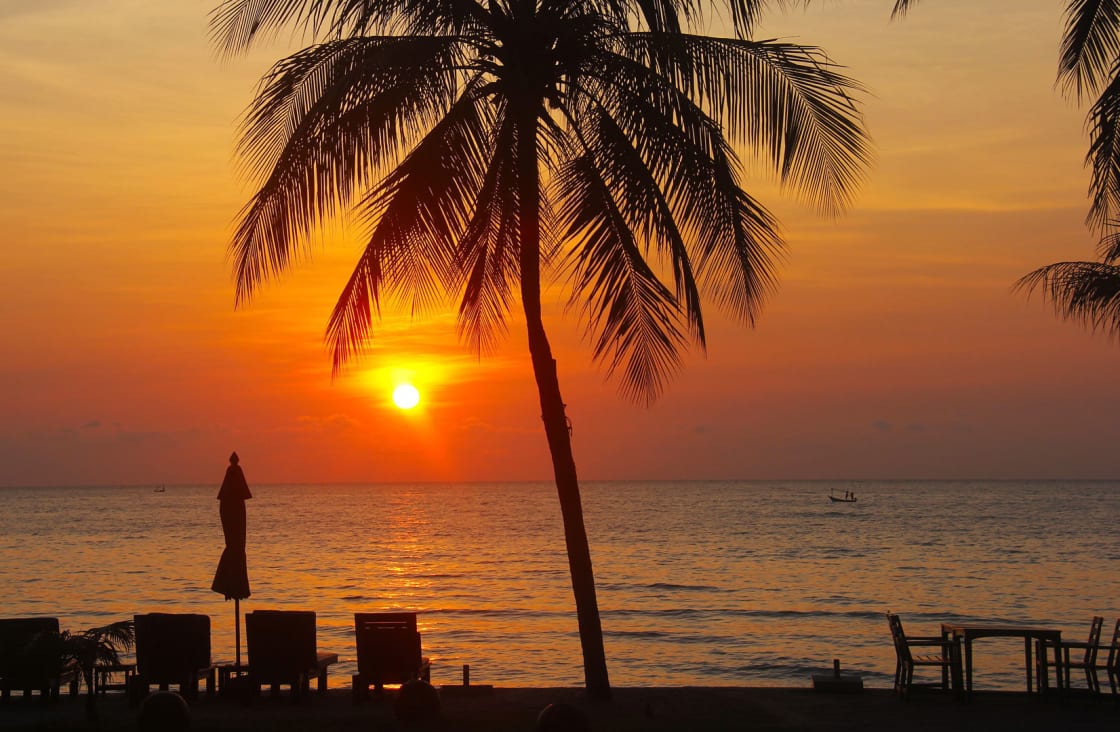
Although with regional variations, Thailand is tropically hot and humid for the majority of the country through most of the year. The wet, monsoon season runs from July to October, bringing most of Thailand’s annual rainfall and flooding is not uncommon in many parts. April is the hottest month. The best time to visit Thailand in a way is anytime, but when planning your holiday, do consider the region and activities you’re planning on.
Central and Northern Thailand has two seasons. The dry season is from November to May-June; cooler temperatures are generally felt from October to January and the main dry season runs from March to May. The wet season is June to October- November with Bangkok experiencing its wettest month in September.
Southern Thailand
The south has two wet and dry seasons, but with east-west variations. The southern west coast (Andaman Sea) has a wet season and most rainfall from April to October. The southeast coast (Koh Phangan, Koh Samui, etc) is wet from September to December, rains can get torrential from October to November, making diving and beach life a no-no. Overall Thailand’s southern parts receive the country’s biggest rainfall, but other times of the year is dry, hot and sunny, with peak seasons, December and January.

Vietnam’s diverse weather patterns vary depending on the time of year and geographic location, with several microclimates to consider. Generally, the wet season runs from April to October, and the dry season from November to March. When planning your Vietnam holiday and considering the best time to travel , do consider the activities and regions of interest.
Northern Vietnam: has a cool to cold season, from November to March and a warm to hot, wet season (from April to October). December and January can get quite frosty in the far north mountains and heavy mists around this time can reduce visibility in tourist favorites, Sapa and Halong Bay. The wettest months are July and August, the driest, December and January.
Central Vietnam: while the coastal areas see rainfall between April and September, it’s less than other parts of Vietnam, but from August to early January, northern-central Vietnam (Hoi An, Danang and Hue), can receive considerable rain; Hoi An’s Ancient Town invariably floods ctober and November. This region can also be greatly affected by typhoon season, August to November, with severe storms lashing the coasts. The southern-central coastal strip, from Nha Trang to Mui Ne, is less affected with a longer dry, sunny season, albeit Nha Trang undergoes a wet, windy micro-climate November to January when beaches and diving are greatly impacted.
Southern Vietnam: sees much of its rain in the wet, monsoon season, roughly June to November. Best time to visit: Northern destinations, such as Hanoi and Sapa are best in the spring and autumn months, with little rain, clear skies, temperate conditions, and beautiful flowers. The coastal stretch from Hue/ Hoi An down to Nha Trang is best from January to June, while southern Vietnam’s HCMC, Mekong Delta and Phuc Quoc are ideal, November to April.
To consider: Typhoons from July to September-November can sometimes wreak havoc across Vietnam, especially the north and central regions, affecting boat journeys. Winds and rough seas from June to September curtail beach and diving activities on Phu Quoc Island.

A volcanic archipelago of 17,500-plus islands across the equator, Indonesia is hot throughout the year and with minor regional exceptions, has two distinct weather seasons . The dry season runs from April-May to September and the wet, monsoon season, late October to late March, with the heaviest rains in January and February. By March to April, Indonesia’s most popular tourist regions, including Bali and Lombok, are finishing-up their rainy seasons.
Best time to visit: The dry season months, around May to October should guarantee sunny, dry conditions with few exceptions, perfect for surfing, diving, and trekking. Bali’s second peak season July and August coincides with the European vacationers, with cooler evening temperatures than earlier in the year.
To consider: During the wet season, Indonesia experiences heavy rains especially January and February and Bali suffers serious ocean plastic pollution; however it’s still the peak season for Christmas and New Year vacations. Conversely, Raja Ampat (Papua) experiences rough seas and windy conditions from June to September-October, making dive sites limited or inaccessible. As the world’s largest Muslim nation (with exceptions, such as Hindu Bali) expect some service and travel disruptions during Ramadan (fasting month) between April and July.
While Rainforest Cruises aim to provide accurate and up-to-date information, we make no representations as to the accuracy or completeness of any information herein or found by following any link on this site. Rainforest Cruises cannot and will not accept responsibility for any omissions or inaccuracies, or for any consequences arising therefrom, including any losses, injuries, or damages resulting from the display or use of this information.
You may also like

Jungle Packing List: What To Pack For The Amazon Rainforest
For many travelers, visiting the Amazon jungle is a once-in-a-lifetime adventure, and since the Amazonian environment isn’t like anywhere else, it can be difficult to know what to pack. Knowing what to […]

Total Solar Eclipse Cruise 2023
What will you be doing on April 20, 2023? Imagine being on a tropical island paradise in the remote southern reaches of Indonesia’s Banda Sea and witnessing one of the most profound […]

Raja Ampat Diving: Best Dive Sites, Season, Resorts & Liveaboards
Straddling the Equator off the extreme north-western tip of Indonesia’s Papua province, Raja Ampat is an archipelago of 610 islands; a figure that can be boosted to more than 1500 if you […]
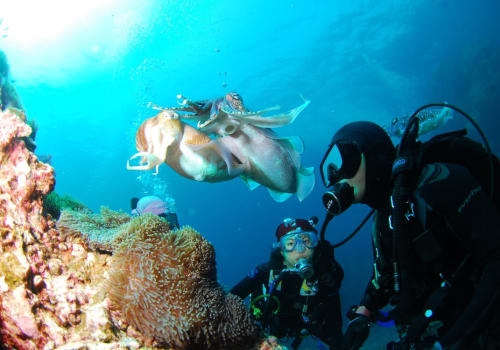
Diving Komodo vs Raja Ampat: Which is Better?
If you had to choose between diving Komodo and diving Raja Ampat, which would you choose? Which is best? Both are stellar locations; Komodo is unique due to the top side dragons, […]
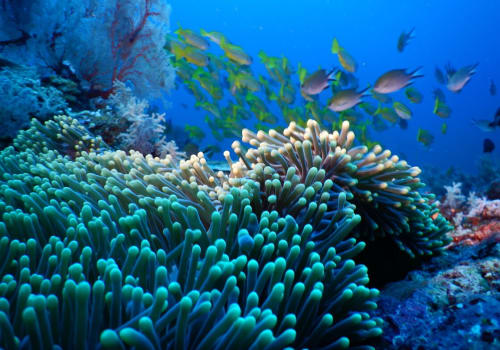
9 Best Diving Spots in Southeast Asia
With the Indo-Pacific Coral Triangle at its heart, Southeast Asia offers some of the most spectacular scuba diving in the world. As a consequence of the immense tidal changes from the North […]
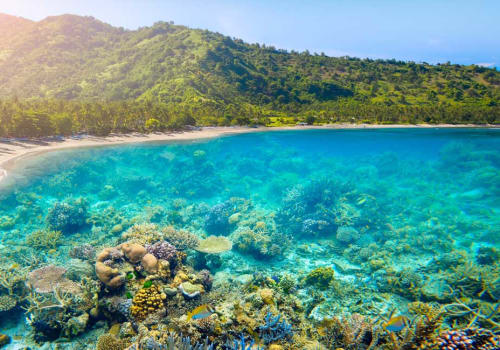
Diving Indonesia: Best Dive Sites, Season & Liveaboard Routes
With 17,508 islands, 50,000 miles of coastline, 98,000 square nautical miles of territorial sea, 20,000 square kilometers of coral reefs and some 600 species of coral, 30,000 square kilometers of mangroves forest, […]
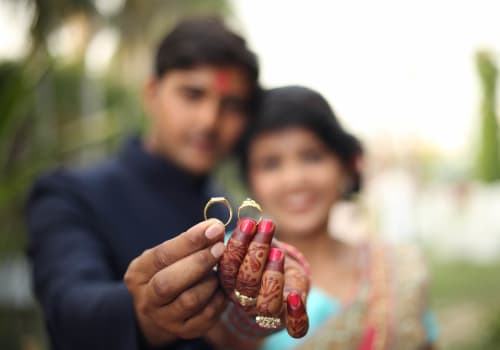
19 Best Honeymoon Destinations & Resorts In India
Whether you are looking for a romantic beach break, or a more active adventure, India is the honeymoon destination that truly has it all. There’s no better place to fall in love […]
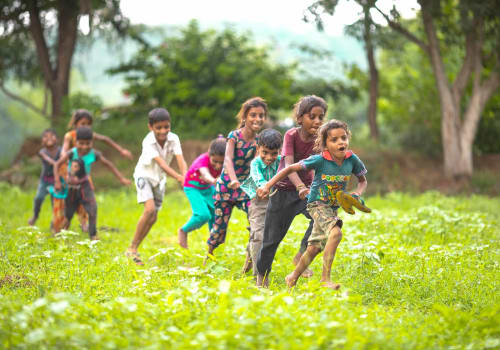
Best Family Trip Destinations & Things To Do With Kids In India
India might not be the most obvious family cruise holiday choice, but for those intrepid families who yearn for something different, India may be one of the most captivating countries you encounter, […]
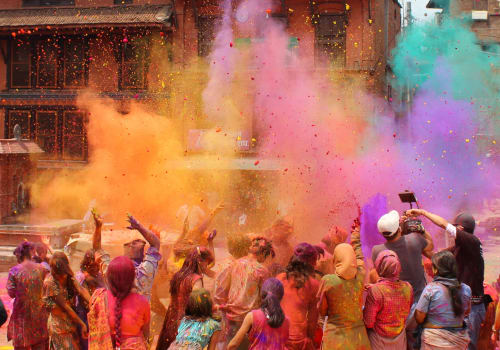
Indian Festivals: Color, Lights, Painted Elephants & Poo?
India is a land of festivals, and it is said that over a thousand take place every year – some celebrated religion-wide, some at a state level, others just within a local […]
On the Lookout for Expert Advice & Offers?
Join over 20,000 discerning travelers and be the first to receive our monthly exclusive discounts, inspiring travel content and expert tips, straight to your inbox.

- Charter (Private)

DEAL FLASH: Get Free Flights On The Nov 27 Thanksgiving Amazon Cruise Aboard Zafiro
When's the Best Time to Visit Southeast Asia?

Although relatively compact, Southeast Asia has a seemingly infinite amount of climates to match its varied mountains, beaches, religions and cuisines. Weather patterns vary wildly even within the same country -- in Thailand, for instance, when it’s the sunny dry season in Phuket, it’s time for monsoons less than 200 miles away on the island of Koh Samui.
Whether planning a weeklong beach holiday or a three-month trek around the region, it’s useful to know what weather to expect. Here’s a handy guide to high and low seasons in some of Southeast Asia’s most popular spots.
Bali, Indonesia
When to go: April to October. Temperatures average 75-86 F, and the weather is mostly dry. July to September is peak holiday season and when you can expect to pay the highest rates.
Rainy season: December to February. These months average 12 inches of rain, though it’s more akin to short, intense showers than daylong deluges, meaning you can still enjoy an excellent (and cheap) holiday.
When to go: January to March and June to September. Malaysia straddles the equator, so it’s hot and humid year-round but these months have the lowest average rainfall.
Rainy season: October to December, though monsoons continue through to February in Borneo.

Create an account.
Just one more thing..., check your inbox., create your password..
- Access to exclusive travel, entertainment, and lifestyle experiences
- Hand-picked offers, personally reviewed by our global team of deal experts, delivered to your inbox
- Dedicated club-member customer support
Sign in to your account.
Enter your password.
Please accept this confidentiality pledge:
I agree to maintain the strict confidentiality required to access Travelzoo’s confidential offers. I will not reveal details of these confidential offers publicly, which includes not posting about it on social media. I will not attempt to purchase a confidential offer for anyone else. I understand that violating these conditions can result in my access being revoked.
To view confidential offers, we require that you sign a confidentiality agreement.
Don’t know password?
You're all set, join travelzoo, sign in to unlock, don't miss out, our deal experts have negotiated member exclusive rates for people like you., and you’re in..
Welcome, Travelzoo Member . You now have access to confidential offers. To access Confidential Offers in the future, you can use the link from your email, or the link under My Account on the Travelzoo website. This page is only accessible to Confidential Offer members.
You now have access to all our deals.
Here are the details of the deal you were interested in.
Sign in to save and manage your deal alerts
Sign in to save this deal to favorites., already a member, not a member yet.

15 Best Places to Visit in Southeast Asia
Written by Diana Bocco Updated Jul 13, 2022 We may earn a commission from affiliate links ( )
The countries that fall in the Southeast Asia region have so much going for them, it's almost impossible to keep them off anybody's travel bucket list . From white, soft beaches and major cities to the rich history, culture, and the must-try food, this part of the world has something for everybody.
While some destinations, such as Thailand's beaches and islands and the majestic Angkor Wat in Cambodia, are known everywhere, some places in Southeast Asia remain more elusive and off the main tourist radar. This gives visitors a chance to mix things up – to go with the crowds to see the most popular spots, but also make time to discover new and different corners of Southeast Asia.
Whatever your heart is set on, here is a list of the best places to visit in Southeast Asia.
1. Angkor Wat, Cambodia
2. ha long bay, vietnam, 3. koh samui, thailand, 4. boracay, philippines, 5. bagan, myanmar, 6. kuala lumpur, malaysia, 7. bangkok, thailand, 8. singapore, 9. yangon, myanmar, 10. luang prabang, laos, 11. palawan island, philippines, 12. tegalalang rice terraces, bali, 13. komodo island, indonesia, 14. chiang mai, thailand, 15. hanoi, vietnam, map of places to visit in southeast asia.
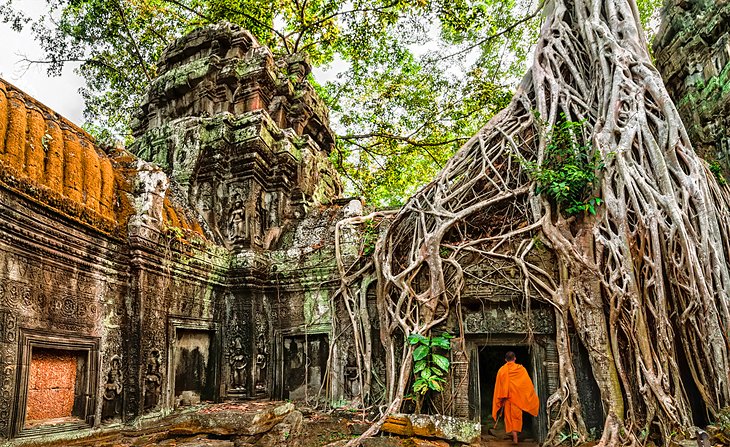
Located in northwestern Cambodia, the city is best known for being the gateway to the Angkor region, but Siem Reap has much to offer on its own. A mix of Chinese and colonial architecture gives the city a unique vibe, where countryside residents and old motorbikes blend with a vibrant café culture and a modern club scene.
Siem Reap is home to two important museums: The Cambodia Landmine Museum and Relief Center , which offers a chance to learn more about landmines and their ongoing impact on Cambodia and other Asian countries, and the War Museum , which covers the involvement of Cambodia in several wars.
There are also a number of massive markets in the city, including Psah Chas, which caters to both locals and tourists with a variety of souvenirs, fresh food, and more.
Angkor Wat , the largest religious monument and one of the top World Heritage Sites , lies less than six kilometers north of Siem Reap. The ruins of this 12 th -century temple complex cover a space of over 162 hectares, with hundreds of structures built using sandstone blocks. There are a number of other temples, also built in Khmer style, in the area, including Angkor Thom, Ta Prohm, and Pre Rup.
- Best Places to Visit in Cambodia
- Top-Rated Tourist Attractions in Siem Reap
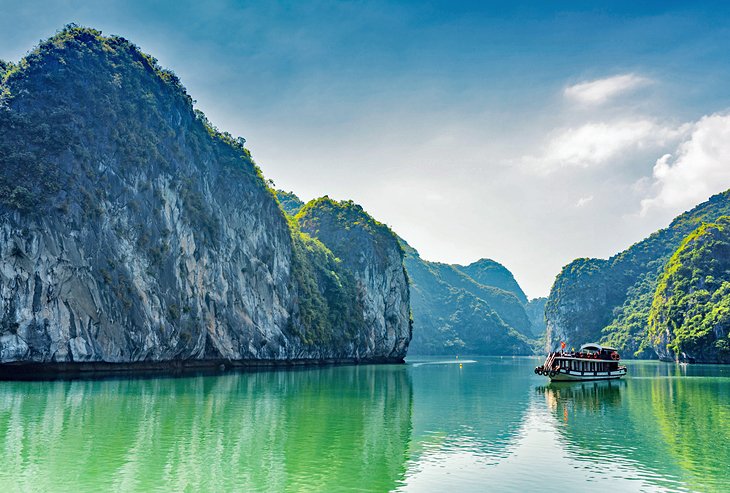
Ha Long Bay consists of a group of islands and limestone karsts that have been declared a UNESCO World Heritage Site . Many of the islands are actually tall monolithic cliffs that cannot be walked on, covered in green, lush jungle. Some of these are hollow and house beautiful caves. Dau Go Cave (Wooden Stake Cave) is a good example, a massive cave with three main chambers, multicolored stalagmites, and rock paintings. Many of the islands also have their own enclosed lakes.
Of the almost 2,000 islands here, less than 40 have permanent residents, often in the form of small communities that live in floating houses and fishing villages.
Ha Long Bay's largest island, Cat Ba , is the most common overnight stop for tourists coming to Ha Long Bay for cruises and tours. Kayaking the turquoise-green waters of the bay is a popular activity here, as well as cruising the bay in traditional junk boats.
- Read More: Things to Do in Halong Bay
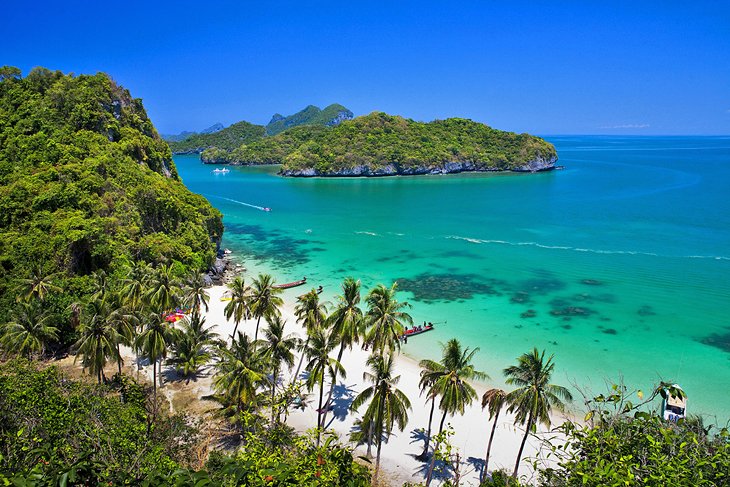
While Koh Samui has always been a beloved destination for sun worshippers and snorkelers, the crowd the island attracts has changed over the years.
Once a favorite of backpackers, Koh Samui has undergone a remarkable transformation. It now boasts high-end resorts, posh spas, and some of the whitest palm-fringed beaches in Thailand. Chaweng and Lamai beaches attract the bulk of the travelers and are well developed, clean, and full of activities, including opportunities to sail, scuba dive, and swim.
While most visitors come to Koh Samui for the beach , there's much more to see and do. Take time to explore the mangroves and hidden lakes of Ang Thong Marine National Park ; the 12-meter-tall golden Buddha at the hilltop Big Buddha shrine; and the Na Muang waterfalls, reached after a trek uphill through thick tropical forest.
Read More: Top-Rated Attractions & Things to Do in Koh Samui
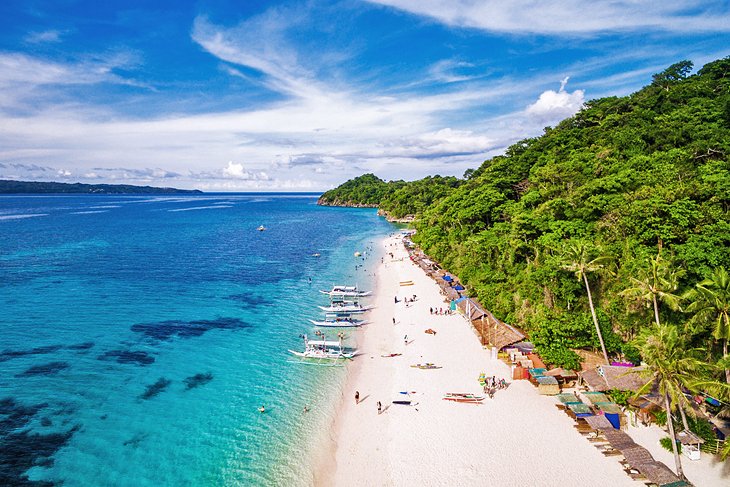
The tiny island of Boracay is just across the water from Panay Island, one of the Philippines' largest islands. Despite being only 10 square kilometers in size, Boracay attracts thousands of visitors a year, who come here for the four-kilometer-long beach and its powdery white sands that wash right into the turquoise waters and the sailboats rocking away on the waves. This is one of the best beaches in the Philippines .
In addition to scuba diving and snorkeling, Boracay is well-known for its parasailing, kiteboarding, and swimming-and, perhaps more unexpectedly, its cliff diving . Diving boards ranging from three to 15 meters high over the water are placed on certain parts of the island, with lifeguards waiting and watching as divers fly up in the air over the mirror-like waters below.
- Read More: Top-Rated Tourist Attractions & Things to Do in the Philippines
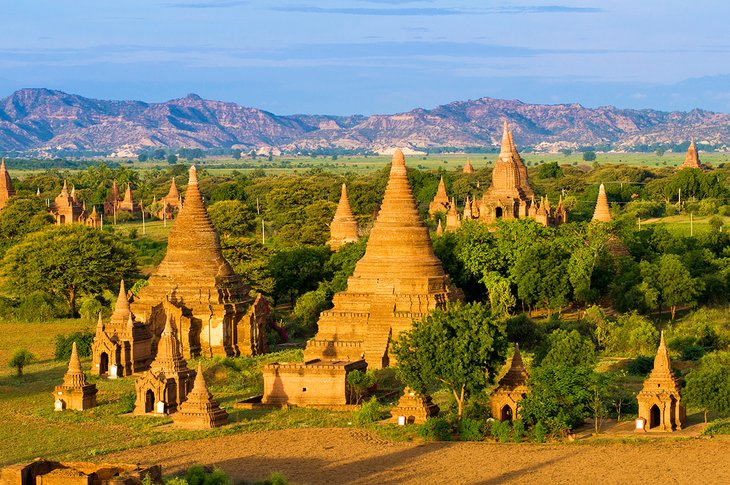
A UNESCO World Heritage Site , the ancient city of Bagan was once the capital of the first kingdom of Myanmar. Between the 11th and 13th century, over 10,000 pagodas and Buddhist temples were built here. Over 3,500 still stand today in the area known as the Bagan Archaeological Zone, which spreads over 41 square kilometers.
One of the most famous temples in Bagan is the Ananda Temple , a Buddhist temple built in a unique fusion of Mon and Indian styles. Dhammayangyi Temple , the largest religious structure in Bagan, is visible from all corners of the city and is famous for its mysterious bricked up interior.
The Bagan Archaeological Museum , located within the Archaeological Zone, is home to artifacts recovered from the area, such as stucco works, lots of lacquer and metal artifacts, and stone sculptures, including a Rosetta Stone dating back 1,000 years.
Just outside the Bagan Archeological Zone sits the sleepy village of Myinkaba, famous for the ancient art of lacquerware. Visitors can stop by workshops to see items being painted by hand, and then grab some souvenirs at the many shops around.
For the most famous sunset-viewing spot in town, head to the white Shwesandaw Paya pagoda. Here, you can climb part of the building to catch the 360-degree views over the hills and other temples around.
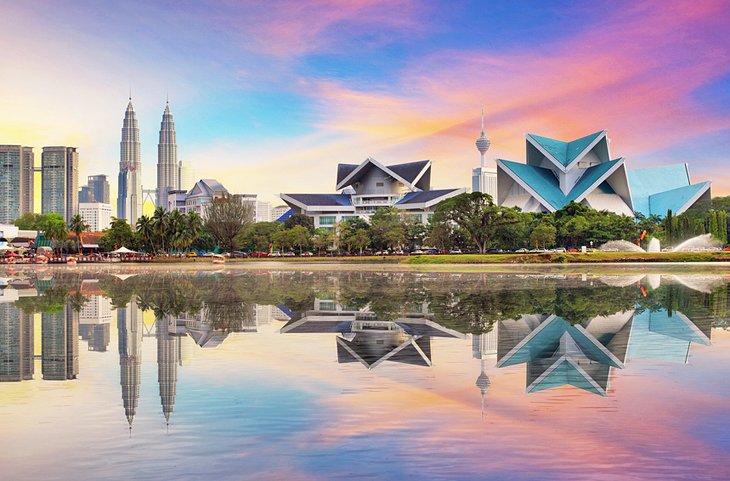
Malaysia's capital is a city of contrasts: the cultural and financial heart of the nation, with magnificent skyscrapers and three of the world's largest shopping centers-but also a great example of colonial architecture, Malay Islamic details, and old Chinese shophouses. Walking through the city is a great way to appreciate the eclectic look of this relatively new Asian capital and see the different cultures and styles melting into each other.
KL is home to the tallest twin buildings in the world , the Petronas Towers – architectural marvels of steel and glass that stand 452 meters tall. The towers are surrounded by a large urban park and are home to a massive shopping center with over 350 stores, a theater housing the Malaysian Philharmonic Orchestra, and even an underwater aquarium.
KL is a very green city, with many parks, gardens, and open spaces everywhere you go. The 92-hectare Lake Gardens is a major urban park that contains a butterfly park, the world's largest aviary bird park , and an orchid garden. You'll also find three forest reserves within the city, perfect for trekking and catching sight of rare fauna.
The limestone Batu Caves (which contain several Hindu shrines); the Cameron Highlands with its tea plantations ; and the colorful town of Malacca, established by Portuguese settlers, are all great day-trip destinations from Kuala Lumpur.
- Top-Rated Tourist Attractions in Kuala Lumpur
- Top-Rated Tourist Attractions in Malaysia
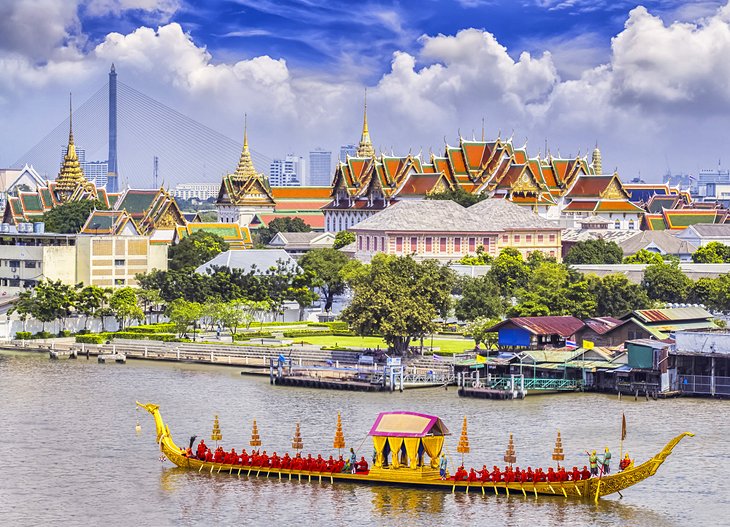
Thailand's capital has lots going for it. Not only is this the main gateway for all major destinations within the country, but this cosmopolitan city also has much to offer on its own. With over 24 million visitors arriving here every year, this is also one of the top cities in the world to visit .
Sitting right on the Chao Phraya River and full of stunning skyscrapers that share the sidewalk with major Buddhist temples and popular cafés and hangouts, Bangkok's multi-faceted sights will please a wide range of visitors, from those looking for excitement and shopping opportunities, as well as those wanting to dive into cultural and historical landmarks.
Even tourists who are only here briefly on their way to the islands should make time to visit the Grand Palace , a former royal residence converted into a museum. For those with more time in the capital city, the royal Vimanmek Mansion (the largest teak building in the world) and the Jim Thompson House, a museum dedicated to the American businessman who revolutionized the local silk industry, are also worth a visit.
For a completely different view of the city, get on a classic tuk-tuk taxi or jump on a water bus.
- Read More: Top-Rated Tourist Attractions in Bangkok
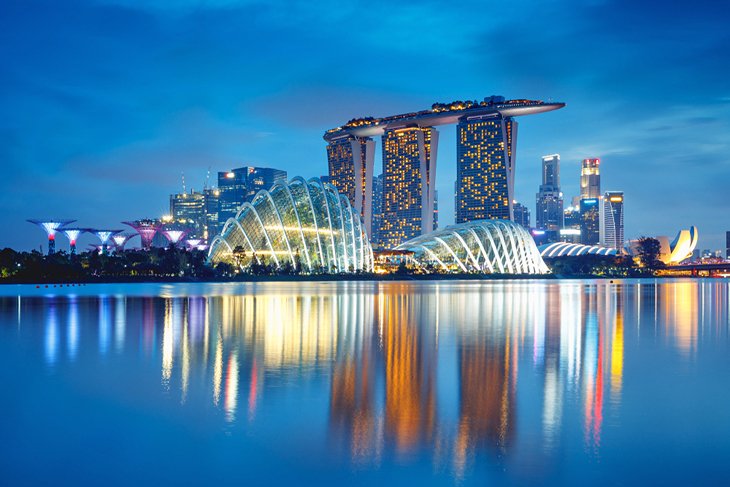
Singapore is a unique spot in Southeast Asia. This island city-state is modern and cosmopolitan , a place where multi-story shopping centers mix with stunning and unexpected natural attractions.
The Marina Bay Sands , an integrated resort, is a good example of that-it offers not only a hotel, but also a museum, art-science exhibits, and the best terraced views over the city and bay from the infinity pool set on their roof.
Sentosa Island is another example, an entertainment complex that includes everything from a two-kilometer-long beach and a restored coastal fort to Southeast Asia's first 4D theater, a Butterfly Park and Insect Kingdom, and even a Universal Studios Singapore theme park.
Singapore's airport has been named the best in the world, and it's an attraction all in itself, home to the world's tallest indoor waterfall, a five-story tall indoor garden, a mirror and haze maze, and a massive butterfly garden with over 1,000 species flying free in tropical greenery.
- Top-Rated Tourist Attractions in Singapore
- Best Beaches in Singapore
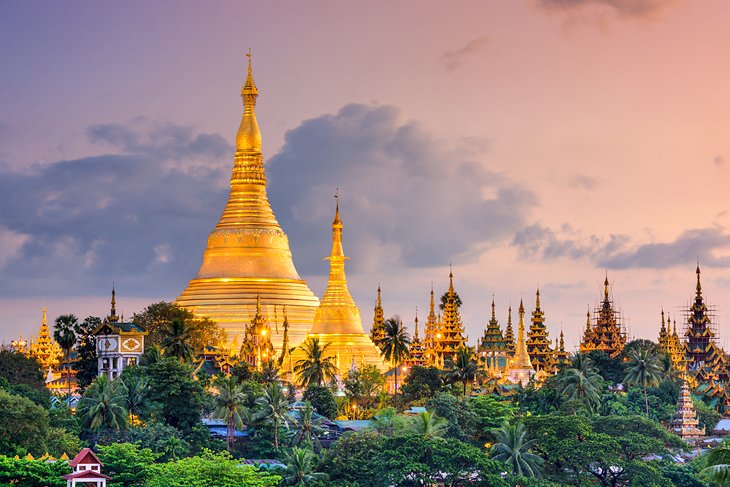
Up until 2011, Myanmar offered only limited access to tourists because of the five-decade-long military dictatorship that commanded the country-so now that it's finally possible to visit, and before it becomes crazy busy with tourists, you definitely should see this fascinating destination.
Yangon was the capital of Myanmar (or Burma) until 2006, when the military government moved it somewhere else. Since the country was under military dictatorship for so long, the city suffered a lot of issues and still boasts a lot of buildings in decay and with inadequate infrastructure.
Still, Yangon is full of beautiful architecture in the form of colonial-era buildings centered around the 2,600-year-old Sule Pagoda . It is the gilded Shwedagon Pagoda (also known as the Golden Pagoda) that dominates the skyline of the city, however-the most sacred Buddhist pagoda in the country, believed to contain relics of the last four Buddhas.
Visitors should make time to visit the Bogyoke Aung San Market , where stalls sell everything from antiques and local handicrafts to Burmese jade, local delicacies, and even natural medicine products. Another great must-do is the Yangon Circular Train , which runs on a 46-kilometer-long loop around Yangon, offering a unique insight into the real daily life of Burmese people.
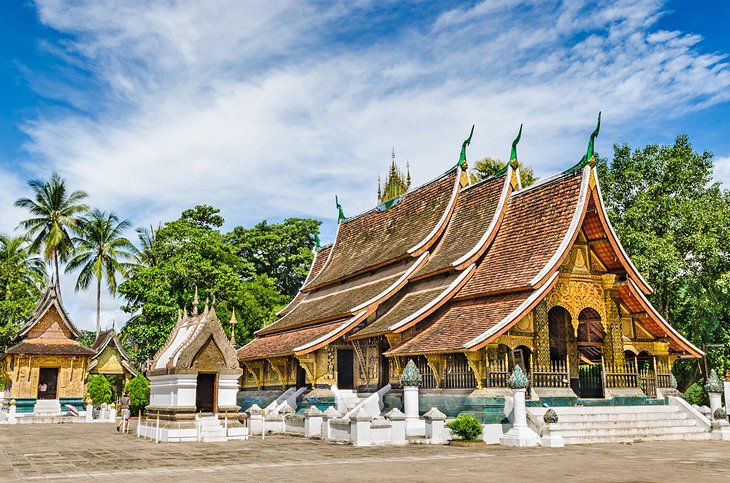
This northern city in Laos is surrounded by a number of villages that together form the UNESCO Town Of Luang Prabang World Heritage Site . Recognized for its mix of rural, French colonial, and religious architecture and heritage, the city is one of Laos' most visited and certainly most beautiful.
Luang Prabang sits at the confluence of the Mekong and Nam Khan rivers and is home to many temples-including Wat Chom Si shrine, located at the top of Mount Phou Si and overlooking the town. Alms ceremonies (where monks take to the streets to ask for food) are so common here that in the early morning, the entire town is covered in streams of orange as the monks make their way through the streets.
Just outside the city, the Bear Rescue Centre (which specializes in helping sun bears rescued from poachers) and the multi-tiered Kuang Si Falls are both worth a visit. If you're up for some trekking, head out to the Pak Ou Caves , famous for their hundreds of miniature Buddha sculptures.
Read More: Top-Rated Tourist Attractions & Things to Do in Laos
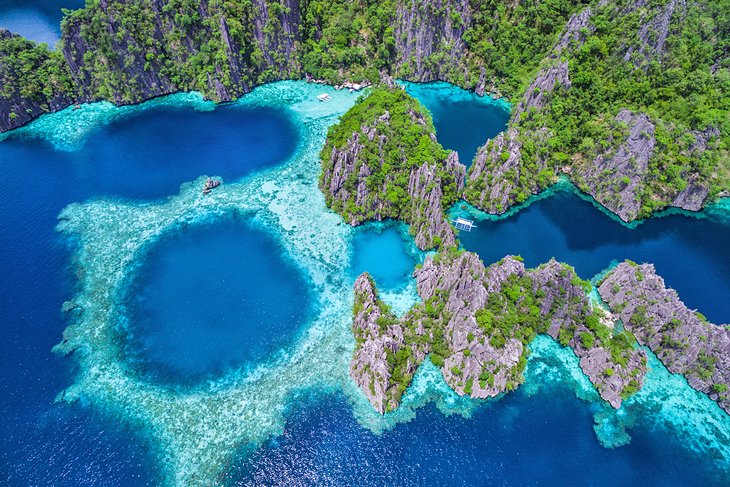
Palawan has been named one of the most beautiful islands in the world so many times, it's hard to ignore its beauty. Technically speaking, Palawan remains under-developed, which means fewer high-end hotels but also slow, sustainable growth to protect the virgin forests, green jungle mountains, and wonderful wildlife.
Palawan is surrounded by quiet turquoise waters that are ideal for snorkeling, swimming, and kayaking. Lots of smaller islands dot the ocean around Palawan, and you can spend an entire day island-hopping and still not see all the amazing beauty the area has to offer.
Miniloc Island , a rustic escape northwest of Palawan, is home to a number of lagoons and soft sandy beaches you can reach on your own or via a motorized water taxi.
For those who prefer underwater adventures, the waters around Palawan hold six shipwrecks of coral-encrusted Japanese ships sunk during WWII. Divers can slip in and out of the engine rooms, bomb holes, and portholes, swimming with fish and turtles-some of the wrecks are as deep as 42 meters.
- Read More: Best Places to Visit in the Philippines
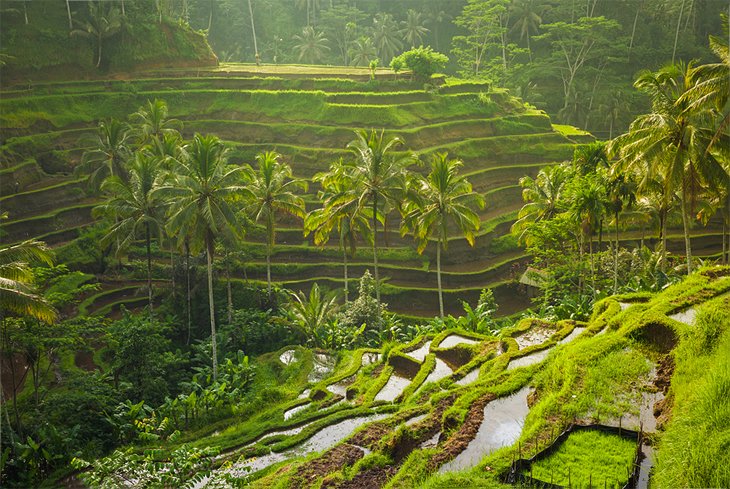
Say "Bali" and people think soft white beaches, corals, and snorkeling-and while it's true that Bali has plenty of beautiful destinations on the sand (including the Nusa Penida beach, with cliffs that resemble the head of the T-Rex), that's not all you can see here. In fact, the lush, green, terraced rice fields in the province of Ubud are just as stunning.
Bali's farmers have been setting rice paddies on terraces for centuries to deal with the hilly terrain of the area-and these areas make for stunning landscapes.
For a donation entry fee that equals pennies, visitors can walk the terraces here for hours, as the green fields extend far beyond what the eye can see. Those who arrive early in the morning will have the place almost to themselves, the soft sound of the rice fields swishing in the wind.
Visitors to Ubud can also check out the Ubud Monkey Forest ; a macaque sanctuary; the traditional royal palace Puri Saren Agung; and the gardens of Pura Taman Saraswati, a water temple famous for its lotus pond and volcanic tuff sculptures of deities.
- Read More: Top-Rated Tourist Attractions in Bali
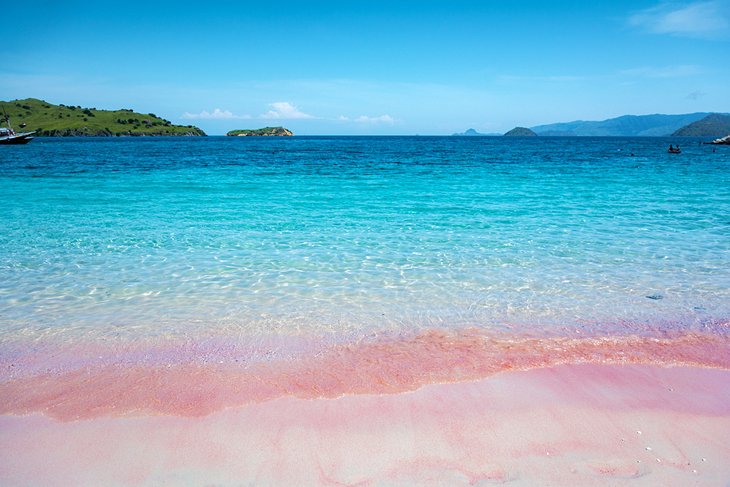
Komodo Island is more than "just one" of the over 17,000 islands that make up Indonesia. This rugged island of just under 400 square kilometers is home to the world's largest lizard , the Komodo dragon. In fact, the population of Komodo dragons here is double the population of permanent human inhabitants, making for a unique sight as you walk through the island's volcanic hills and forests.
Komodo Island is also home to a wide variety of wet ecosystems, including mangrove forests and coral reefs, both of which attract lots of travelers looking to explore, dive, or kayak around the island.
The main sightseeing attraction here, however, is Pantai Merah , one of only seven pink-sand beaches in the world. The cotton-candy sands are the result of an interesting natural phenomenon-when microorganisms, called foraminifera, that live in the coral die, their bright red shells are washed out on the beach and mix in with the white sand, creating the beautiful hue that attracts so many visitors.
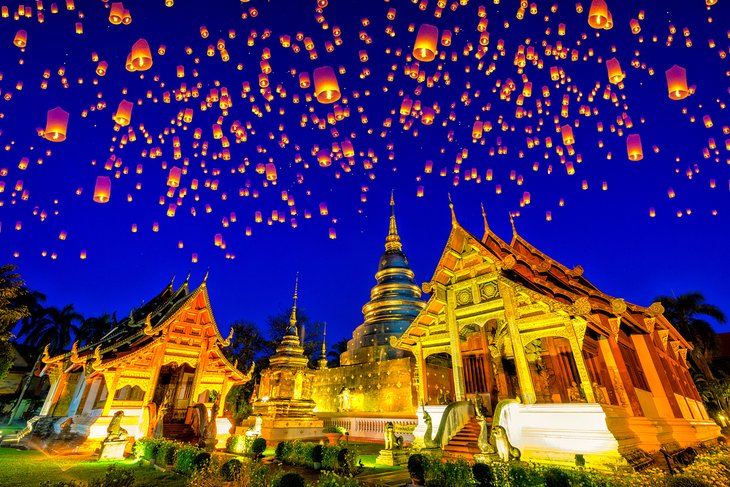
Thailand's northern city of Chiang Mai is often referred to as the cultural capital of the country. Once the seat of the former Lanna Kingdom, Chiang Mai is teeming with centuries-old temples, jungle-shrouded sanctuaries, and mountains in every direction.
A smaller and less chaotic city than Bangkok, Chiang Mai still attracts travelers from all over the world who come for the low-key lifestyle, nature, history, culture, restaurants, and budget-friendly hotels.
Backpackers often make Chiang Mai a main stop on their Thailand travels, as prices are much more attractive than down south on the beaches, and Chiang Mai is a jumping-off point from which to explore the various smaller hill communities that dot the mountains.
One of the must-see temples in Chiang Mai is Wat Phra That Doi Suthep, a golden hilltop shrine that overlooks the entire city below. One of the most sacred spots in Thailand, this temple complex is simply stunning. Visit just before sunset when the monks begin to chant. It is the most magical time to be at the temple.
From Chiang Mai, travelers often set out to explore Mae Hong Son province to the northwest, one of Thailand's most historic provinces, known for its smaller villages and ancient tribal communities.
Read More: Top-Rated Attractions & Things To Do in Chiang Mai
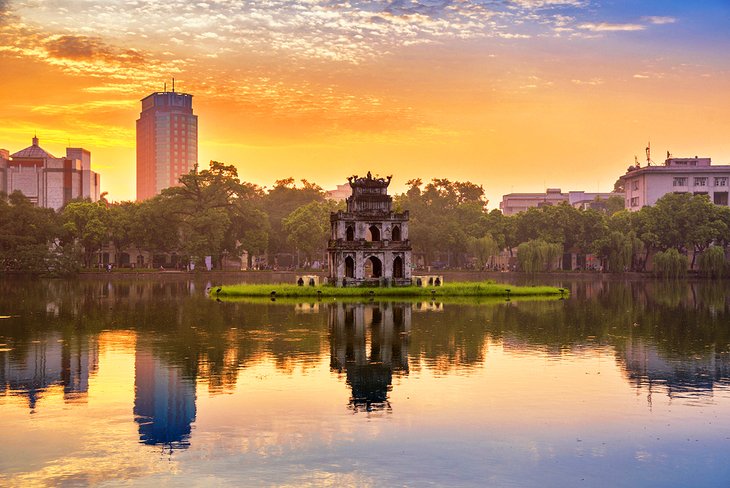
Vietnam's capital sits at an unusual precipice between historic and modern. The thriving city only opened to tourism as recently as the 1990s. Today, Hanoi is a buzzing, chaotic, energetic, beautiful amalgamation of ancient history, a war-torn past, and a modern future. It's one of the best places to visit in Vietnam to really learn about what makes the country tick.
Start in the old quarter, where you will find a heady mix of street vendors, cafés, restaurants, and more motorbikes than you can possibly count. But in between the zipping, zooming, pulsing chaos are pockets of tranquility and peace. Take Hoan Kiem Lake, for example, a 12-hectare lake in the heart of the historic city center. Around the lake are beautiful pagoda gateways, one of which is How Phong Pagoda, one of Hanoi's must-see sites .
The Temple of Literature is one of the most beautiful buildings in the city, too. It is a Confucian temple that was built as a university that dates back to the 11th century. Hanoi is also the city where visitors will find the tomb of Ho Chi Minh, the Hoa Lo Prison Museum, and the Military History Museum.
More Related Articles on PlanetWare.com
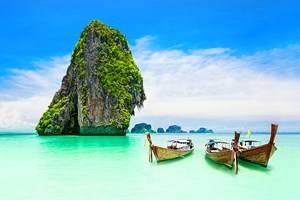
More Great Destinations in Southeast Asia: When it comes to choosing the best places to visit in SE Asia, the list is long and the decision can be tough. If you are traveling through Thailand , consider heading up to Chiang Mai or head over to the Andaman Sea to explore places like the Phi Phi Islands or Phuket , and the beautiful beaches in Krabi .

More on Thailand
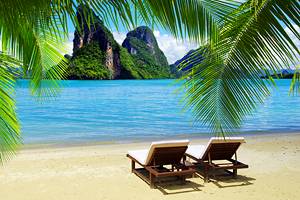
UK Edition Change
- UK Politics
- News Videos
- Paris 2024 Olympics
- Rugby Union
- Sport Videos
- John Rentoul
- Mary Dejevsky
- Andrew Grice
- Sean O’Grady
- Photography
- Theatre & Dance
- Culture Videos
- Fitness & Wellbeing
- Food & Drink
- Health & Families
- Royal Family
- Electric Vehicles
- Car Insurance Deals
- Lifestyle Videos
- UK Hotel Reviews
- News & Advice
- Simon Calder
- Australia & New Zealand
- South America
- C. America & Caribbean
- Middle East
- Politics Explained
- News Analysis
- Today’s Edition
- Home & Garden
- Broadband deals
- Fashion & Beauty
- Travel & Outdoors
- Sports & Fitness
- Sustainable Living
- Climate Videos
- Solar Panels
- Behind The Headlines
- On The Ground
- Decomplicated
- You Ask The Questions
- Binge Watch
- Travel Smart
- Watch on your TV
- Crosswords & Puzzles
- Most Commented
- Newsletters
- Ask Me Anything
- Virtual Events
- Betting Sites
- Online Casinos
- Wine Offers
Thank you for registering
Please refresh the page or navigate to another page on the site to be automatically logged in Please refresh your browser to be logged in
The Independent's journalism is supported by our readers. When you purchase through links on our site, we may earn commission.
The best countries to travel to in Southeast Asia
From indonesia to malaysia, the must-visit destinations on this corner of the continent, article bookmarked.
Find your bookmarks in your Independent Premium section, under my profile
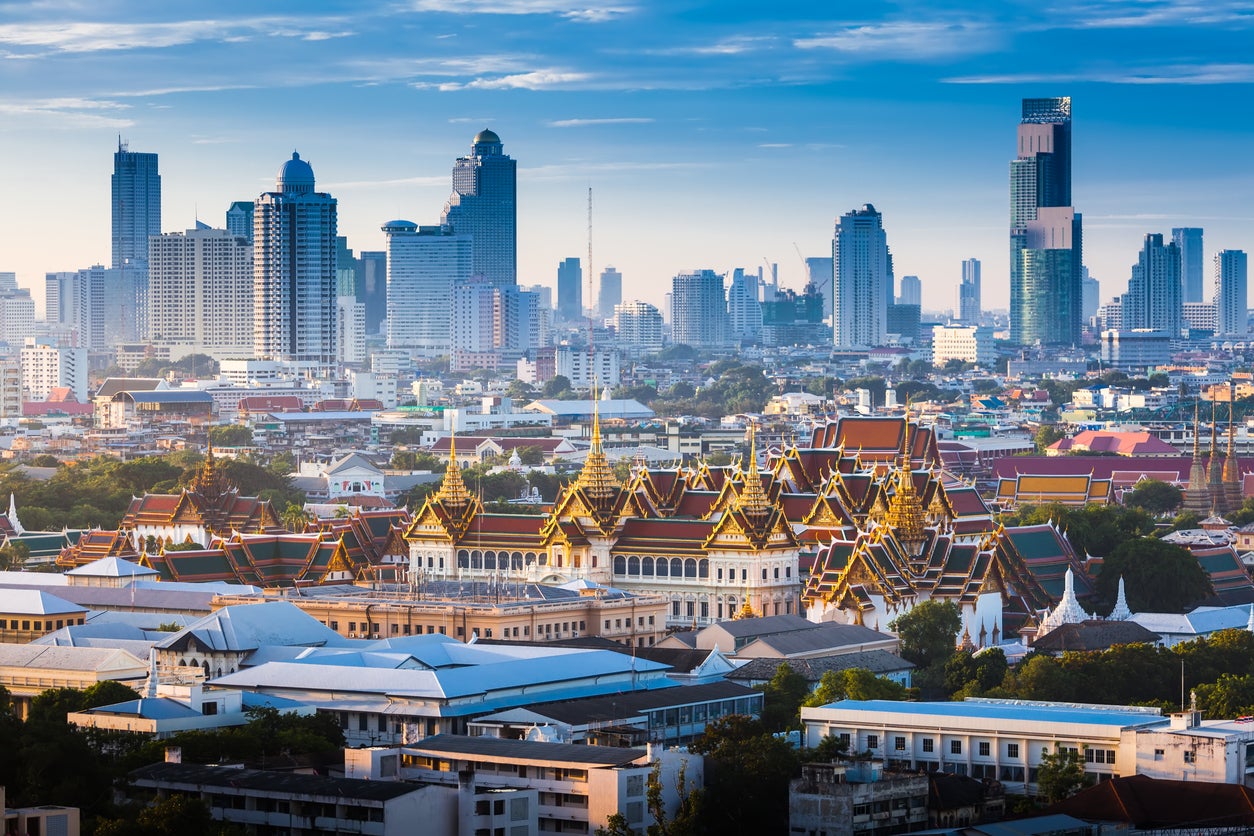
Sign up to Simon Calder’s free travel email for expert advice and money-saving discounts
Get simon calder’s travel email, thanks for signing up to the simon calder’s travel email.
Southeast Asia is a blend of fascinating traditions and cultures, with some of the most incredible temples, palaces and natural sites on the planet.
This region is home to famed attractions, from Angkor Wat to Ha Long Bay, as well as a selection of sprawling cities – including Bangkok , Kuala Lumpur and Singapore – and miles of pristine coastlines around Indonesia and the Philippines.
And though places such as Bangkok and Singapore have seen high numbers of British tourists for decades, other destinations are starting to attract more people, from lesser-known Laos to the neighbouring backpacker favourite of Cambodia .
Whether you’re looking to throw yourself into exploring a city or hop around a handful of serene tropical islands, your options are pentiful in this corner of the world.
Below are Independent Travel’s picks for the region’s best countries to visit on holiday; read on to start planning your next long-haul getaway.
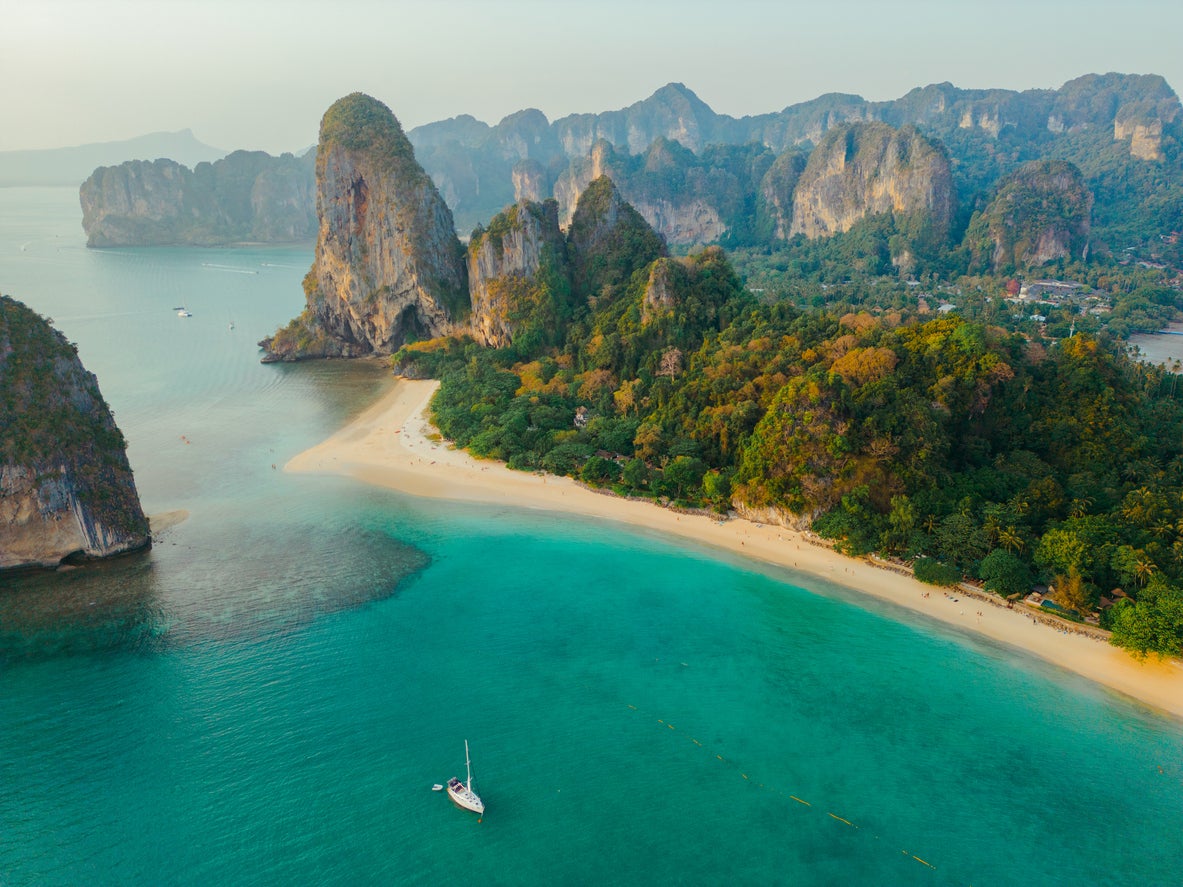
Thailand has long been a tourist favourite for Brits, whether for travelling youngsters or business people. Its capital, Bangkok (known locally as Krung Thep) was the most visited city in the world for several years in a row before Covid and is just a short journey away from the ancient city of Ayutthaya .
With dozens of famous white-sand beaches around the country (such as Railay and Ko Phi Phi ), as well as several areas of natural beauty (one of the most unique being Khao Sok National Park) and dozens of temples and palaces, Thailand offers anyone visiting the country a diverse mix of sightseeing, city experiences and relaxation – not to mention the nation’s delicious cuisine.
Best time to visit Thailand
With a rainy season falling between July and October, the best time to visit is between November and April, when temperatures are higher (with average highs in the early 30s). May is usually a quieter time to visit, but the sunshine may be interrupted by short rain periods.
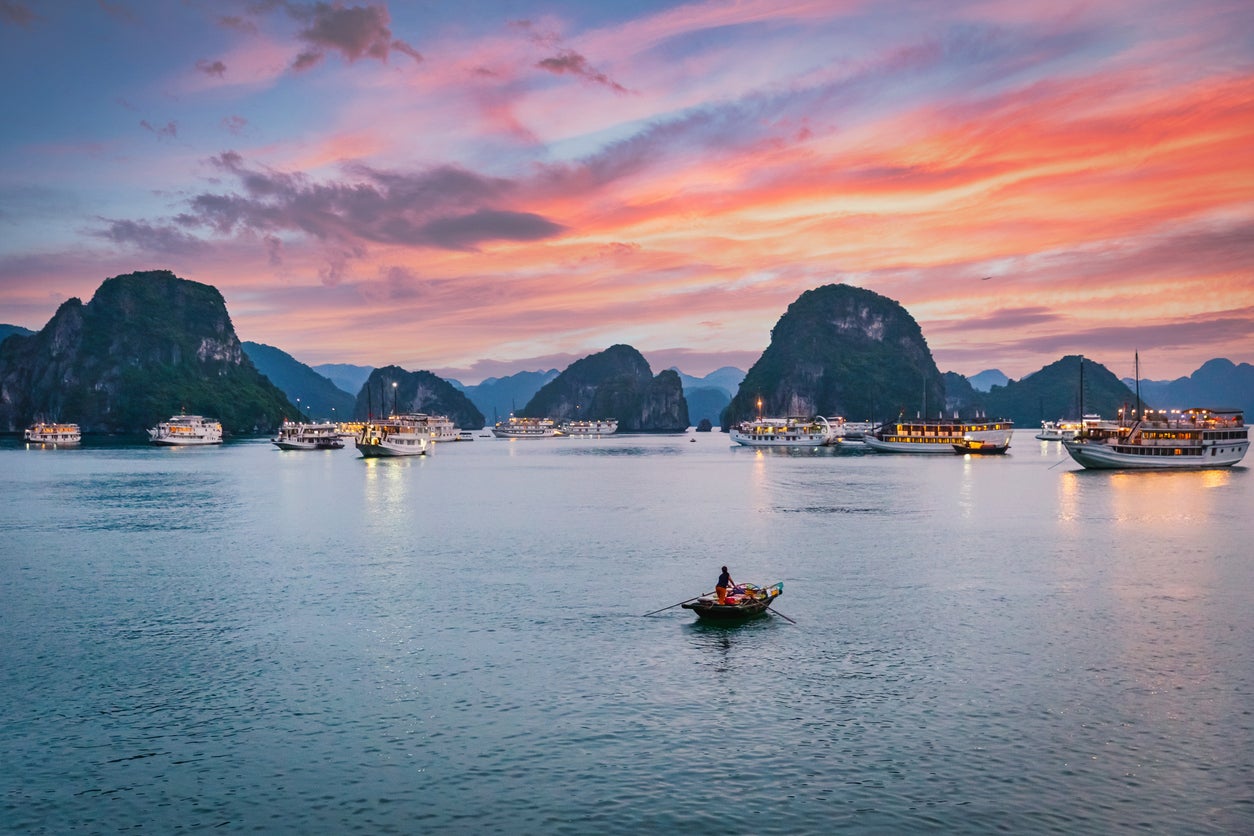
Vietnam’s various areas of natural beauty are among the most notable in the region. Ha Long Bay is the country’s most famous natural area, while the beaches of Phu Quoc and the Cham Islands offer equal beauty in different settings. Other natural attractions include the caves of Phong Nha and Hang Son Doong, the Marble Mountains and the sand dunes at Mui Ne.
As for cities, Ho Chi Minh City , Hanoi and Da Nang are the best destinations for those who want to experience Vietnamese ‘hustle and bustle’ (Da Nang also has beach areas), while Hoi An is sometimes referred to as the ‘Venice of Vietnam’ due to its canals and the well-preserved Ancient Town comprised of wooden Chinese shophouses and French colonial buildings.
Best time to visit Vietnam
April and September fall just before and after the high season in Vietnam and also offer less humidity and lower temperatures than at the peak of summer. With weather that can vary quite drastically across the country in different months, these should give the best weather across the board too.
Read more on Asia travel :
- Why you should visit Koh Samui now
- Can Cambodia become Southeast Asia’s sustainable travel capital?
- Celebrating Thailand’s Songkran festival in Chiang Mai
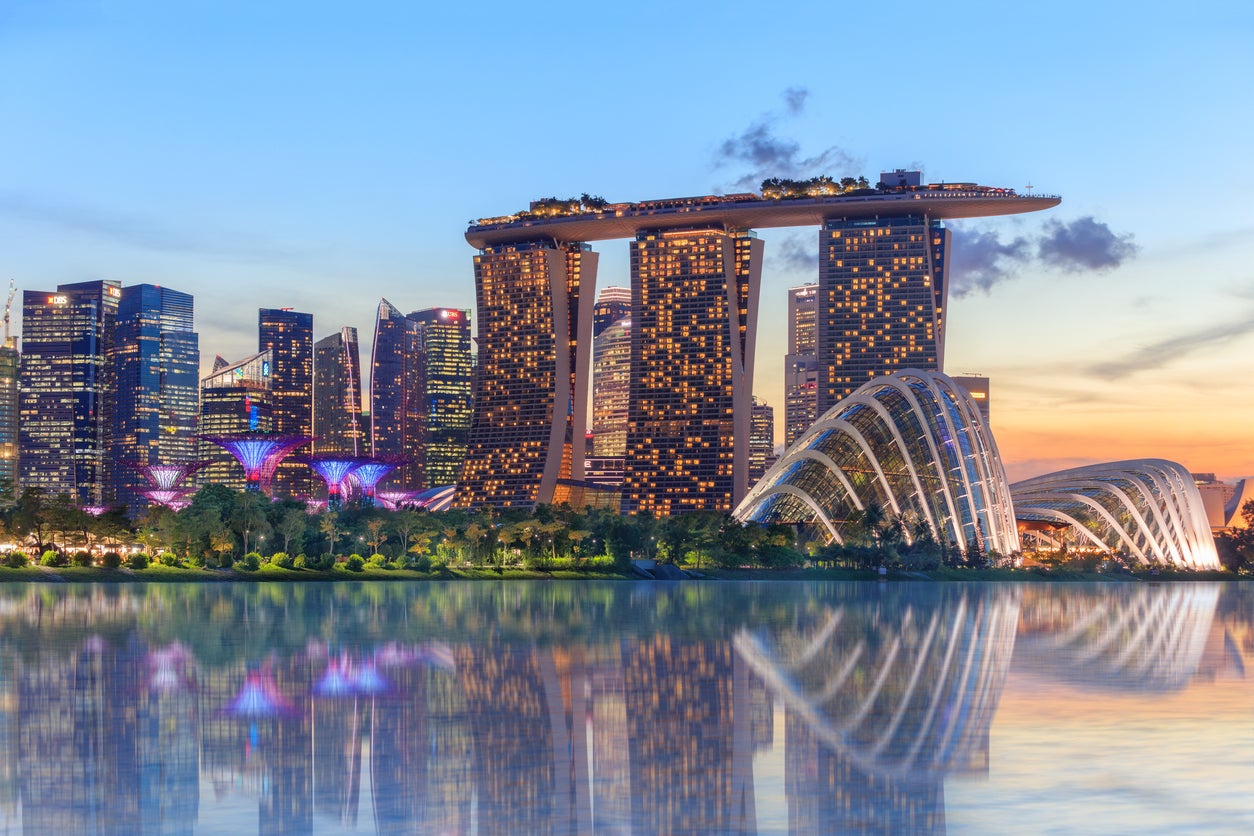
Singapore is a popular destination for British expats, with an estimated 50,000 living there. It’s a country that is almost unlike any other; its urban planning strategy has created a metropolis and enabled almost six million people to live in an area roughly half the size of London.
Despite its diminutive size, the country offers numerous attractions , from its Botanic Gardens (a Unesco world heritage site) and historical and art museums to the Gardens by the Bay , a nature park spanning 101 hectares, and a Universal Studios theme park. It also hosts a Formula 1 race, which takes place in September on the Marina Bay Street Circuit.
Best time to visit Singapore
Singapore has significant rainfall all year, although the country’s dry season falls between February and April, when humidity levels are also at their lowest. Specifically, February and September offer the lowest rainfall and humidity, with average highs of around 31C. September also falls in low season.
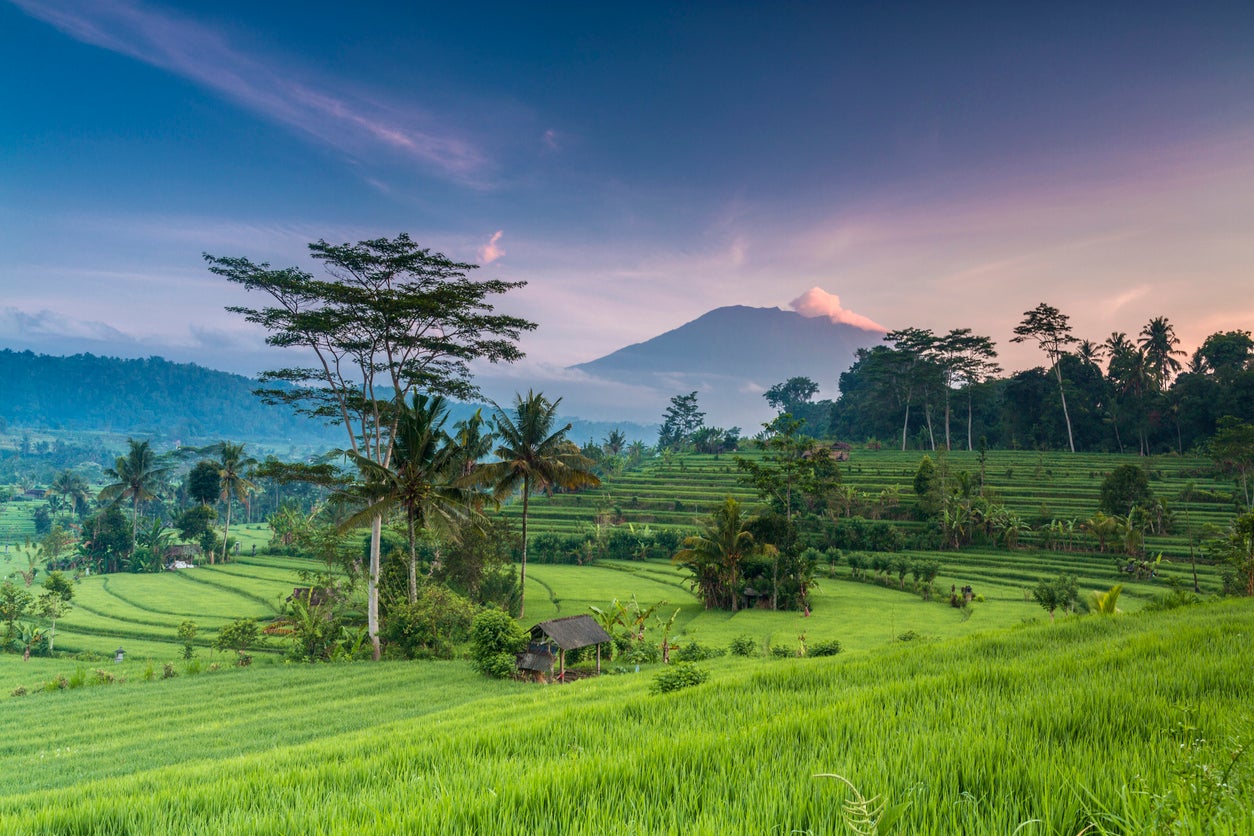
By far the largest country in Southeast Asia, Indonesia lies at the southern end of the region and consists of roughly 17,500 islands, including Sumatra and Bali. With so many islands, it’s no surprise that the archipelago contains some of the region’s most attractive areas. Bali in particular is a tourism hotspot, while many of the islands offer tropical rainforests, rugged terrain and even volcanoes (the country sits within the Pacific Ring of Fire and is prone to both eruptions and earthquakes).
Jakarta is the capital and largest city in the country and is located – along with the popular tourist town of Yogyakarta– on the island of Java. Idyllic locations include Lombok and the Raja Ampat islands; Bromo Tengger Semeru and Komodo National Parks offer unreal nature and wildlife-spotting opportunities.
Best time to visit Indonesia
The dry season usually runs from April to October, which is also when the country welcomes the most tourists. If you want to avoid crowds, May and June offer average highs of roughly 31C and over eight hours of sunshine per day.
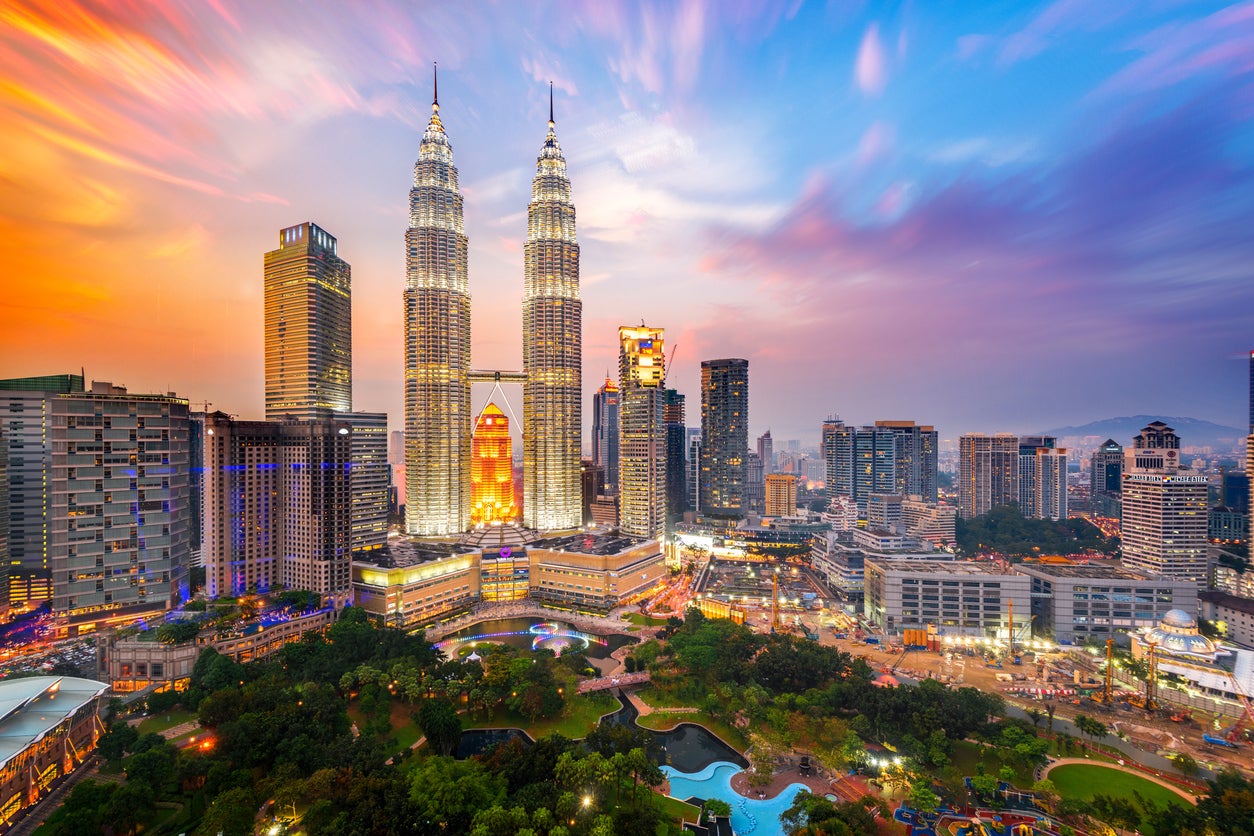
Malaysia’s culture is an eclectic mix of European, Chinese, Indian and Malay influences, while the country itself is famous for its rainforest, beaches and the capital city of Kuala Lumpur , with the iconic Petronas Twin Towers being one of the country’s most iconic symbols.
Away from the capital, many tourists decide to visit the Malaysian part of Borneo – in the north of the island – where rainforest treks, wildlife viewing and relaxing on the beach are all possible. The Perhentian Islands and Sipadan are two other popular destinations, while nature-lovers flock to the Batu Caves, Mount Kinabalu and the Cameron Highlands.
Best time to visit Malaysia
You can expect fewer crowds from March to June; these months have average temperatures of around 28C, while June is the driest month of the year (though bear in mind you can still expect showers every month).
Philippines
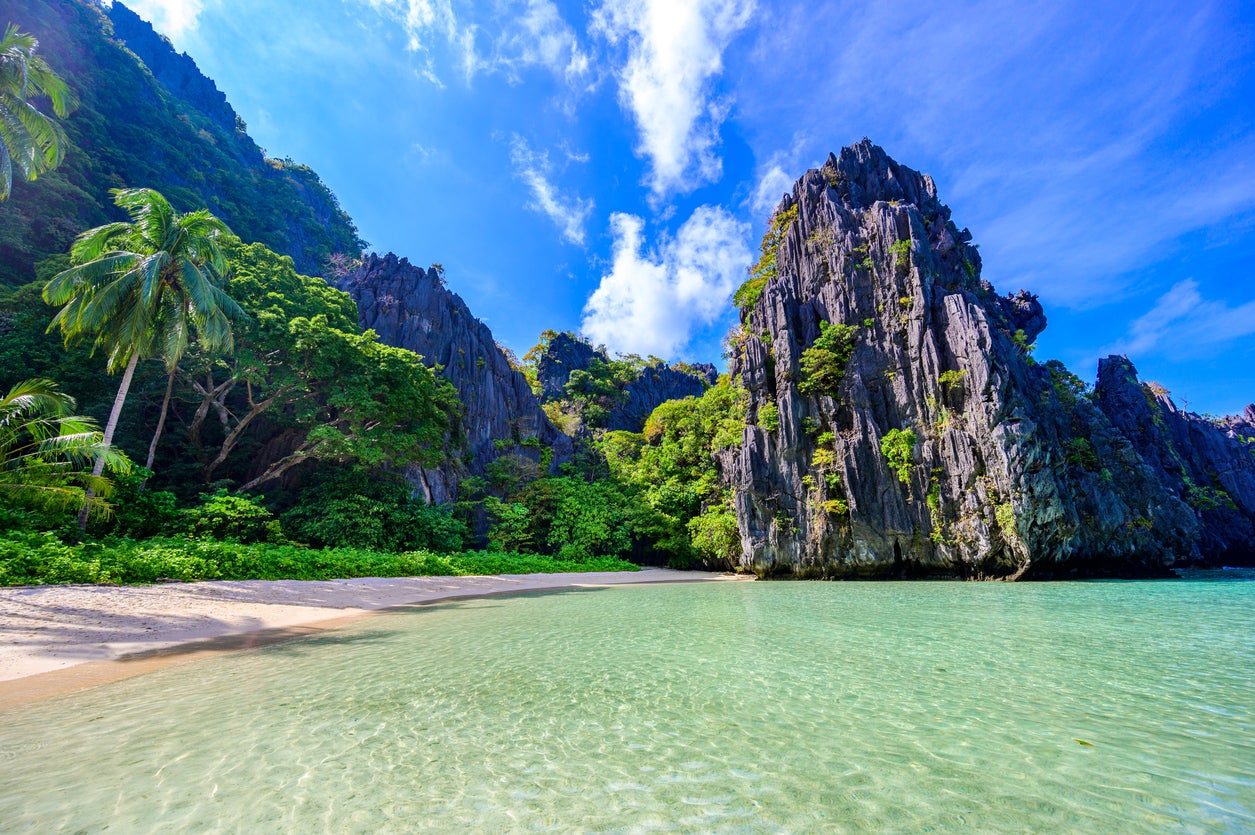
Another archipelago, the Philippines consists of more than 7,000 islands. Under Spanish rule for over 300 years, it is one of the only predominantly Roman Catholic countries in the whole continent and has been widely influenced by Western culture and traditions. For those keen to see its cities, Manila is the capital while Quezon is the largest.
Tropical white-sand beaches are plentiful on the nation’s thousands of isles, while the volcanoes of Mayon and Tail offer dramatic scenery overlooking the water. Other sites include Sigma Lagoon, Pagsanjan Falls and the Batad rice terraces.
Best time to visit the Philippines
The Philippines dry season falls right in the middle of the low season for tourism. The driest months are between January and March, where there is little rainfall and humidity falls to much more tolerable levels. Expect temperatures of up to 24C – and lows of 15C – every day.
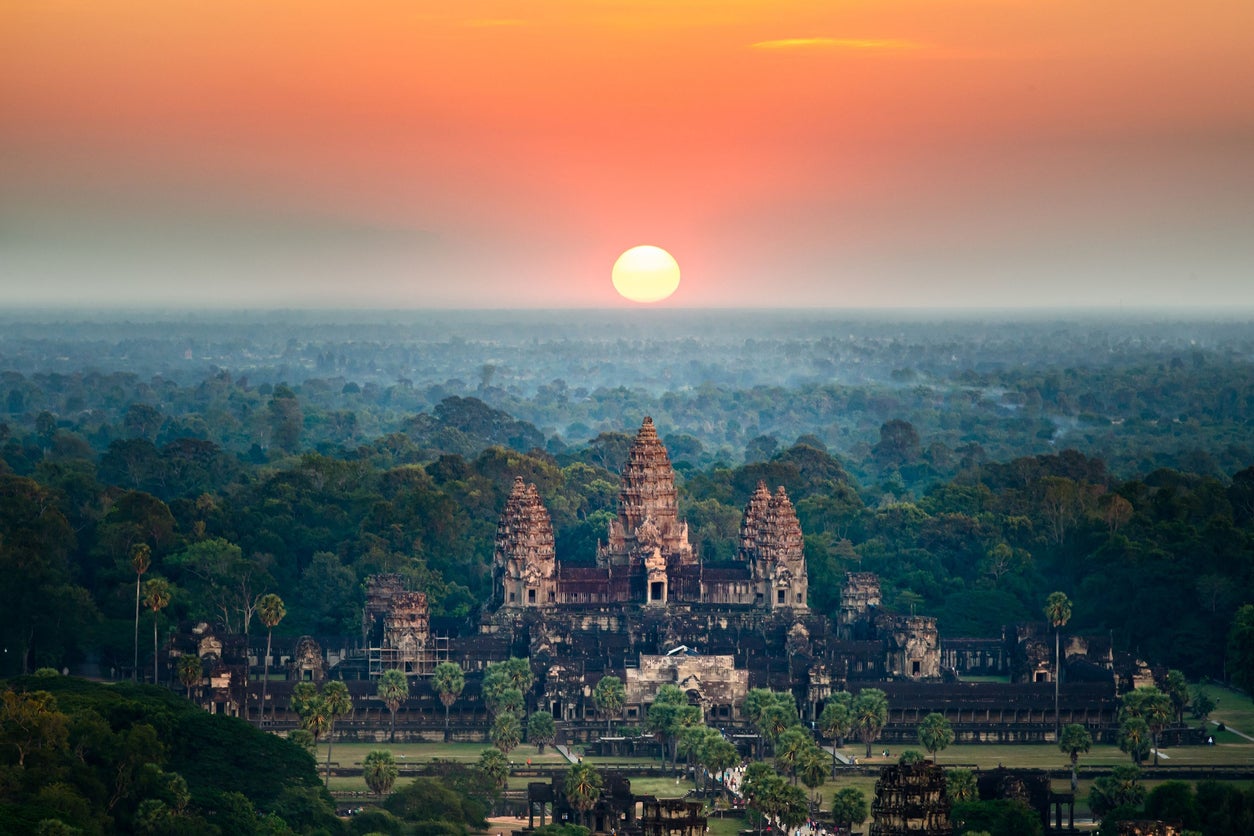
Cambodia welcomes visitors eager to learn about its complicated history and experience its mix of Asian and French culture. A largely rural country, only three of its cities are home to over 100,000 people despite the country’s 16 million-strong population. Phnom Penh is the capital and largest city, while Siem Reap is another metropolitan centre that also acts as the gate to Angkor Wat, an ancient temple which today is the largest religious structure in the world.
The country’s islands, such as Koh Rong and Koh Rong Samloem, contain pristine white beaches, sandy coves and coral reefs , and are popular spots for partying too. The Cardamom mountain range stretches over 4.4 million hectares of rainforest through the Southeast and into eastern Thailand, and is home to a vast range of wildlife, including sun bears, elephants and Siamese crocodiles. Tonle Sap lake is the largest in Southeast Asia, with its waters and floodplain home to over three million people and hundreds of different animal species.
Best time to visit Cambodia
Temperatures are at their lowest in the dry season between November and February, but you’ll still see average highs of 30C.
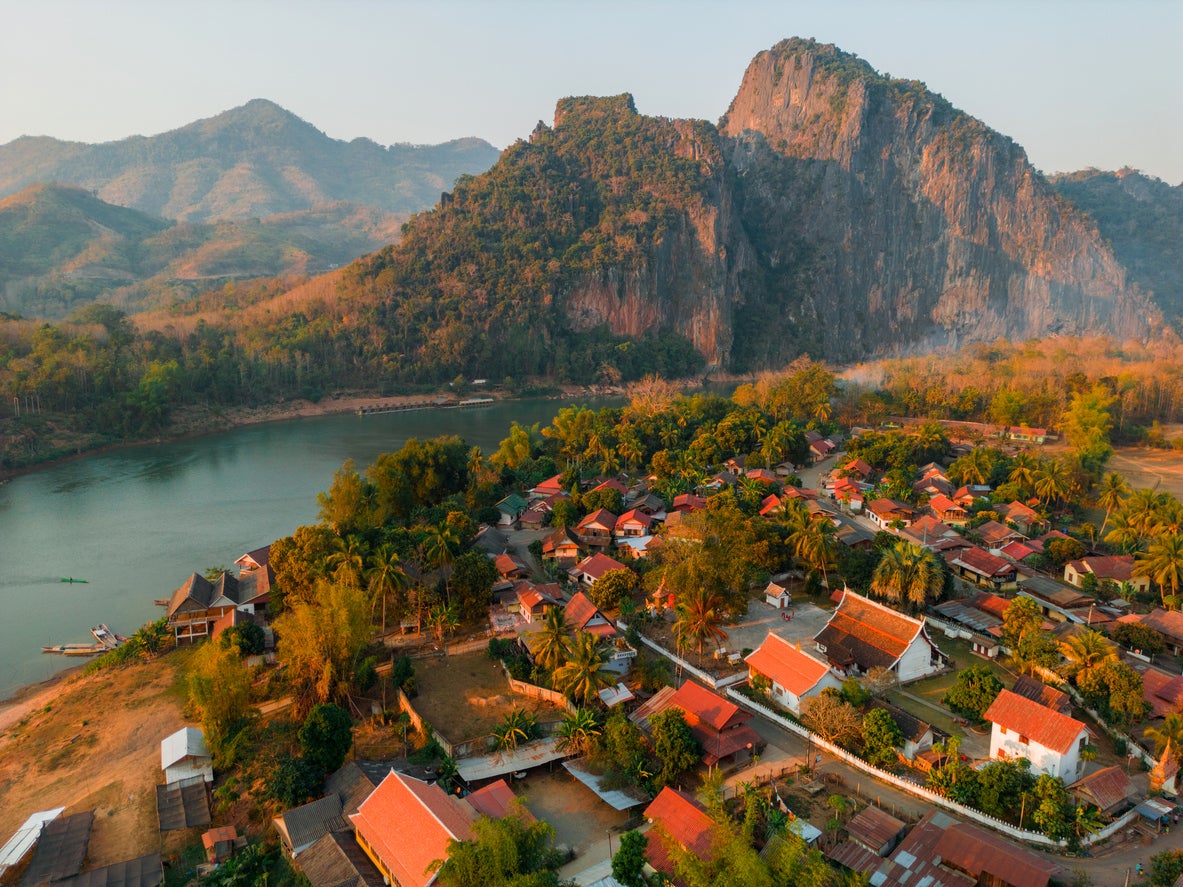
Laos is one of the continent’s smaller countries, and its shared borders – with Vietnam to the east, Thailand to the west and Cambodia to the south – give you an indication of the geography that you’ll find here. Whether you want to go through dense jungle on a cruise along the winding Mekong River, trek through the jagged karst around Vang Vieng or simply relax in the laid-back capital of Vientiane, there’s something to appeal.
Laos’ most important landmark is the Pha That Luang, a golden Buddhist stupa in Vientiane, while the capital’s other highlights include temples like Wat Si Saket and the old quarter. If you have time, visit the peaceful Song River and the town of Vang Vieng, before exploring the Unesco city of Luang Prabang and surrounding nature, including waterfalls, plunge pools and the banks of the Mekong.
Best time to visit Laos
The weather is Laos is best between October and April, when conditions are dry and not too warm. For river cruises, November through to January is best for high water levels, while August is both the wettest and most humid month.
Join our commenting forum
Join thought-provoking conversations, follow other Independent readers and see their replies
Subscribe to Independent Premium to bookmark this article
Want to bookmark your favourite articles and stories to read or reference later? Start your Independent Premium subscription today.
New to The Independent?
Or if you would prefer:
Want an ad-free experience?
Hi {{indy.fullName}}
- My Independent Premium
- Account details
- Help centre

MyFunkyTravel
Backpacking | Budget Travel | Living Abroad
When to Go to Southeast Asia – Best and Worst Times to Visit
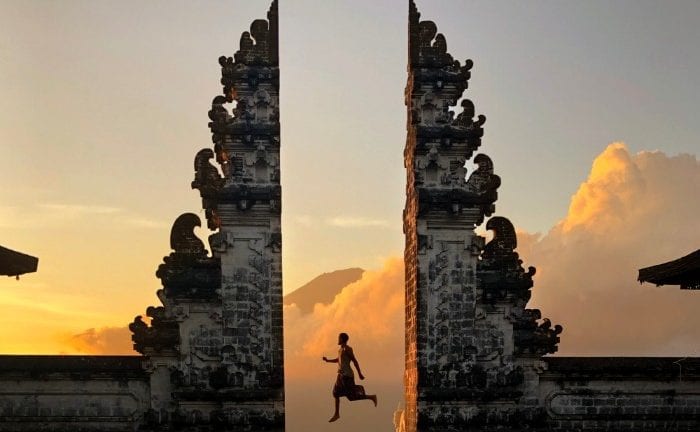
Planning a backpacking trip in any reasonably large region can be quite a headache, particularly when it comes to judging the optimum times to visit the destinations you have in mind. A region like Southeast Asia has some fairly large climatic variations as you move around. Therefore whatever time of year you pick, you’d have to be seriously lucky to avoid bad weather altogether. This article though should help you determine the best time to visit Southeast Asia, although that answer may be different depending on what your priorities are.
Table of Contents
January & february, march & april, may & june, july & august, september & october, november & december, best time to visit thailand (south), worst time to visit thailand (south), best time to visit mainland southeast asia (northern thailand, laos, cambodia, vietnam), worst time to visit mainland southeast asia (northern thailand, laos, cambodia, vietnam), best time to visit bali (& around), worst time to visit bali (& around), southeast asia’s best festivals, backpacking southeast asia – best time to go, southeast asia climate.
The year starts at the very peak of the tourist season in Southeast Asia. Mainland SE Asia and the Philippines are mostly warm and dry but temperatures aren’t as scorching as at other times in the year. The January rains fall further south with the East Coast of Malaysia (mainland) and much of Indonesia experiencing heavy rain at this time. That situation generally continues into February although the Malaysian rains have eased by the end of the month.
Mainland Southeast Asia continues to be mostly dry heading into March but the heat is becoming noticeably more intense. Indonesia’s most popular travel regions meanwhile are approaching the end of their rainy seasons. By April, much of Southeast Asia is now as hot as it is all year making travelling and sightseeing a sweaty pursuit. You can though find some respite in more Northern regions. Hanoi for example is a tolerable 28°C and experiences more of a typical Northern Hemisphere climate with clearer winter and summer patterns, not that it ever gets seriously cold.
The heat remains intense in May in most of the mainland and the Philippines making the start of the monsoon season a somewhat welcome relief in June. Most of the rainfall at this time comes in the form of a short, sharp downpour. By the end of June, Bali is pretty dry and marginally cooler than earlier in the year making it a popular time to visit.

The rainy season in most of Southeast Asia becomes more intense in July but there are exceptions. Koh Tao and Koh Phangan for example are more likely to escape the worst of the rainfall at this time. By August, afternoon showers are more the norm again although you can still expect the odd total washout when travelling around the region, which can be a slow and miserable experience on the wettest days. Indonesia is a better place to be around August and September.
Bangkok experiences its wettest month of the year in September and flooding is not uncommon in much of Thailand, Cambodia and Laos at this time while typhoons can sometimes wreak havoc in Vietnam and the Philippines. The situation continues into October but has generally eased considerably by the end of the month.
By November the rainy season is more or less over in most mainland areas and most of the region is green but dry with temperatures cooling down, particularly at night in the North or in raised areas. The rains though have returned to the East Coast of Peninsular Malaysia (spreading into Southeastern Thailand) and much of Indonesia and remain until into the New Year. December marks the start of what is considered ‘peak season’ in Southeast Asia with warm, dry conditions awaiting the masses of visitors that come over the Christmas and New Year period.
Worst & Best Time to Visit Southeast Asia – Main Destinations
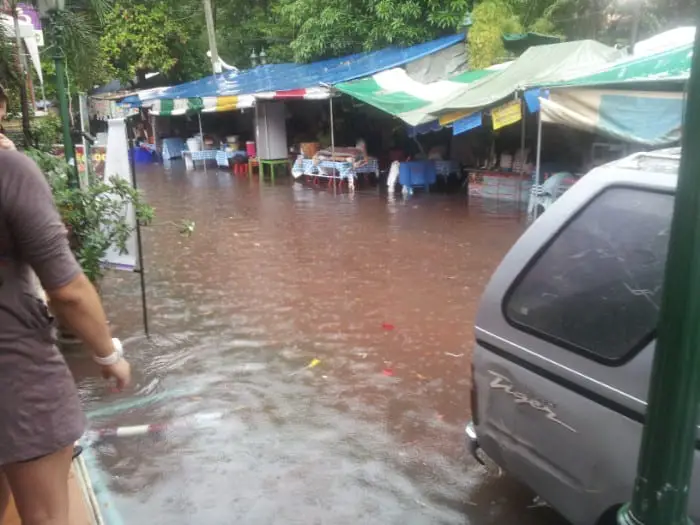
In purely weather terms, there are a few simple rules of thumb to follow in determining when to visit Southeast Asia but the situation isn’t the same across the board so you will need to decide upon your priorities.
Southern Thailand stays hot throughout the year with maximum temperatures ranging from 30 to 35°C on the Andaman side (Krabi, Phuket, Phi Phi) and a fraction cooler 29 to 33°C on the islands in the Gulf of Thailand (Koh Tao, Koh Phangan, Koh Samui). Any day of the year can provide great beach weather but you stand the best chance of avoiding the rains between December and March on the Andaman coast while February to April are the best months in the Gulf of Thailand with fewer than 10 days per month seeing any wet weather.
The Andaman coast sees plenty of rain between May and November with September and October the wettest months. The monsoon seasons picks up slightly later in the Gulf of Thailand with November perhaps the worst time to visit Koh Phangan or Koh Samui as the rains are absolutely torrential then but they have eased considerably by the end of the year.
For a typical loop of Southeast Asia, loosely speaking November to February would be a decent time to aim for with December and January offering the best conditions with the odd exception. This is because this is generally the driest part of the year and temperatures are still warm but a fraction cooler than they are at other times.
May to September is the period when you will probably experience the most rain on an extended trip across Southeast Asia. However in general, March to May are the hottest months when sightseeing and getting around can be quite uncomfortable everywhere apart from the Northernmost cities such as Hanoi.
Bali, the Gilis and the island of Lombok form the core of most backpacking routes in Indonesia . The equatorial proximity ensures it is hot throughout the year so beating the rain is the main goal. August is almost certainly the best month to visit Bali weather-wise with barely any rain but any time between July and September should guarantee sunny, dry conditions with very few exceptions.
From December to mid-March, Bali and neighbouring islands in Indonesia experience their rainy season, which peaks in January.
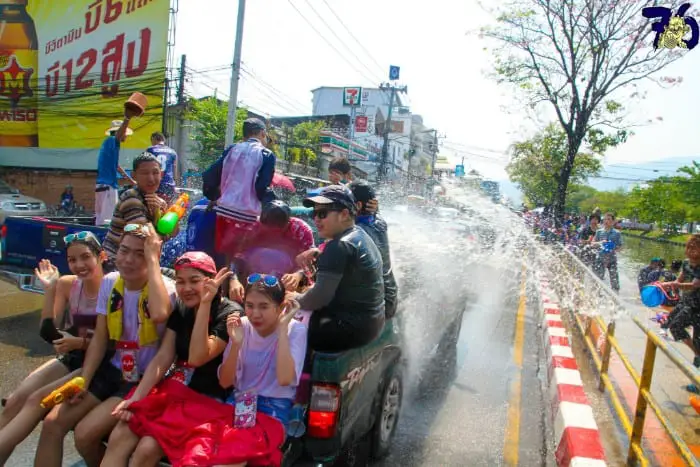
Songkran by Chindit76 , CC BY 2.0
While climatic considerations are clearly important, anyone travelling in Southeast Asia for a couple of months or more will also want to consider what festivals they could take in.
January Aguman Sanduk – Cross-dressing New year festivities in the Philippines. Dinagyang – Street parades and parties in the Philippines. Thaipusam – Hindu festival in Kuala Lumpur, Malaysia.
February Chinese New Year – Celebrated across the region, particularly in Northern Vietnam. Tet – Vietnamese New Year. A time to settle old scores and debts.
March Nyepi – A one day festival of silence in Bali. A surreal experience as literally everything shuts down and everyone shuts up.
March/April Easter – Big deal in the Philippines with people volunteering to crucify themselves in San Fernando!
April Songkran – Splishy, splashy fun. This is Thailand’s big water fight!
May/June Boun Bang Fai Rocket Festival – People in Laos make rockets and fire them into the sky with varying degrees of success.
September/October Phuket Vegetarian Festival – Gruesome methods to rid the body of evil spirits.
October/November Loy Krathong – Thousands of lanterns illuminate the sky in Chiang Mai, Thailand.
November Bon Om Tuk – A water festival in Cambodia featuring dragon boat races to celebrate the end of the rainy season.
Once a Month Full Moon Parties – The world’s biggest beach party once a month in Koh Phangan and at Christmas and New Year. Worth considering how to time this into your trip if it’s a big priority.
Like anyone else, backpackers will certainly want to consider the weather and what festivals there are when it comes to visiting Southeast Asia. However travelling away from the peak tourist season (December & January in Southern Thailand, August in Bali) should lead to a cheaper trip as accommodation is more plentiful and prices fall. With an increasing influx of Chinese visitors, Southeast Asia’s most popular travel destinations are only likely to become ever more crowded in the coming years. As a result, there’s certainly a strong argument to be made for backpacking in Southeast Asia away from the very peak periods.
If you can tolerate heat, February to May is a pretty good time to travel around Southeast Asia with mostly dry conditions and some of the best festivals such as the Chinese and Vietnamese New Years as well as Songkran. If it all gets too hot then you can always just head to the islands of Southern Thailand, which have great weather at this time of year but are just past their peak tourist seasons.
For those wanting to avoid the hottest of the weather as well as the crowds then October to November is a decent plan for a backpacking trip around mainland Southeast Asia. You will most likely encounter some torrential downpours and the odd washout still but the rain shouldn’t be so intense that it will ruin your trip.
Indonesia is much less touristy on the whole so the crowds are less of a factor there and you can mostly base your decision on the climate. That said, you will get better deals in Bali if you visit away from August when it is at its busiest.
This article was published in December 2018.
Comments/thoughts welcome below!
Featured Image of Bali , CC BY-ND 2.0
2 thoughts on “ When to Go to Southeast Asia – Best and Worst Times to Visit ”
That was so helpful. Thanks!
You’re very welcome 🙂
Leave a Reply Cancel reply
Your email address will not be published. Required fields are marked *
Save my name, email, and website in this browser for the next time I comment.

7 of the best places in Southeast Asia for solo travelers

Jul 12, 2024 • 11 min read

Stay safe, stay on budget and experience Southeast Asia solo at these welcoming destinations Jackyenjoyphotography / Getty Images
One day you're staring at waterfalls; the next, skyscrapers. As one of the smaller subregions in the world, Southeast Asia is incredible, with diverse cultures and landscapes that stand vividly distinct once you cross borders.
For the solo traveler – both aspiring and seasoned – the region has all the appealing hallmarks of a satisfying destination. Firstly, there's all that life-changing food. From the invigorating kick of tom yum soup to the alluring wok-y smokiness of char kway teow (stir-fried thick noodles), each day is already a win with delicious eats.
Then, a dense network of flights, trains and buses gives you access to the smallest of provinces, encouraging free-spirited exploration. Sometimes luxurious, other times rickety, it all adds to the checkerboard experiences that make trips memorable.
And while expenses and safety are often concerns for solo travelers, Southeast Asia proves to be welcoming in those aspects. It's not difficult to find single rooms in boutique hotels to save on costs, especially for hot spots like Thailand and Vietnam. Hostels are also plentiful and provide a great way to meet people and share activities with. Local transportation and street food remain affordable, and crime rates are low in most cities. More often than not, it is the feeling of unfamiliarity that travelers confuse as being unsafe.
Admittedly, with so many cities to choose from, narrowing down your options can be a challenge. Bearing in mind the cornerstones to successful solo travel – reliable wi-fi, ease of communication, and accessible transportation – here are the best places to travel solo in Southeast Asia.

1. Singapore
Best for first-time solo travelers
With skyscrapers that kiss the clouds and gardens that seem AI generated, the island state of Singapore is commonly relegated as a layover "bucket list" destination in Southeast Asia, famous for its magnificent attractions but also eye-watering price tag .
Ignore the latter. One can circumvent this deliciously by dining at its hawker centers , where the UNESCO-approved heritage comes in the form of savory Hainanese chicken rice, peppery Bak Kut Teh (pork spare rib soup) and other local delights. Travel anywhere around the island on the Mass Rapid Transit (MRT), and expect to pay S$2 for an average trip. And while it's easy to dismiss the country as just a place to eat and shop, the country's trading hub history means cultural remnants are sprinkled everywhere, including in some of its busiest, modern zones.
Thian Hock Keng , the oldest Chinese temple, sits right at the fringes of the business district, an everyday sight for the suits passing by. Just two streets from the golden dome of the Sultan Mosque , is the gothic Parkview Square tower and chart-topping lobby bar, Atlas . The best part – these places are free to visit. This stark contrast combined with easy accessibility is what makes Singapore compelling for solo travelers who want to ease themselves into the region, supported by outstanding infrastructure and safety, English-speaking locals and densely-packed easy-to-reach attractions.

2. Penang, Malaysia
Best for vibrant street food and creative local culture
Penang itself is divided into two parts – that of the mainland and Penang Island. The latter is where the UNESCO-listed streets of George Town reside, a treasure trove of decorated pre-war shophouses and clanhouses intermixed with cute cafes and a street art scene that adds whimsy to the sleepy city. And because of its humble appeal, operators accept smaller numbers, which means individual travelers will find it easier to be confirmed for activities such as cooking classes and walking tours.
The relaxed atmosphere is only happily disrupted by one thing – the street vendors. The meal-centric hawkers often operate for short hours only, with some showing up for breakfast, and others for dinner. These seasoned masters will quickly whip up a bowl of wonton (dumpling) noodles or Penang Laksa (spicy noodles) for hungry diners. Popular venues include New Lane, Kimberly St and Chulia St. Solo diners can enjoy budget meals as low as RM10, and the makeshift seatings encourage tables to be shared, so it's a great opportunity for some chat with fellow diners.
Other than its melting pot of Malay, Chinese and Indian influences, the Peranakan culture is also evident in the city, with a museum and hotels such as Cheong Fatt Sze and the Edison George Town capitalizing on its intricate designs. While there are no single rooms, with rooms starting from under RM600, those into affordable luxury can consider these a heritage treat. Just a few steps away, the new the George Penang offers the same but in a more colonial setting.This, when stacked next to the random murals and weekend maker markets, such as Hin Bus Depot , give Penang an artsy vibe and endearing appeal. For the solo visitor who loves serendipitous street discoveries, the city rewards with its pretty (and delicious) surprises.

3. Danang, Vietnam
Best for an idyllic coastal escape and gateway to varied experiences
Danang 's graceful arc of a coastline is as stunning as they come, punctuated at the end by the majestic Lady Buddha statue on the Son Tra peninsula. The hotels by the bay recognize this, often maximizing room views with large windows, balconies and infinity pools. Gazing out to the endless blue is therapy on its own. Solo travelers on a budget needn't worry about missing out as rooms here average 1,000,000d.
As the gateway to the more bucolic central Vietnam , the city is far less hectic than the two other "capitals". For those unused to the country's hectic moped culture, this can be a lifesaver, as the traffic here is easier for pedestrians to navigate. And for moving about, the Grab app offers motorbike and car options, with fares as low as 20,000d.
The beaches are free of touts and particularly good for hassle-free solo strolls. It's also a great stretch for people watching, with the odd chance to witness live catches by local fishers. Solo travelers who love to connect with locals will find them especially amenable to sharing their stories here – and sometimes even their bounty. Otherwise, the southern stretch invites one to linger with its food trucks and photogenic spots.
It's easy to take a break with the amount of cafes in town, serving up excellent Vietnamese coffee and fruit juices. And when one needs to connect home or check on some emails, they act as ideal hot spots for the roving traveler or digital nomad.
But when one wants to switch it up, there's the quaint town of Hoi An with its old-style architecture an hour away south, and the ancient imperial fortress complex of Hue less than two hours to the north. You can even opt in for some cooler weather (and some spectacular cable car rides) by heading up Bana Hills, a French colonial resort that's been integrated into a theme park.

4. Siem Reap, Cambodia
Best for intimate small city vibes and ethical tourism
The fame of Angkor Wat , and other temples like Ta Prohm and Banteay Srei , can sometimes eclipse what Siem Reap is all about. Past the world-famous sites, the humble city, in its small craft markets and leisurely street-side dining, offers an authentic look at its people who have lived in the heritage site's shadow.
When shopkeepers or tuk-tuk drivers hawk their services in Cambodia , it is often a gentle invite that can be easily declined. Often clustered in the town's Old Market, this means the solo traveler can comfortably pick and choose any of these services and be spontaneous in their planning. And when you wish to connect with other travelers, Pub St's many eateries and bars are a great place to hang out, with tourists gathering after a day of temple-hopping.
If conscientious travel is a priority, then Siem Reap offers plenty of opportunities to give back to the community. Phare Circus funds education for underprivileged children and Haven restaurant provides free training for young adults to boost their job prospects, while Lotus Farm offers employment and fair wages to local women and farmers.

5. Bangkok, Thailand
Best for inclusivity
If diversity is what you crave, then Bangkok is the place to visit – and the capital doesn't hold back in the slightest. As you stroll down the streets, you'll be met with constant human and vehicle traffic, waylaid by vendors selling anything from fresh-cut fruits to cheeky slogan tees. Behind them, gleaming malls tempt you in for some air-conditioned relief.
And yet, this doesn't feel chaotic at the least, which is perhaps the magic of Bangkok. In its kaleidoscope of people and attractions, it balances itself out. The riotous Khao San Rd is met with tranquil temples like Wat Pho and Wat Arun. The frayed nerves from catching a ride on a moped is easily soothed by a massage. And after being soaked with perspiration from a steaming tom yam hotpot, an elegant rooftop bar and its fancy cocktails welcome you just the same. With its evocative platter of offerings, spontaneous solo travelers who hate to plan can still easily fill their itinerary in this city.
The popular destination has seen intense competition from operators, so expect to find rooms at a steal and without single supplements. Hostels are sprinkled all about town, and although many are concentrated around Khao San Rd, the noise and crowds can be overwhelming. Instead, head to Chinatown or Silom for more relaxed vibes, with options like Silom Space Hostel , Kinnon Hostel , and Prince Theatre Heritage Stay offering themed experiences at incredible value.
Having just legalized same-sex marriage, the city continues to be the region's leading champion in LGBTIQ+ rights. The secret, perhaps, lies with the country's warm people, easily felt through their easy smiles and open spirit. This tolerant and inclusive atmosphere makes Bangkok an undeniably electric destination for all travelers, regardless of their background or identity, whether they're traveling alone or as part of a group.

6. Hanoi, Vietnam
Best for its unpretentious vibes
Despite decades of attention from tourists, Hanoi is one of the few cities in the region that has remained relatively unchanged by its popularity. Sure, certain cafes may have gotten a fresh coat of paint, and hotels took the chance from the pandemic to renovate, but by and large, most of the businesses remain the same, speaking to the resilience of the Vietnamese and their slow but steady ways.
More importantly, the city isn't trying to be something it's not. Locals go about their daily lives with a genuine, unpretentious spirit that keeps Hanoi feeling refreshingly authentic; which to casual observers might seem aloof, but is largely not personal. It is this unvarnished appeal that has won it fans, including from the late Anthony Bourdain .
Once you've mastered the traffic crossings (pro-tip: when the traffic thins, walk at an even pace and the vehicles will avoid you), the city opens up for easy exploration. Wander through the enchanting Old Quarter, a colorful maze of narrow streets lined with shops and street food stalls. Take a break at one of the local cafes and order a strong coffee with condensed milk, best enjoyed on a short stool as you watch the world go by. Or hover around Hoan Kiem Lake , especially on the weekends, when the roads close and residents spill into the streets, letting visitors witness buskers, dancing troops and impromptu skipping groups as a slice of local recreation. Feel free join in anytime – Vietnamese people are a sociable lot, and solo travelers will find themselves making transient connections easily. Don't be surprised if you're approached by local youths when walking about – they often just wish to practice their English skills and are more than happy to make recommendations.
Hanoi also serves as a springboard for neighboring attractions in northern Vietnam. Sail between the dramatic limestone pillars of Halong Bay , or opt for the less crowded beauty of Lan Ha Bay , an emerging sister site. Ninh Binh 's picturesque mountains and hidden caves are similar to Halong's but on land. And for those who love to trek, Sapa 's cooler climate, breathtaking rice terraces, and local ethnic groups like the Hmong, will certainly add to a fuller Vietnam experience.

7. Bali, Indonesia
Best for wellness, beaches and digital nomads
Depending who you speak to, Bali 's transformation from small spiritual island to global mecca for alternative therapies is as much a curse as it is a gift. After Eat, Pray, Love , both the book and 2010-movie, highlighted the destination, its popularity has seen rapid developments from an international set, adding beach clubs and pool villas stretching northwards from Kuta Beach .
But despite what some might think, the "Island of the Gods" remains a paradise for nature lovers and spiritual seekers. The opportunity to trek through lush rice paddies in Ubud , relax on pristine beaches in South Kuta, or climb Mount Batur to witness a breathtaking sunrise are still entrancing, and Bali's rich Hindu culture is very much present in its ornate temples and daily shopfront offerings.
For solo travelers seeking like-minded individuals, meet them easily through the many activities, including ubiquitous wellness retreats and yoga classes. Furthermore, the demographic has also evolved into one welcoming of digital nomads – often clustered in the Canggu area – so those wishing to network with others can easily form connections and friendships at a local business, while sipping on cocktails or tucking into a vegan poke bowl.
Explore related stories

Sep 10, 2019 • 7 min read
In all of Sofia Levin's travels, she often feels safest in Asia. Here are six destinations in Asia that Sofia recommends for solo female travellers, as well as…
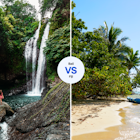
Jul 10, 2024 • 8 min read

Jul 10, 2024 • 6 min read

Jun 21, 2024 • 6 min read
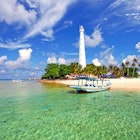
May 20, 2024 • 6 min read

May 16, 2024 • 5 min read

Apr 22, 2024 • 6 min read

Apr 21, 2024 • 6 min read
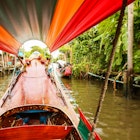
Apr 18, 2024 • 12 min read

Mar 20, 2024 • 8 min read

The 6 Best Places to Visit in Southeast Asia in August 2024
In August, the average temperature of Southeast Asia slightly drops, to about 29°C (84°F).
The rainy season dominates in most Southeast Asian countries, such as Thailand, Cambodia, and Vietnam. But Indonesia, Singapore, and Malaysia are exceptions, where August stands out as one of the driest months and you could expect promising sunshine and great opportunities for outdoor fun.
If you'd like to travel with fewer interruptions from rain, you're advised to visit the following six countries: Indonesia, Singapore, Vietnam, Malaysia, Myanmar, and Thailand.
Discover real reviews of Highlights Travel Family 's best-rated service across trusted platforms.
1. Indonesia: Sunny Tropical Beach Paradise
- Recommended stay: 1 to 2 weeks
August is one of the best times to visit Indonesia : August has brightest skies, pleasant temperatures of 23–30°C (73–86°F), and calm seas.
August's ideal weather offers you a well-rounded range of experiences. A classic Indonesia itinerary typically covers Bali, the Gili Islands, Java, and Jakarta. Whether you want to spend some quality family time together or celebrate your big events, there are plenty of options:
- Witness postcard-perfect sunsets and indulge in the laid-back vibe.
- Dive into water activities and island-hopping tours in Bali and the Gili Islands.
- Soak up its characteristic culture from the ancient temples, an authentic royal high tea experience, and a family visit.
- Trek up volcanic mountains and venture into jungle forests in Bali or Java.
- Create your own souvenirs for your family and friends during a hands-on experience.
Insider Tips: With the great weather come higher prices and a huge demand. You're advised to make your booking at least 3 months in advance.
>>>Further reading:
- how to plan a family trip to Southeast Asia
- planning a couple's trip to Southeast Asia
2. Malaysia: Cultural Crossroads and Water Fun
- Recommended stay: 1 to 3 weeks
Unlike the uniformly dry weather in July, August brings light rainfall to central and western Malaysia, though dry conditions continue in eastern Malaysia.
Therefore, if you travel to Malaysia in August, you're advised to visit eastern Malaysia on Borneo for mostly dry weather , where you could enjoy sandy beaches and water activities.
If you don't mind some rain, explore the cultural hubs of Kuala Lumpur and Malacca.
Malaysia unfolds a myriad of experiences:
- Explore the cultural diversity of Kuala Lumpur and Malacca.
- Dive into the wild in Borneo: snorkeling among marine life, feeding orangutans, and spotting whale sharks.
- Indulge in the stunning beaches or observe the turtles at Turtle Sanctuary Beach on the Perhentian Islands.
- Enjoy free days in the water bungalows on Sipadan Island.
- Experience local culture during the local Hungry Ghost Festival.
read more about how to plan your first Southeast Asia trip >>>
3. Singapore: Modern Marvels and a Window into Asian Culture
- Recommended stay: 4 to 5 days
Singapore, doesn't have distinct dry and wet seasons like some other equatorial regions. It experiences moderate rainfall all year round, including in August, with higher rainfall from November to January. At the tail end of the busy summer vacation in Southeast Asia, you could expect fewer crowds later in August.
Singapore beckons travelers to enjoy the following experiences in August:
- Go for outdoor adventures, such as light hiking and biking.
- Explore the iconic Gardens by the Bay, featuring the stunning Cloud Forest and Flower Dome.
- Uncover the secrets of the vibrant cultural diversity in Chinatown, Little India, and Kampong Glam.
- Soak up the atmosphere at the indoor attractions at Sentosa, such as S.E.A. Aquarium and Universal Studios Singapore.
- Say goodnight to the wild animals during the world's first Night Safari.
Unlock expert tips for planning your Singapore and Bali or Singapore and Thailand trips>>>
4. Vietnam: Partly Sunny and Great for Rustic Adventures
Similar to July, temperatures are still quite hot. Rainfall peaks in the north and south, while central areas experience only moderate precipitation.
Weather-wise, central Vietnam (Hoi An, Da Nang, and Nha Trang) is the best place to visit in August.
Compared to the high travel season, traveling in August is much cheaper in the north and south . However, storms or typhoons might affect a cruise in Halong Bay, so it is best to prepare a plan B.
Vietnam invites you to embrace these experiences:
- Gain an insight into Vietnam's ancient royal cities in Hue and Hoi An.
- Unwind on the sun-kissed beaches of Da Nang and Nha Trang.
- Cycle around the rice paddies and say "hi" to working locals in rustic Mai Chau or Ninh Binh.
- Navigate the Mekong River on a week-long cruise from Vietnam to Cambodia.
- If time allows, immerse yourself in the enchanting Full Moon Lantern Festival in Hoi An.
Further reading: how to plan your first Vietnam trip >>>
5. Thailand: Top Choice for Budget-Conscious Travelers
- Recommended stay: 10 days to 2 weeks
In August, Thailand experiences similarly hot summer temperatures, with an average of around 29°C (84°F). The northern mountains and the wetter southwestern coast have slightly cooler temperatures, averaging 27°C (81°F).
In the middle of the rainy season, intense downpours are expected. But you could expect drier weather in central Thailand (Bangkok and Hua Hin) and east coast islands (Koh Samui, Koh Pha Ngan, and Koh Tao) . With more tranquil vibes and favorable prices (about 40% discount), traveling to these places is still worthwhile.
Thailand invites you to explore the following delights:
- Discover iconic temples, floating markets, and railway markets in the bustling metropolis of Bangkok.
- Relax on the photogenic beaches and delve into the water activities in Koh Samui.
- Take advantage of the best scuba diving opportunities in Koh Tao.
- Cool down in the royal summer resort in Hua Hin.
- Escape the rain by taking part in interesting indoor activities, such as a cooking class, a massage, a Muay Thai show, and a ladyboy show.
You can find more guidance on planning a trip to Thailand or planning a family trip to Thailand . Or you can check the sample itineraries of Thailand for 10 days , 12 days , 14 days and 21 days >>>
6. Myanmar: Ancient Splendors Amid Rain-Kissed Landscapes
August brings abundant rainfall to Myanmar and its weather is still hot, with an average temperature of 29°C (84°F).
Bagan and Mandalay are great places to visit during August because they receive significantly less rainfall than Yangon, Inle Lake, and other tourist attractions.
Myanmar unfolds its treasures for exploration and these are most recommendable for August:
- Visit Mandalay Palace, explore U Bein Bridge, and take a boat ride on the Irrawaddy River in Mandalay.
- Watch a sunrise over ancient temples in Bagan.
- Visit Shwedagon Pagoda in Yangon.
- Be like a Burmese local and experience local village life for a day.
Unveil the handpicked itineraries for 10 days , 12 days , 2 weeks or 3 weeks in Southeast Asia>>>
Read more about the Top 10 Kid-Friendly Destinations or the best activities for families in Southeast Asia >>>
Monthly Weather and Travel Information for Southeast Asia
Learn about the weather in Southeast Asia for 12 months and find out the best places to visit each month.
Get Inspired with Some Popular Itineraries
At Asia Highlights, we create your kind of journey — your dates, your destinations, at your pace. You can have any trip tailor made for your travel.
More Travel Ideas and Inspiration
Sign up to our newsletter.
Be the first to receive exciting updates, exclusive promotions, and valuable travel tips from our team of experts.
Why Asia Highlights
Where can we take you today.
- Middle East
- African Safari
- Travel Agents
- Loyalty Program
- Privacy Policy
Address: Building 6, Chuangyi Business Park, 70 Qilidian Road, Guilin, Guangxi, 541004, China

20 places to explore in Southeast Asia
Posted: July 20, 2024 | Last updated: July 20, 2024

From lush national parks and incredible archaeological sites to vibrant cities and intriguing temples, Southeast Asia is home to numerous natural and cultural treasures to add to your bucket list. Discover 20 fascinating places to explore on your next trip to this sublime part of the world.
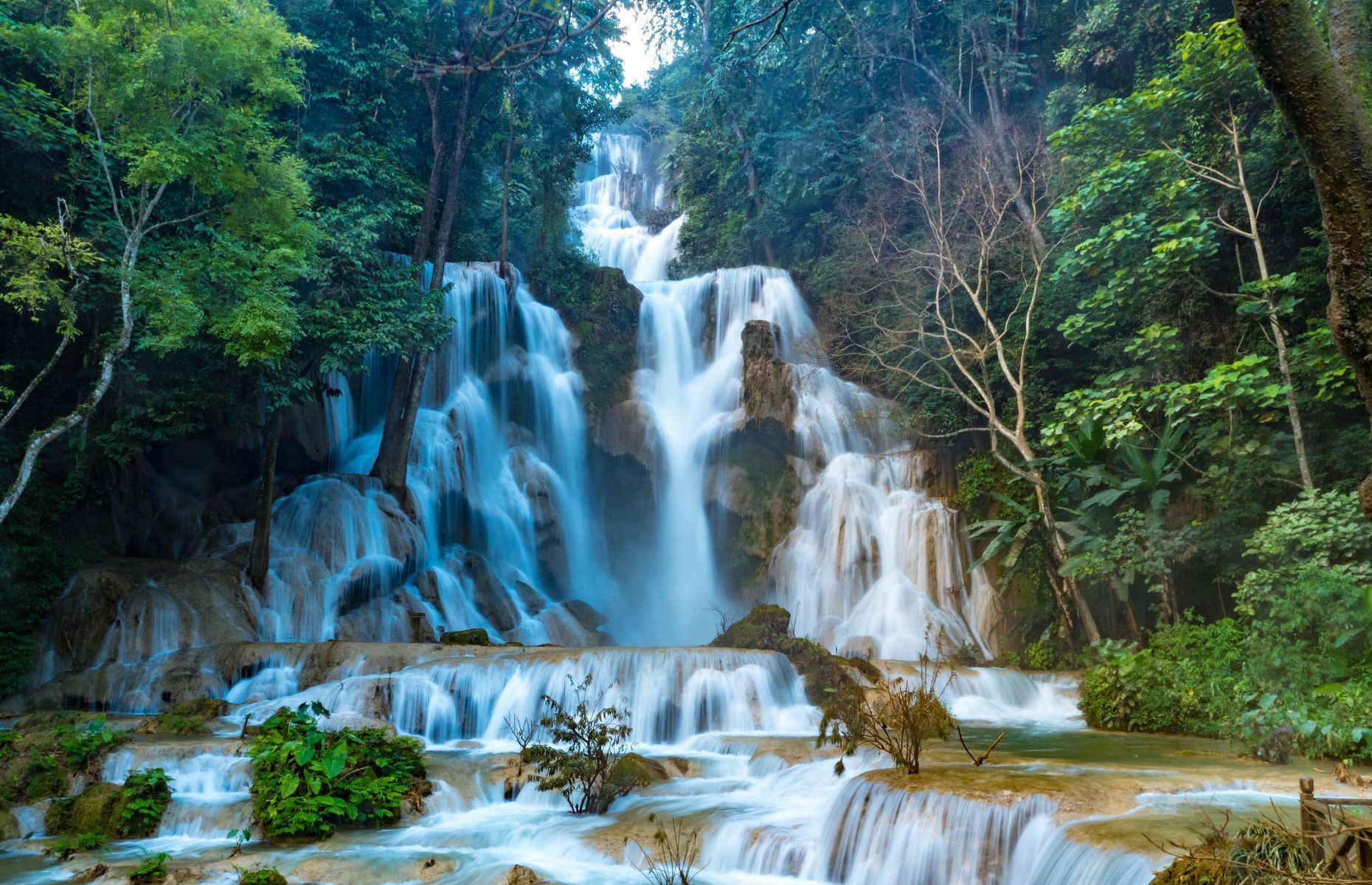
Kuang Si, Laos
Near Luang Prabang in Laos, you’ll find the dazzling Kuang Si waterfalls. Truly a natural wonder, their crystal-clear waters tumble into a series of turquoise basins, creating a breathtaking spectacle. Cool off on torrid days with a refreshing dip in these superb natural pools. The dry season, from November to April, is an excellent time to visit this magical place.

Sapa, Vietnam
Nestled in the mountains of northwestern Vietnam, Sapa is an extraordinary destination sure to charm with its astonishingly beautiful landscapes. Particularly impressive in September and October, verdant rice paddies stretch as far as the eye can see. Hiking enthusiasts can also explore the peaks of the Hoang Lien Son mountain range, including the country’s highest, Mount Fansipan .
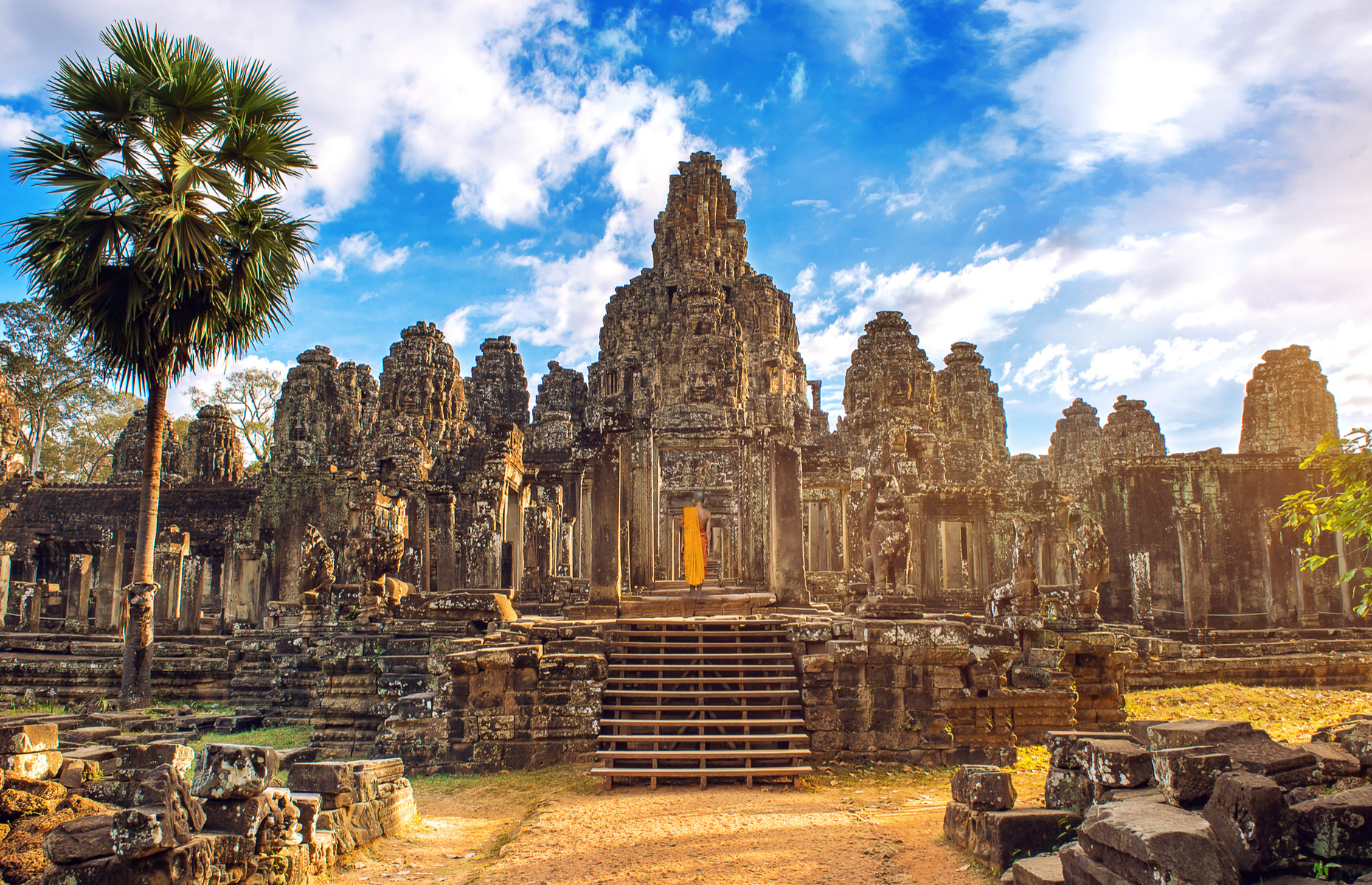
Angkor, Cambodia
Angkor , an architectural masterpiece in Cambodia, is a must-see on any trip to Southeast Asia. Founded in the 12th century by the Khmer Empire, this temple complex is considered one of the world’s greatest religious monuments. Its most striking attractions include the central temple of Angkor Wat, the Bayon temple featuring hundreds of faces carved in stone, and the jungle-covered Ta Prohm temple. Located just a few minutes from the town of Siem Reap, Angkor also offers exceptionally magical sunrise visits.

Railay Beach, Thailand
Located in southern Thailand’s Krabi province , Railay Beach is a tropical paradise nestled between limestone cliffs on the Andaman Sea. Its fine sand and clear waters offer exceptional opportunities for swimming and kayaking. Accessible by boat, the site includes Phra Nang, just off Railay Beach, and other explorable caves with imposing stalactites.
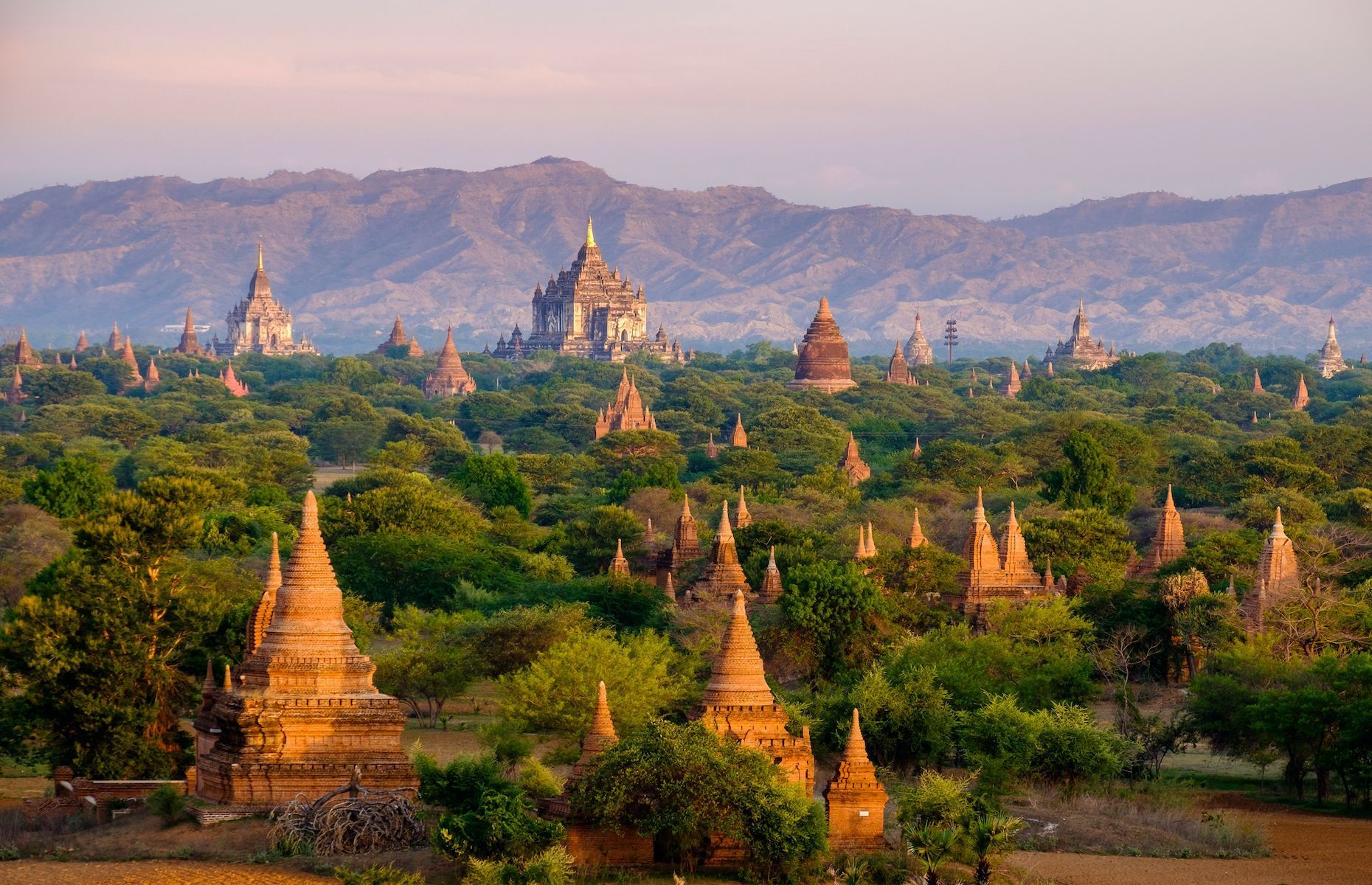
Bagan, Myanmar
The enigmatic city of Bagan is an extraordinary archaeological site featuring thousands of temples scattered over a vast territory in the heart of Myanmar. Visit historical monuments like the Ananda and Dhammayangyi Temples and don’t forget to book a cruise on the Ayeyarwady River to admire the landscape from a different perspective. For a truly magical experience, climb aboard a hot-air balloon at sunrise or sunset for an incredible view of Bagan—you won’t regret it!
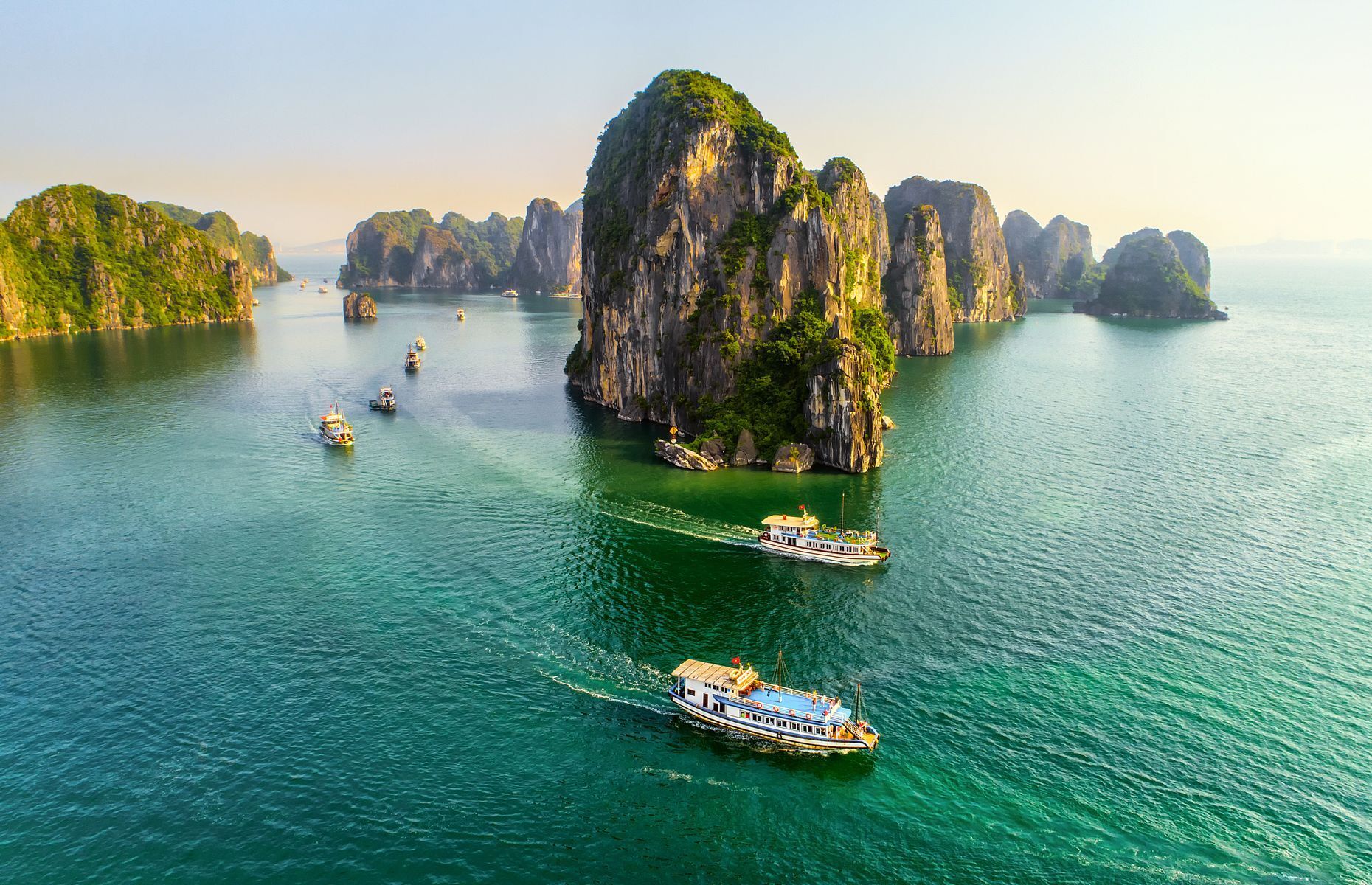
Ha Long Bay, Vietnam
Certainly one of Southeast Asia’s most emblematic locales, Ha Long Bay is not only a north Vietnamese natural treasure, but also a UNESCO World Heritage Site. Thousands of karst islands, covered in lush vegetation, emerge from emerald waters to create a most impressive landscape. Take a trip on a traditional boat to explore its caves and hidden lagoons or opt for kayaking and paddle among its picturesque rock formations. For optimum temperatures outside of the rainy season, schedule your trip between October and April.
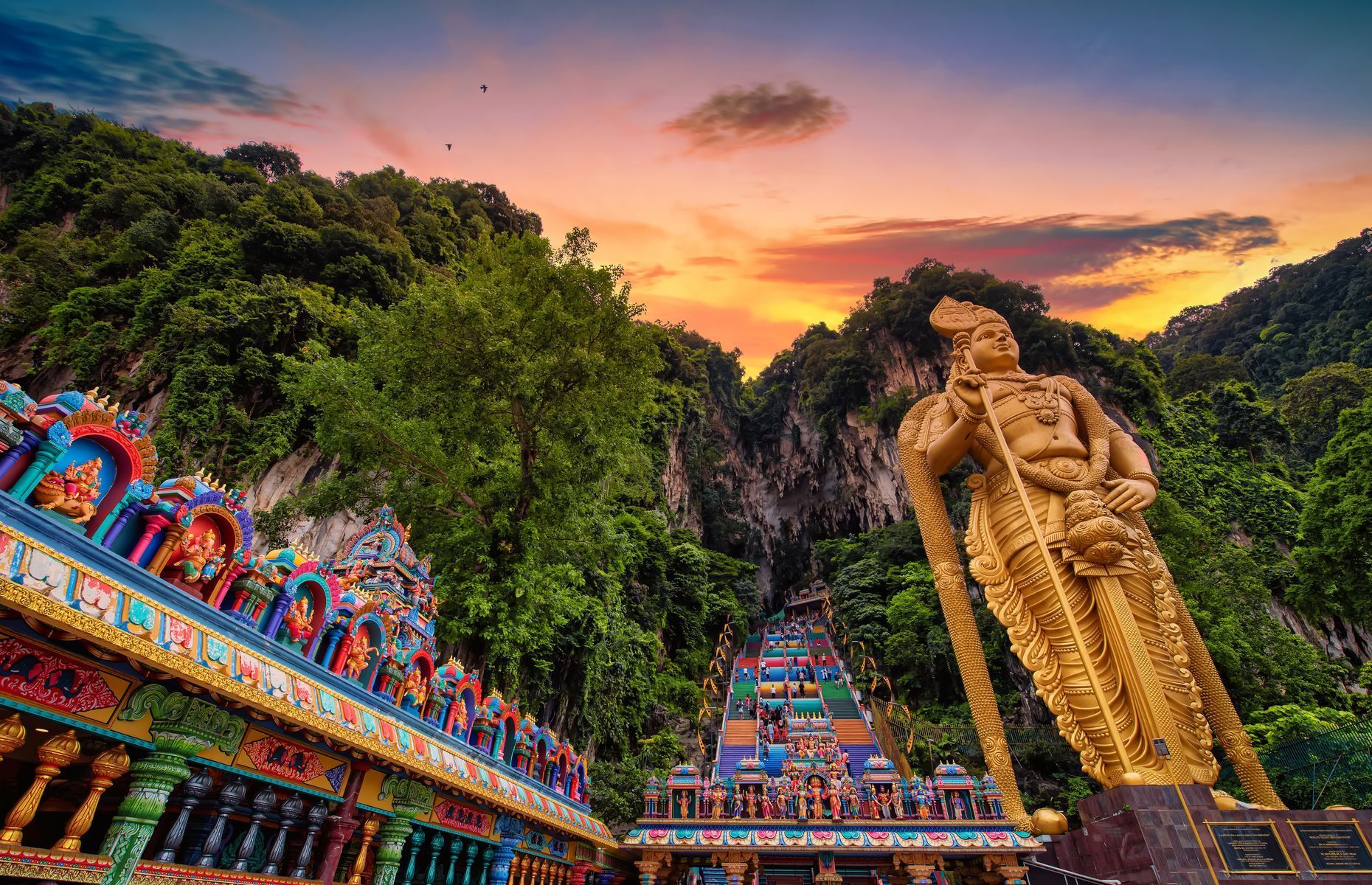
Batu Caves, Malaysia
You’ll find the Batu Caves about 15 minutes by car from Kuala Lumpur. These geological and cultural wonders captivate visitors from all over the world. After climbing 272 steps, visit a series of fascinating caverns adorned with gigantic statues of Hindu deities. Considered sanctuaries, the Batu Caves are open to visitors year-round, but the best moment to see them is in January or February during the Thaipusam celebrations when festive decorations bring the caves to life.
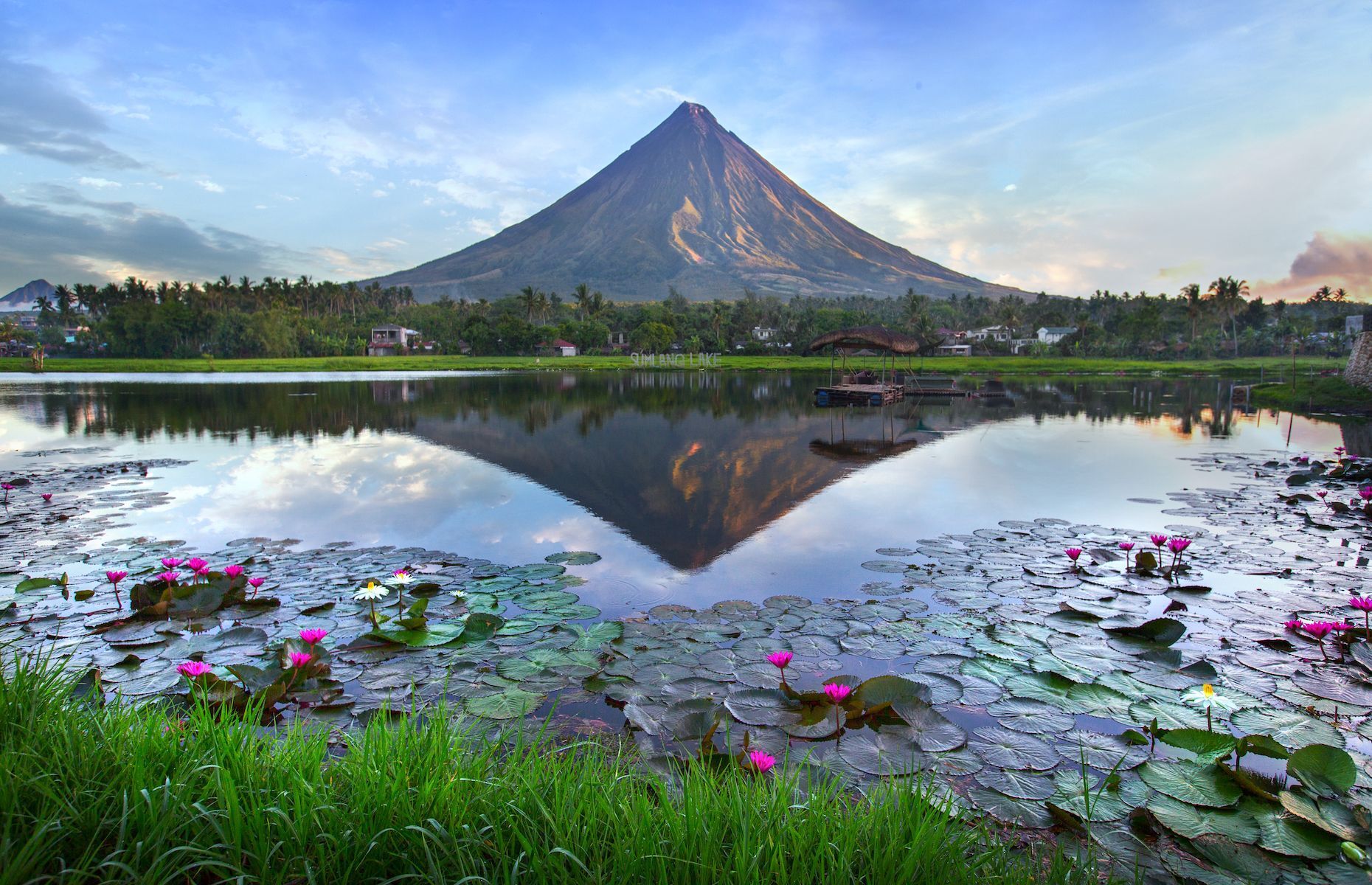
Bicol, Philippines
Nature lovers are in for a treat when they visit the Philippines’ Bicol region and its imposing, majestic Mayon volcano between December and April. Seashore lovers will appreciate the palm-fringed beaches of Caramoan and Donsol, famous for whale shark sightings. Travellers can also explore the Calaguas Caves and hike through a rainforest.

Omar Ali Saifuddien Mosque, Brunei
A true work of architectural art, the Omar Ali Saifuddien Mosque graces the heart of Brunei’s capital Bandar Seri Begawan. A symbol of elegance and the country’s Islamic faith, the mosque will leave you breathless with its magnificent golden dome, slender minarets, and opulent gardens. Non-Muslims can now go inside, but silence is mandatory, photos are forbidden, and shoes must be removed before entering.
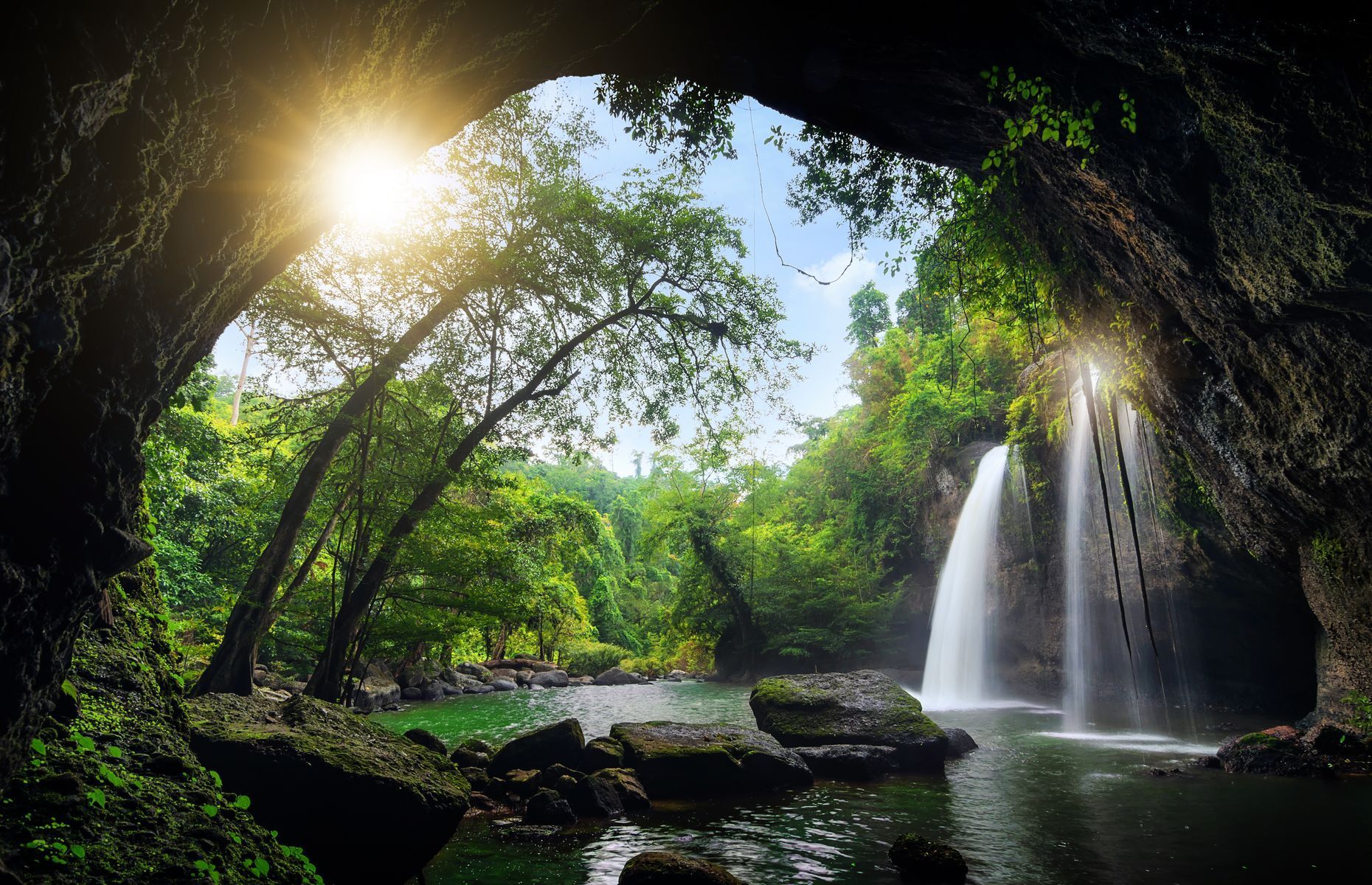
Khao Yai National Park, Thailand
A true natural sanctuary and Thailand’s oldest national park, Khao Yai attracts its share of plant and wildlife lovers. In fact, its dense forests are one of the best places in Southeast Asia to observe wild elephants. Admire macaques, jackals, and bears as well, plus a multitude of majestic waterfalls, including Haew Suwat. The falls dry up in summer, however, so the best time to visit Khao Yai Park is during the cool season between November and February.
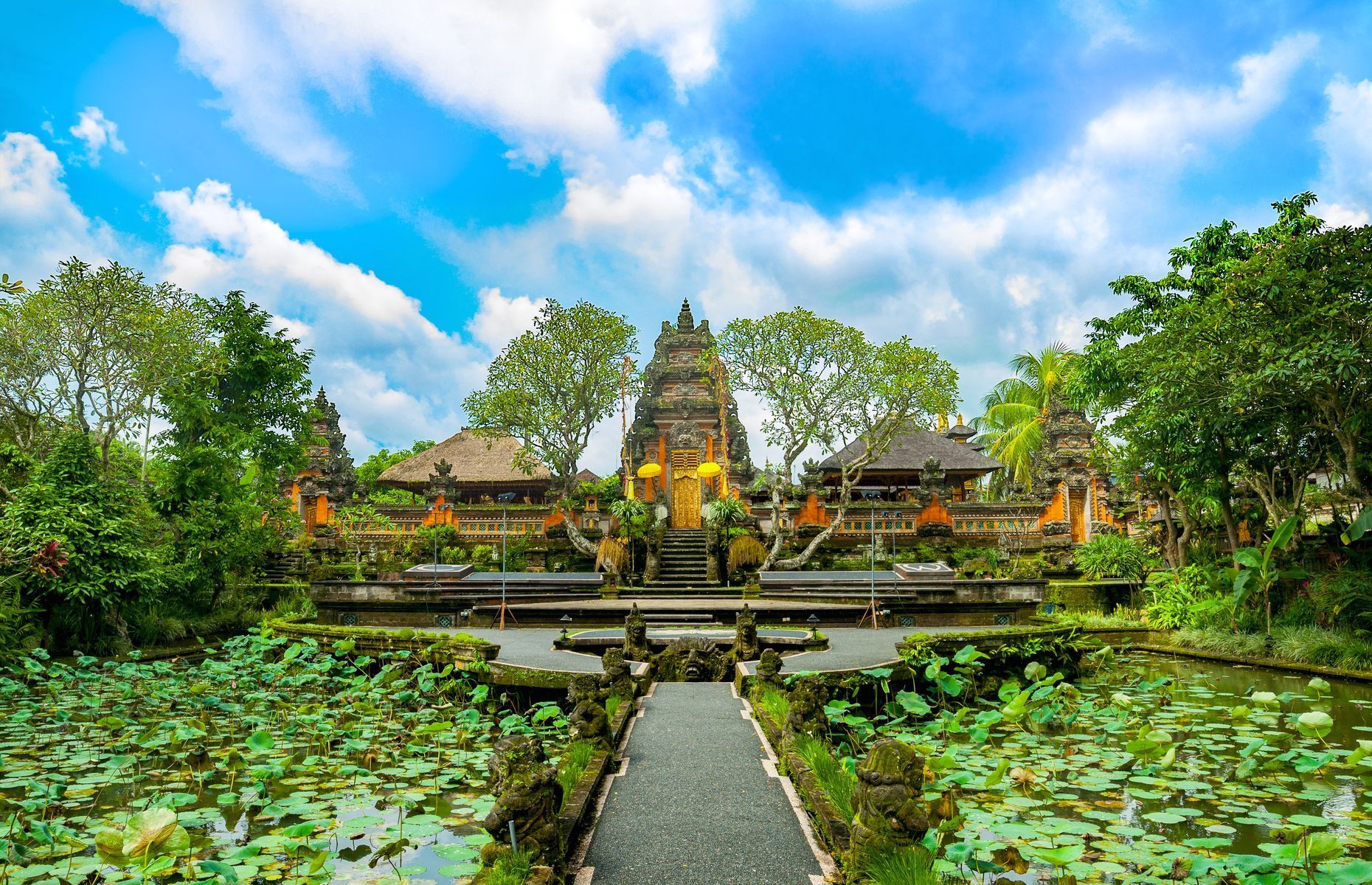
Ubud, Indonesia
Nestled in the heart of the Indonesian island of Bali, Ubud is a cultural and natural haven of peace. From the lush rice terraces of Tegallalang and legendary Saraswati temple to the Monkey Forest in the heart of the city, there’s no shortage of interesting things to do. Art enthusiasts will be especially delighted as Ubud’s renowned galleries, craft studios, and market offer superb local creations. This tranquil town is also ideal for yoga retreats and Balinese cooking classes.
Gardens by the Bay, Singapore
Exquisite botanical gardens and exotic greenhouses have made Gardens by the Bay a Singapore landmark. The futuristic oasis awaits on the Marina Bay waterfront. Home to an impressive collection of plants from the four corners of the globe, the Cloud Forest Dome and Flower Dome will be among the highlights of any visit. Also stop at the zoo and historical Chinatown during your stay in Singapore.
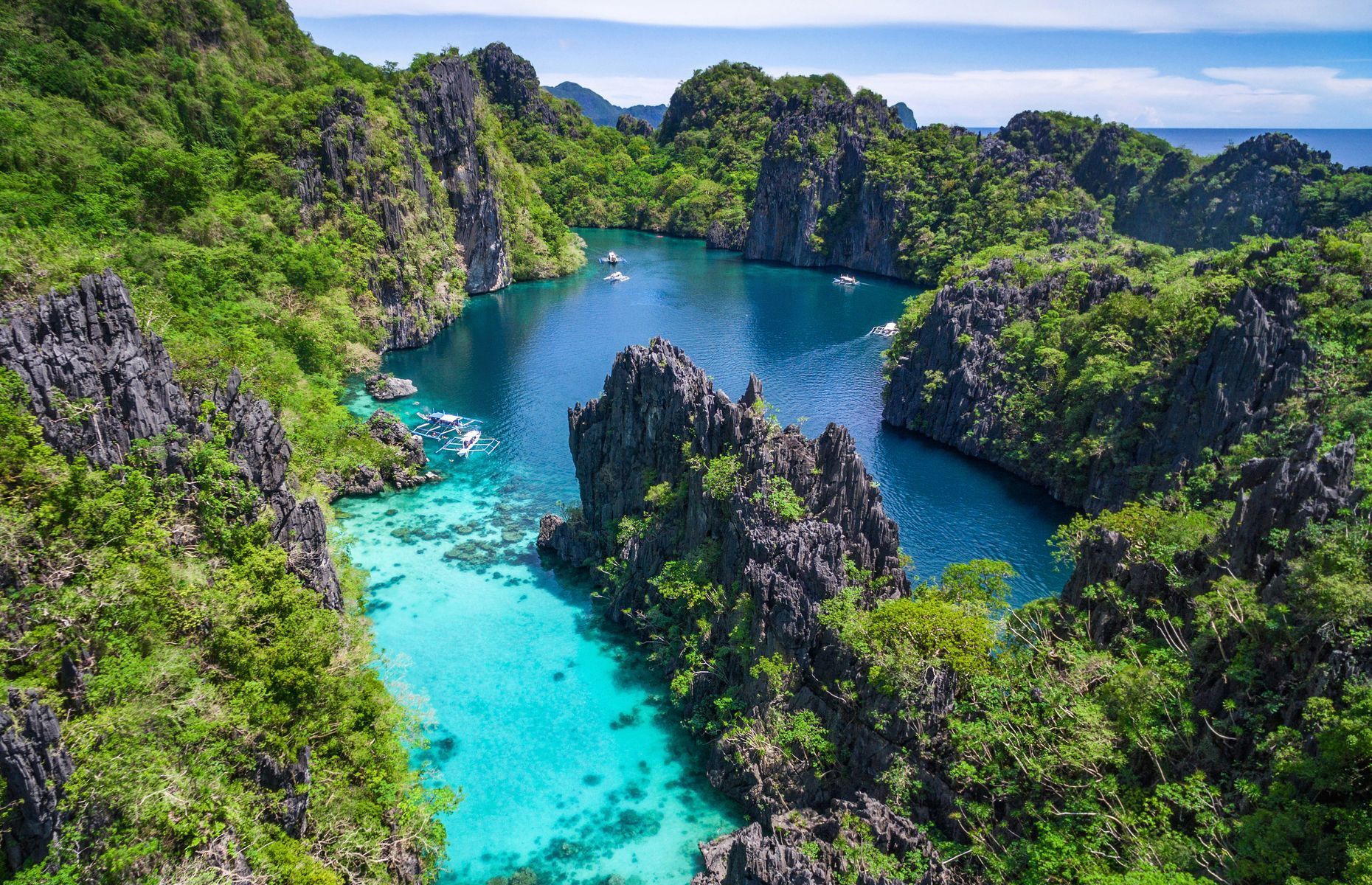
El Nido, Philippines
Visitors to El Nido , in the Philippines’ Palawan archipelago, will find its heavenly beaches the stuff of dreams. Impressive limestone karsts populate blue-green waters in stunning seascapes. Don’t hesitate to book a boat trip to discover hidden lagoons, white-sand beaches, and abundant coral reefs, perfect for snorkelling and scuba diving.
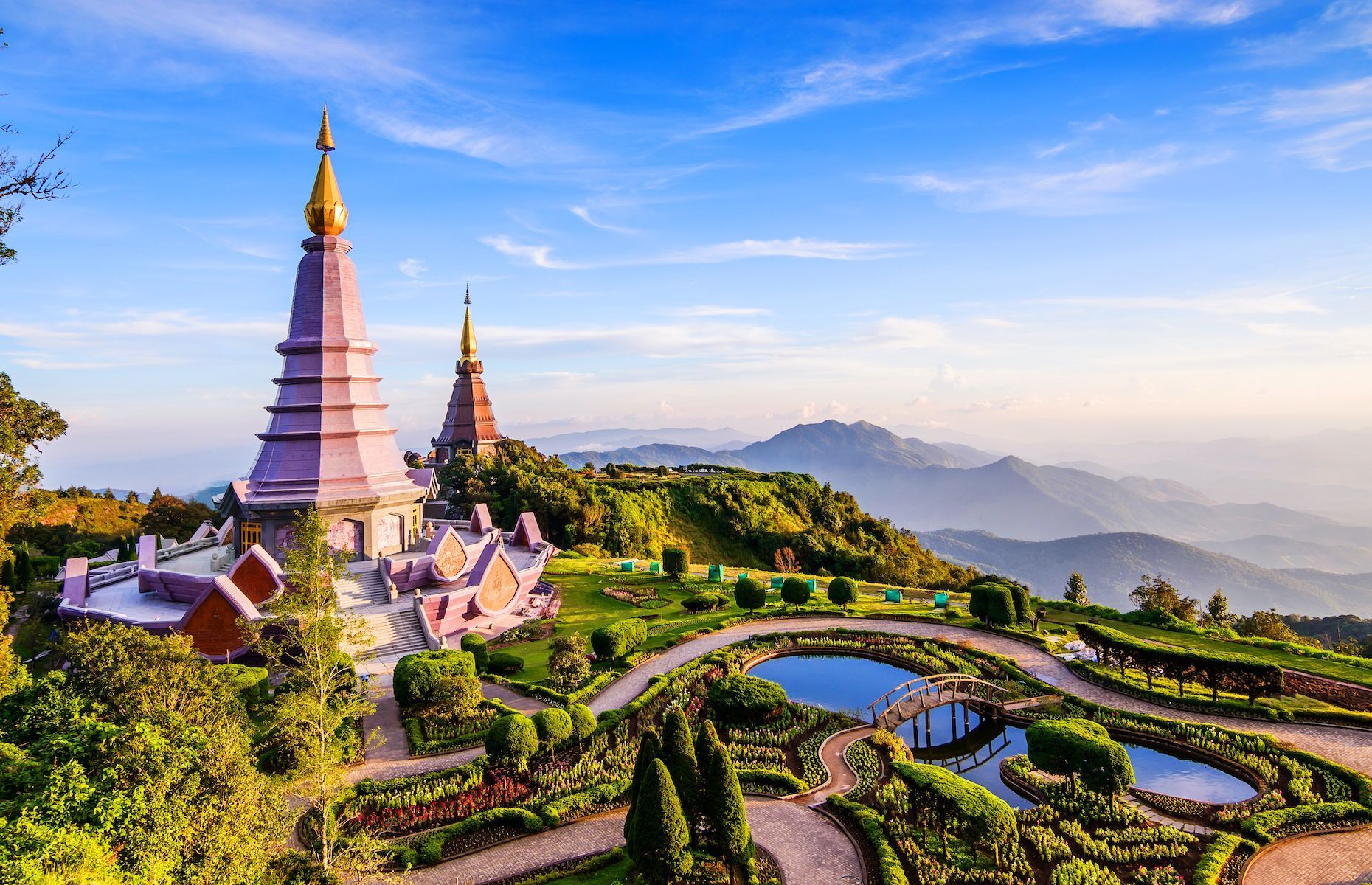
Chiang Mai, Thailand
In contrast to the bustling capital of Bangkok, Chiang Mai is an enchanting city found in the country’s northern region and ideal for travellers to Thailand looking for a little peace and quiet. You’ll find hundreds of magnificent temples, including Wat Phra Singh and the mountain-top Wat Phra That Doi Suthep offering phenomenal panoramic views. Trekking to the top of Doi Inthanon National Park and strolling through an old canal-lined village are two more must-do activities to add to your itinerary.
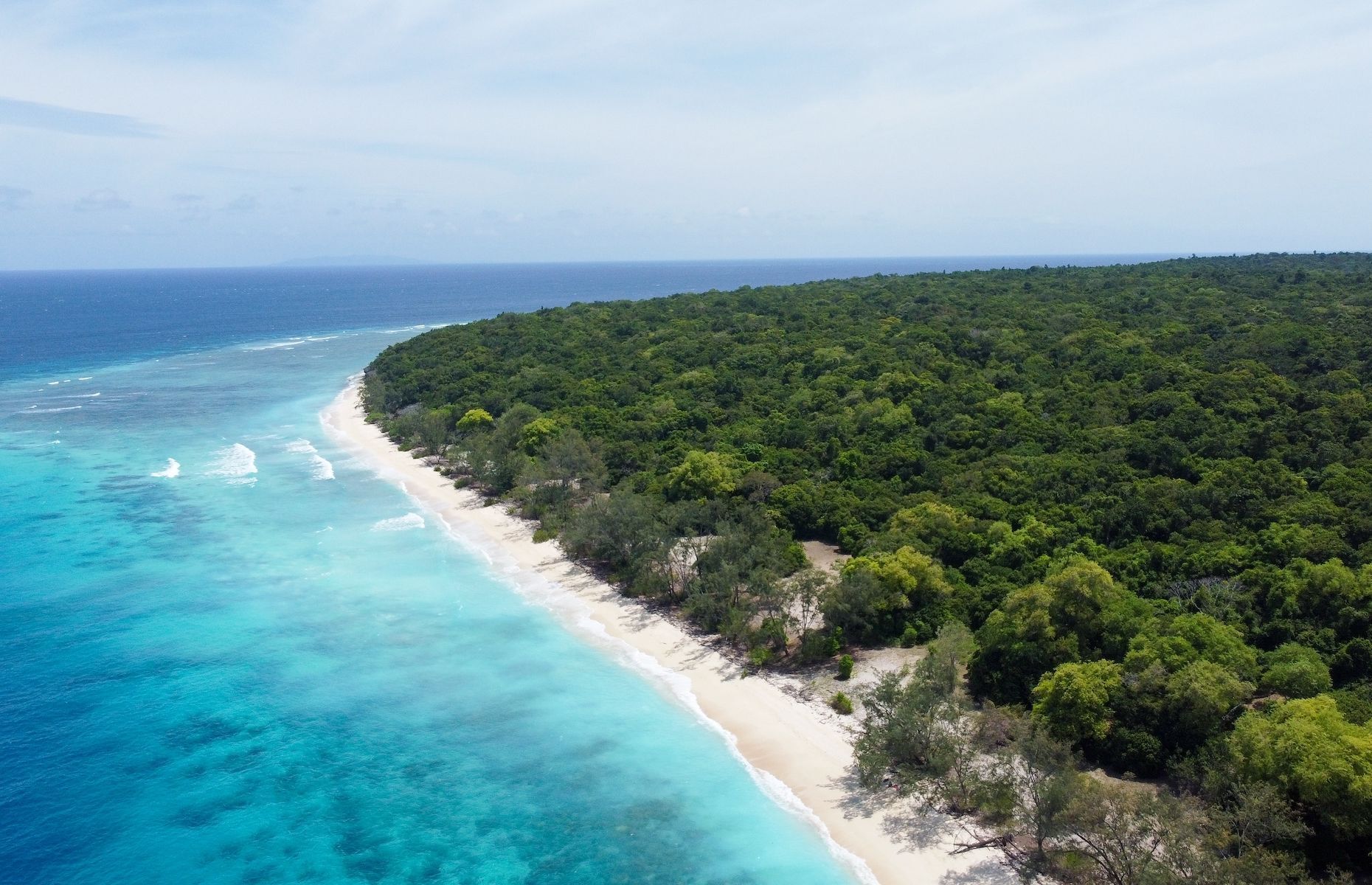
Jaco Island, East Timor
East Timor’s Jaco Island is a secluded natural gem offering adventurous travellers a serene getaway in the heart of an untouched landscape. Pristine palm-fringed beaches and crystal-clear waters, ideal for snorkelling, are just some of its top attractions. The desert island also boasts abundant marine life and is a haven for seabirds, making it perfect for observing wildlife.
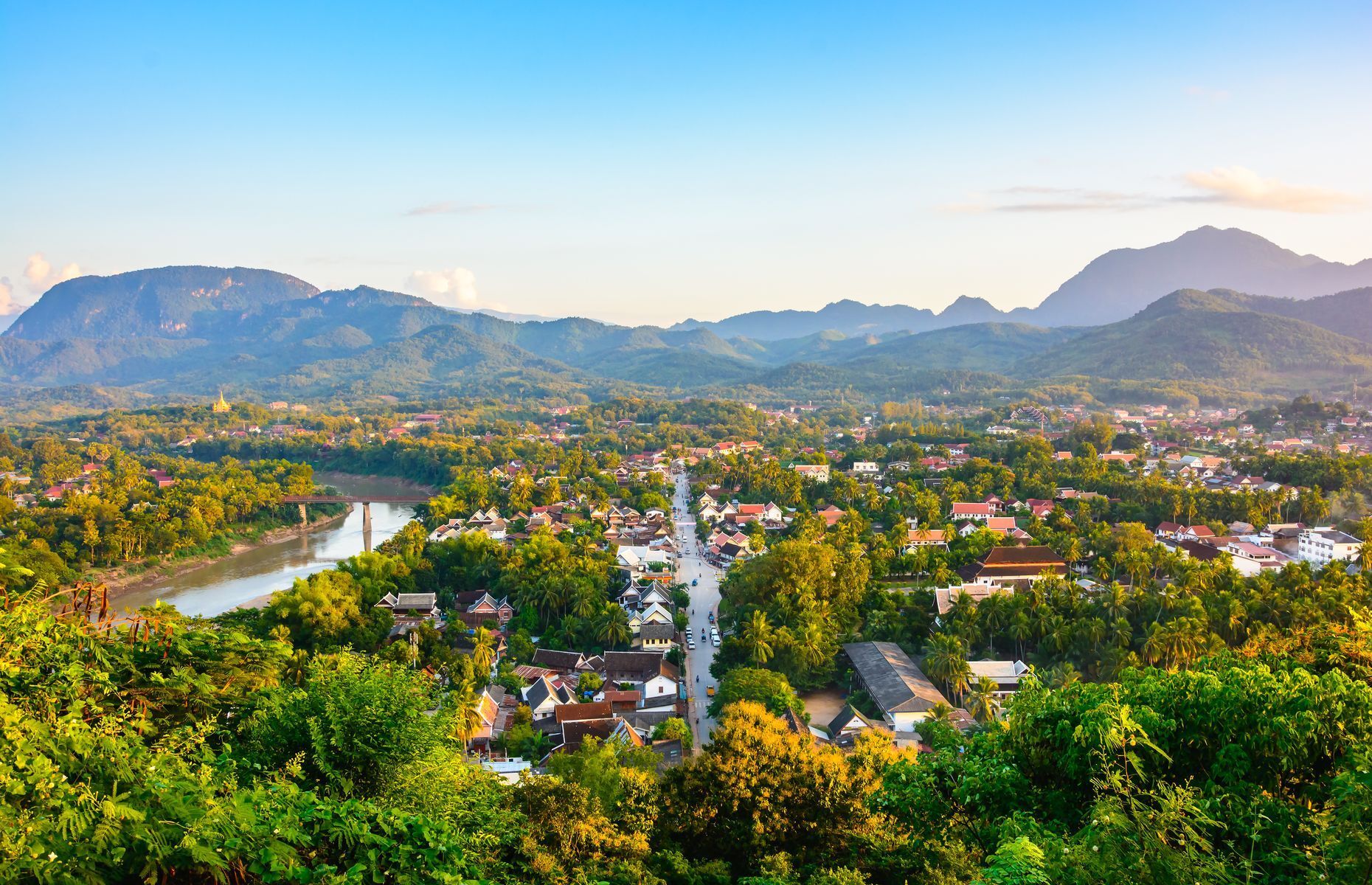
Luang Prabang, Laos
The charming town of Luang Prabang is a UNESCO World Heritage Site and a true jewel of Southeast Asia. Nestled in northern Laos on the banks of the Mekong River, Luang Prabang is home to Buddhist temples and a variety of museums, including the Royal Palace Museum. Its many night markets are also superb for exploring culinary delights.
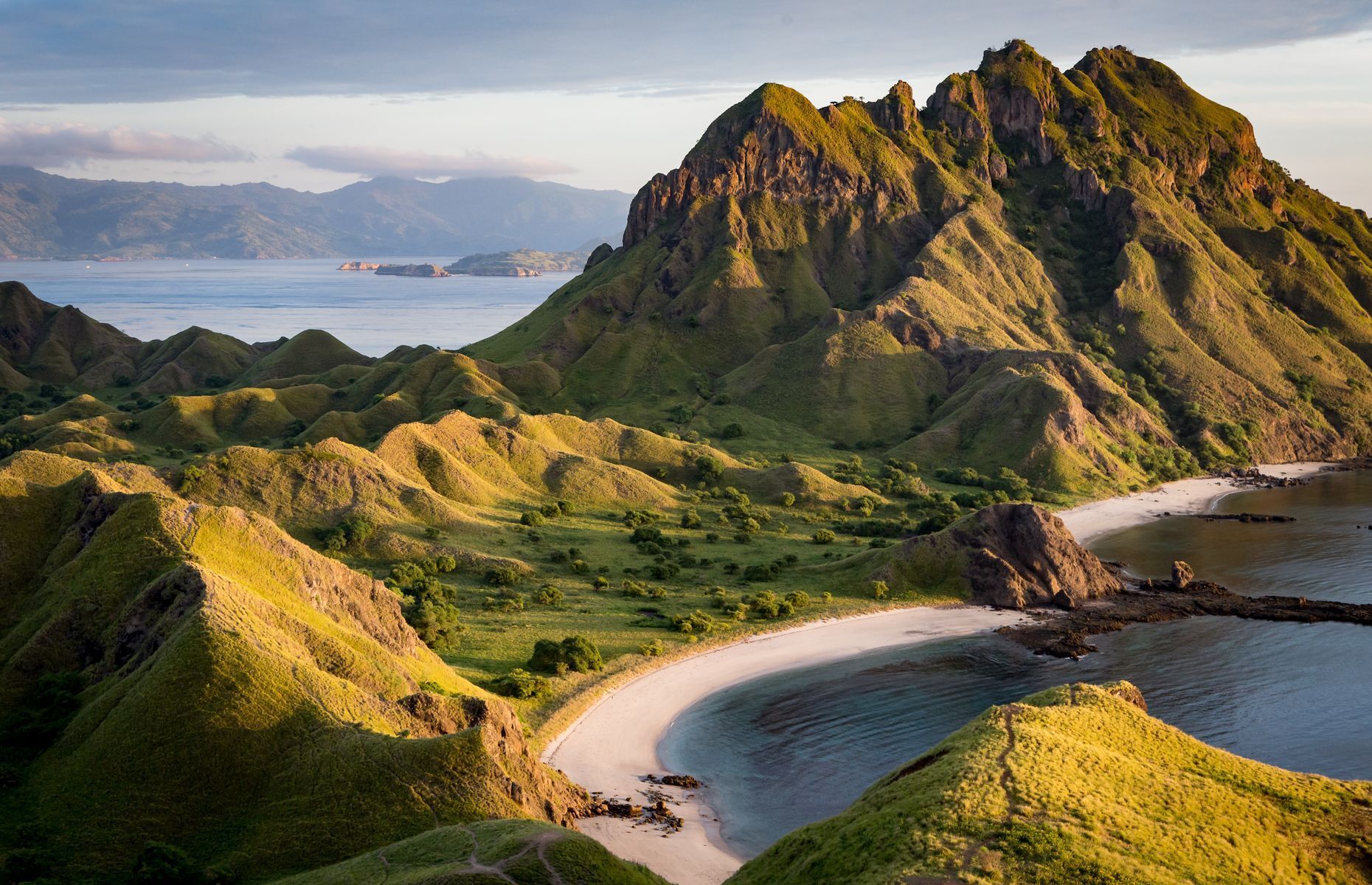
Komodo Island, Indonesia
Komodo Island, in the Indonesian archipelago, is the best place to get up close and personal with Komodo dragons, the world’s largest free-ranging lizards. For a closer look, book a guided tour of the Komodo National Park . Those who prefer relaxing by the sea should stop off at the sublime—and aptly named—pink beach . Its bright colour comes from a mixture of coral insect shells and white sand. The beach is also a popular spot for diving.

Gunung Mulu National Park, Malaysia
Located in the Malaysian state of Sarawak, Gunung Mulu National Park is a jewel of biodiversity and a UNESCO World Heritage Site. Hike through this mythical site and see amazing karst formations, deep canyons, and immense caves inhabited by thousands of bats. Only accessible by air, this remote tropical location is definitely worth adding to your Malaysian itinerary.

Hoi An, Vietnam
Located on Vietnam’s central coast, Hoi An will immediately enchant visitors with its ancient architecture, covered bridge, and narrow streets illuminated at night by colourful lanterns. The area is famous as a former trading port on the Silk Road and is home to many talented tailors ready to create high-quality bespoke garments. Plan your stay between February and May to make the most of its historical district and local markets. Plus, take a bike tour through the surrounding rice paddies.

Kuala Lumpur, Malaysia
Capital of Malaysia, Kuala Lumpur is a vibrant, cosmopolitan metropolis that combines tradition and modernity. Among its finest attractions are the famous Petronas Twin Towers, offering exceptional panoramic views from an observation deck. Also be sure to visit Merdeka Square’s majestic colonial buildings, Sultan Abdul Samad’s palace, and the city’s night markets while in Kuala Lumpur.
More for You
Golf commentators forced to apologize to viewers after furious Jordan Spieth moment at Open
Kevin O'Leary explained how you can live off $500K and ‘do nothing else to make money' — but is it realistic for your retirement?
At least 11 dead and dozens missing after bridge collapses during heavy flooding
I tried the same chicken sandwich at McDonald's and Chick-fil-A, and I'd stick with the cheaper one next time
If Mushrooms Are Growing in Your Lawn, This Is What It Means
Governor declares state of emergency until October in face of monstrous fires ripping through miles of land: 'Growing at a concerning pace'
Overlooked Gems: 25 Actors Hidden Behind Famous Roles
What Does GTO Stand For On The Pontiac Muscle Car?
Why Flight Attendants Always Sit on Their Hands During Takeoff and Landing
Causes Of Death Of Royals: What They Died From
Do I have to pay off my spouse's debts when they die? Here's what you're responsible for after a loved one's death — plus ways to protect your family's finances
The Crucial Mistake You Should Avoid When Growing Onions
More evidence suggests regular consumption of melatonin can reduce chances of age-related macular degeneration
Should a Restaurant Be Able to Tell Me When I Have to Leave My Table?
Steelers QB Russell Wilson labeled as cut candidate
Hear what Bob Newhart said to unemployed comedian who asked for advice (1995)
Which Countries Have Ordered The Embraer C-390 & Who Will Be Next?
This New Cruise Lets You Spend the Rest of Your Life on a Ship
11 Plants That Repel and Keep Rabbits Out of Your Yard
‘Father of the 401(K)’ is ‘very disturbed’ by the corporate greed in workplace retirement plans — here’s why

IMAGES
VIDEO
COMMENTS
This makes it a year-round travel destination. The best time to visit will really come down to which country you would like to visit and what you want to do. Generally speaking, the best time to visit most places in Southeast Asia is from November to February when the weather is dry (driest) and warm (on average). Wet-season monsoon rains fall ...
Final Thoughts on the Best Time To Travel to Southeast Asia. There is no hard and fast rule about the best time to travel in Southeast Asia. Even during the peak of monsoon season, most areas are welcoming of tourists - you can even get big discounts on accommodation and tours!
In Southeast Asia, which includes countries like Thailand, Vietnam, Cambodia, and Laos, the prime time to visit is usually from November to February. During these months, the weather is pleasantly dry and cool, with temperatures ranging from 75°F to 90°F (24°C to 32°C).
Generally speaking, October - March is the best time to travel in Southeast Asia as this is the dry season and the weather is cooler and more manageable. However, research the individual countries you want to visit to plan which month would be best for you to travel. ... There's a reason that Southeast Asia is one of the best places to ...
The best time to visit Southeast Asia depends on where you want to go and what you want to do. There are some significant climate variations across the region, but rather than limiting possibilities, this makes Southeast Asia a year-round destination with good conditions for exploring throughout the year.
Which Countries to Visit in Southeast Asia in 10 Days. For a 10-day trip to Southeast Asia, you're suggested to focus on one country or two neighboring countries to have an in-depth experience instead of rushing through multiple destinations. In addition, you would reduce travel fatigue and save money on transportation costs.
2 months is the perfect minimum time to enjoy all four countries in mainland Southeast Asia and travel through them overland without having to rush. With at least 6 to 8 weeks you can follow the complete so-called Banana Pancake Trail , a famed Southeast Asia backpacker route that mainly runs through Thailand, Laos, Cambodia, and Vietnam ...
Among all our couples' and family clients' choices, the best-selling itineraries cover the Southeast Asia travel hubs of Thailand (Bangkok, Chiang Mai, Phuket / Koh Samui), Vietnam (Halong Bay, Hanoi, Hoi An, Ho Chi Minh) and Cambodia (Angkor Wat). >>How to Plan a 3-Week Thailand, Cambodia, and Vietnam Tour Bali in Indonesia, known locally as 'the Island of the Gods', is one of the best ...
The best time to visit Southeast Asia is generally between November and February, when most countries are dry and pleasantly warm. However, as our guide to the best time to visit Southeast Asia explains, other factors to consider include monsoons, festivals and full moons.
The best time to visit Southeast Asia depends on which country you are planning to visit. You may wish to explore UNESCO-listed heritage sites such as Angkor Wat or Borobudur Temple, or meander down the Mekong in Vietnam aboard a luxury cruise ship.
When is the best time of year to visit? Much of Southeast Asia has two seasons: Dry and wet. Go further north to Japan, Korea, and China, and you'll find much cooler winter temperatures. But for many countries in Southeast Asia, it's hot and humid year-round. So the question isn't how to make sure you find the warm temperatures you're after. It ...
After a number of long-term visits over the years to varying countries in Southeast Asia, I've learned a thing or two. Beginner travelers should check out these travel tips and follow this Southeast Asia travel advice when considering a visit to the region for the first time. 1. Pick your countries wisely
The best time to visit Southeast Asia is an important consideration in vacation planning for such a vast region, with its diverse countries, colorful festivals, weather patterns and micro-climates, especially with activities like diving, trekking, swimming, cruising and volcano scaling to partake in.
Weather patterns vary wildly even within the same country -- in Thailand, for instance, when it's the sunny dry season in Phuket, it's time for monsoons less than 200 miles away on the island of Koh Samui.
The best countries to visit in Southeast Asia depend hugely on what you're looking for. They're all great in their own ways, but there are always subjective reasons to prefer one over another. ... Especially for a first-time Southeast Asia trip. Southeast Asia can be bewildering at first, but Thailand lets you ease into things; it's ...
This gives visitors a chance to mix things up - to go with the crowds to see the most popular spots, but also make time to discover new and different corners of Southeast Asia. Whatever your heart is set on, here is a list of the best places to visit in Southeast Asia.
On The Go's guide to the best time of year to visit Southeast Asia, with information about annual rainfall, average temperatures, and more. (US) tel:1-866-606-2960 ... Best Places To Visit. Best Time to Visit. Multi-country Tours. Tourist Visas. Traveller Reviews. Temples of Angkor.
By far the largest country in Southeast Asia, Indonesia lies at the southern end of the region and consists of roughly 17,500 islands, including Sumatra and Bali. With so many islands, it's no ...
Best Time to Visit mainland Southeast Asia (Northern Thailand, Laos, Cambodia, Vietnam) For a typical loop of Southeast Asia, loosely speaking November to February would be a decent time to aim for with December and January offering the best conditions with the odd exception.
4. Siem Reap, Cambodia. Best for intimate small city vibes and ethical tourism. The fame of Angkor Wat, and other temples like Ta Prohm and Banteay Srei, can sometimes eclipse what Siem Reap is all about. Past the world-famous sites, the humble city, in its small craft markets and leisurely street-side dining, offers an authentic look at its people who have lived in the heritage site's shadow.
1. Indonesia: Sunny Tropical Beach Paradise. Recommended stay: 1 to 2 weeks; August is one of the best times to visit Indonesia: August has brightest skies, pleasant temperatures of 23-30°C (73-86°F), and calm seas.. August's ideal weather offers you a well-rounded range of experiences.
Angkor, an architectural masterpiece in Cambodia, is a must-see on any trip to Southeast Asia.Founded in the 12th century by the Khmer Empire, this temple complex is considered one of the world ...
The best time to visit Southeast Asia is generally between November and February, when most countries are dry and pleasantly warm. However, as our guide to the best time to visit Southeast Asia explains, other factors to consider include monsoons, festivals and full moons.
Dr Samanta Lal Sen, Minister of Health & Family Welfare, Bangladesh Dr Rokeya Sultana, State Minister of Health & Family Welfare, Bangladesh Mr Md Jahangir Alam, Secretary, Ministry of Health & Family Welfare Chair of this Assembly, Major General Mohammad Yousuf, Heads of National Regulatory Authorities, Representatives of our Member States, Development Partners, Colleagues from Headquarters ...
By Friday afternoon, more than 2,000 flights across the country had been canceled, according to FlightAware, compared with about 900 on Thursday. But it was far from the country's worst travel ...